Diving into work that others avoid

Seven years after splitting to launch Farpoint, Sterling Bay co-founder Scott Goodman puts his stamp on the city with high-pro le projects like the Michael Reese redevelopment I
 BY DANNY ECKER
BY DANNY ECKER
Scott Goodman spent three decades tapping private investors to help turn Sterling Bay from a two-person real estate startup into one of Chicago’s most prominent developers. For his second act, he’s leaning a lot more on the public sector.
Seven years after walking away from the Chicago real estate powerhouse he co-founded, Goodman’s Farpoint Development is emerging as a power player with a collection of high-pro le projects: e rm leads a team of developers that began work in March on a $3.8 billion transformation of the
Hobson’s choices are getting a bit awkward
As Ariel co-CEO, she manages union pension funds; at Starbucks, she ghts unionization campaign
BY BRANDON DUPRÉ
e high-pro le, increasingly bitter union organizing campaign at Starbucks puts Mellody Hobson in a tight spot.
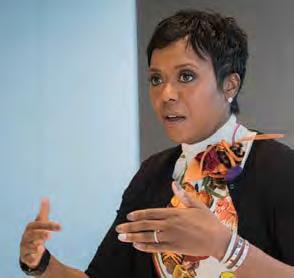
In her day job, she’s co-CEO of Ariel Investments, which manages hundreds of millions in pension funds for union workers, including members of the Service Employees International Union. On the side, she serves as chairman of Starbucks as it battles SEIU’s e orts to unionize the co ee chain’s stores.
“It’s a contradictory position she nds herself in,” said Robert Bruno, a professor and director of the labor studies program at the University of Illinois at Urbana-Champaign.
Starbucks’ resistance to unionization is at odds with Ariel’s interests as a union pension fund manager. Growth in union membership at Starbucks and elsewhere would be good for Ariel’s business; more union mem-
bers means more union pension money to manage.
Hobson also risks alienating current Ariel clients such as the SEIU and other unions. While in most cases the unions don’t have outright control over the pension funds and their investing decisions, unions could exert pressure on fund trustees to dump Ariel.
Still, Hobson says in a statement that “I see no con ict in my primary day job as co-CEO and
GUIDE TO STRATEGIC GIVING
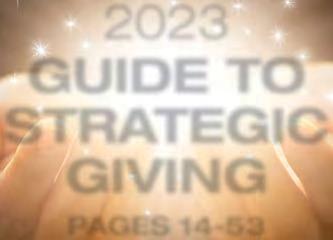

PAGES 14-53

REAL
Sam Zell’s companies face a future without their charismatic chairman. PAGE 4
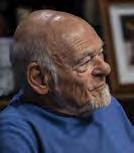

Bears don’t need taxpayer help to move to Arlington Heights. PAGE 3

JOHN R. BOEHM VOL. 46, NO. 21 l COPYRIGHT 2023 CRAIN COMMUNICATIONS INC. l ALL RIGHTS RESERVED CHICAGOBUSINESS.COM | MAY 22, 2023 | $3.50
JOE CAHILL
ESTATE
“SCOTT IS THE FACILITATOR AND THE ONE WHO IS ALWAYS ABLE TO FIND CONSENSUS.”
Zeb McLaurin, a partner with Goodman on the Bronzeville and Englewood projects
Scott Goodman
2023
Mellody Hobson
BLOOMBERG
See GOODMAN on Page 56
See HOBSON on Page 58
Interpreting what Johnson says — and doesn’t say
Iwrote recently about the two big crises Mayor Brandon Johnson will have to deal with as he tries to get his arms around his new and enormous job. at’s turning down the temperature on what could be a long, hot summer on the city’s streets, as well as nding the resources to feed, house and otherwise get on their feet the swarms of refugees and immigrants now packing city police stations and other available locales.
Johnson is o to a credible start on both, visiting one of those police stations to underline the city’s commitment to helping those in need, and hiring an experienced insider to serve as temporary police superintendent while a review panel vets candidates for the permanent job.
However, I should have mentioned a third crisis that’s building: city nances. Johnson’s marks on that are less impressive.
Johnson was unable to keep predecessor Lori Lightfoot’s team in place, but his selection
for city budget director, Annette Guzman, is well regarded from her stint as Cook County’s budget chief. Similarly, while an argument can be made that Johnson should have stayed out of the City Council chairmanship ght, his selection of Pat Dowell to head the powerful Committee on Finance was well considered. Dowell is seasoned and has a strong reputation for being level-headed. She also isn’t shy about speaking her mind. at’s a good combination.
But Johnson’s pals in the Chicago Teachers Union and related progressive interests did him no favor in rolling out a jaw-dropping plan for $12 billion in tax hikes and spending cuts, most of the last in an already depleted police department.
e plan is so ill-designed and counterproductive that it’s hard to know where to begin a critique. Let’s just say that imposing a city income tax on Chicago cou-
ples who collectively earn all of $100,000 a year makes Toni Preckwinkle’s defunct soda-pop tax look like political genius, that charging Chicago employers $33 a month for the privilege of hiring someone here is a terri c incentive to move to the suburbs or out of state, and that an annual “wealth tax” on the 10% of Chicagoans (whoever they are) it’s designed to a ect would hit not billionaires and millionaires so much as elderly people who have saved for retirement and other thrifty types who by no means are “rich.”
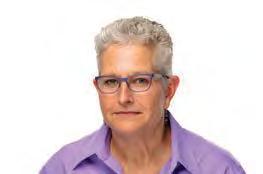
Team Johnson says this plan, which is based on but dramatically ramps up the $800 million tax hike he proposed during his election campaign, isn’t theirs and wasn’t vetted with them. Other, more suspicious types suspect the plan was one big trial balloon, or intended to give Johnson political cover when he rolls out something more moderate. Either way, by not ruling out such moves, the question
arises early his tenure of whether Johnson is mayor or training for a future job as a professor of socialist economics.
ere’s no question about another Johnson move. at was to stay out of the way and not object in recent days as the Illinois General Assembly moved to pass a pair of re ghter pension bills that, according to just-departed Chicago Chief Financial O cer Jennie Huang Bennett, will run up the city’s unfunded liability more than $3 billion and cost taxpayers an estimated $55 million in annual payments.
Johnson could have pushed Spring eld to delay action, giving him time to study whether this
costly move really was needed to x a aw in pension bene ts for workers hired on or after Jan. 1, 2011, so-called “Tier 2 employees.” In fact, he wouldn’t have had to go any further than his own deputy chief of sta , state Sen. Christina Pacione-Zayas, who is one of the chief sponsors of the bills. Didn’t happen. e unions wanted the bill. As a result, Johnson now either will have less money to spend on some of his much-promised e orts to ght crime by investing in deprived neighborhoods, or will expand that list of tax hikes (see above).
One step forward, another back. It augurs to be a very interesting few years at City Hall.
Spring eld’s top legislative cop has a long to-do list
Illinois Legislative Inspector General Michael McCuskey isn’t accidental anymore.
A former federal judge from the state’s central district, McCuskey, 74, overwhelmingly was approved for a full, ve-year term as the legislative branch’s watchdog in the waning weeks of the spring legislative session.
McCuskey stumbled into the role 15 months ago after he o ered himself up as an alternative when Democrats and Republicans again left the o ce vacant, brie y, while they were arguing over their preferred candidates.
e previous LIG, Carol Pope, had vacated the o ce with time remaining in her term after airing her frustrations that it wasn’t fully empowered. She was not the rst to complain. Another interim LIG, Julie Porter, and the rst LIG, Tom Homer, also have publicly complained and urged lawmakers to give the o ce more independence. e LIG should have the ability to issue subpoenas and should not have to ask a panel of lawmakers and former lawmakers on the state’s Legislative Ethics Commission if founded reports of wrongdoing may be made public, they’ve all said.
But, so far, McCuskey hasn’t shared those frustrations, which might be why he secured a full, veyear term.
McCuskey is settling into Springeld and plans to move to the city soon from his home north of Peoria.
Perhaps it’s the “ComEd Four” e ect, but McCuskey said his rst year was fairly uneventful.
He can’t reveal what kinds of complaints were led, but said there were 49 of them and his o ce looked into 14 of the 49. McCuskey said he didn’t ask the ethics commission for permission to publish any reports on those.
“We did not have one allegation or complaint in my rst year about corruption or fraud,” McCuskey told
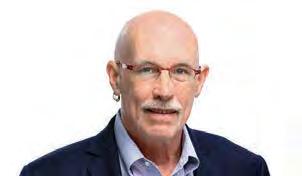

me. “I think it had something to do with the Northern District of Illinois, or what was going on in the Northern District of Illinois,” he said, referring to the recent ComEd corruption trial and the trial set for next April with former House Speaker Michael Madigan as the charged target. “It was a rather silent year.”
Having been a federal judge, McCuskey says he knows he’s never going to do a better job at investigating corruption than the feds in Chicago. “ at’s where it happens and that’s where it still happens today,” he said of the Northern District.
Instead, McCuskey believes he can provide a service by taking a proactive approach to preventing bad behavior and ethical lapses.
His o ce in the Stratton Building in Spring eld is open every weekday, and they regularly take calls and direct those with non-legislative branch concerns to the proper authorities.
“Everyone thinks our o ce is so much bigger than it is,” McCuskey said. “We’re limited to the Legislature, their sta and employees, and we’ve never been a prosecutor. We say go to our website and see what we can do. We get paid to help people navigate government and that’s why I like it. I get to help people and I also get to help people not make mistakes.
“A lot of times we get things resolved behind the scenes before somebody makes a mistake,” he added.
Still, people in the Capitol are far from perfect. A few weeks ago, veteran state Rep. Mary Flowers made headlines when House Speaker Chris Welch announced he was taking away her leadership position and ability to attend Democratic caucus meetings because of what he said was a history of inappropriate comments and bullying behavior.
ere also was talk of an incident in which one lawmaker directed an “F” bomb at another.
But McCuskey couldn’t act on either of those. He has no jurisdiction over what happens in private caucus meetings and the legislative section of the Illinois Constitution actually says, “A member shall not be held to answer before any other tribunal for any speech or debate, written or oral, in either house. ese immunities shall apply to committee and legislative commission proceedings.” Pathetic, but true.
Still, McCuskey thinks he can make a di erence with a proactive, preventive approach. He wants to make a di erence by teaching people about statutory and ethical requirements so fewer people make
fewer mistakes. “I want to keep it to as few bad apples as possible. You’ve been around government long enough to know they’re in both parties and all over geographically.” ose bad apples? Well, federal o cials in Chicago, with their vast resources, will keep chipping away.
“I think there was a di erent feeling in the Legislature that
things are going on. I just think they were in fear of the Northern District,” McCuskey said, “which they should be.”
Madeleine Doubek is executive director of Change Illinois, a nonpartisan nonpro t that advocates for ethical and e cient government.
2 MAY 22, 2023 • CRAIN’S CHICAGO BUSINESS WINTRUS T. CO M/WIN YEARS IN A RO W GREENWICH AW ARD WINNER THE WINS KEEP CO MING Banking products provided by Wintrust Financial Corp. banks. Source: Coalition Greenwich 2022 Commercial Banking Program. MADELEINE DOUBEK ON GOVERNMENT
GREG HINZ ON POLITICS
JOE CAHILL ON BUSINESS Call the Bears’ blu on subsidies
It’s clear to anyone paying attention that the Chicago Bears are leaving Soldier Field for Arlington Heights.
Anyone, it seems, except politicians in the northwest suburbs, who apparently believe the team won’t come without generous taxpayer subsidies. State legislators who represent the area in Spring eld are pushing a bill in the Illinois House that would authorize the village to give the Bears a special deal on property taxes. Village o cials haven’t spoken out on the bill, but it’s unlikely the legislators would oat the subsidy measure if local leaders weren’t onboard.
Johnson allies push $12B financial package, taxes
The proposal — titled ‘First We Get The Money’ — also outlines cuts in police spending, as well as a reinstatement of the head tax, creation of a high-end real estate transaction fee and more I
BY GREG HINZ
Allies of Mayor Brandon Johnson rolled out a $12 billion nancial proposal last week that doubles down on controversial tax-hike ideas pitched by Johnson during his campaign and adds a few more — including enactment of a city wealth tax and income tax, deep cuts in police spending, and an e ective end to all tax-increment nancing projects.
Authors of the proposal, which also includes a tax on vacant high-end rental apartments, say they’re not fronting for Johnson and suggest they rather are trying to hold his feet to the re and push him to stand by his campaign promises in a way they believe former Mayor Lori Lightfoot did not.
See JOHNSON on Page 57
THE PLAN INCLUDES A MOVE TO IMPOSE A CITY INCOME TAX OF 3.5% ON ANY HOUSEHOLD WITH INCOME ABOVE $100,000 A YEAR.
If feds kill Amgen merger, Horizon’s options shrink
The FTC’s lawsuit — the rst challenge to a pharmaceutical deal in recent memory, according to the agency — targets unusual anti-competitive concerns, experts say
BY KATHERINE DAVIS
Horizon erapeutics may soon face an existential crisis if federal regulators successfully block its proposed $27.8 billion merger with Amgen, a move that would force it to remain independent or nd a new buyer regulators would approve.
Horizon’s future became murky May 16 after the Federal Trade Commission led a lawsuit to block its merger with California pharma giant Amgen. e FTC argues the deal, announced in December, would allow Am-
gen to use its market power to pressure insurers and pharmacy bene t managers to favor two key Horizon drugs, including Tepezza, used to treat thyroid eye disease, and Krystexxa, used to treat chronic refractory gout. Right now, neither have marketplace competition.
e FTC’s lawsuit is the rst challenge to a pharmaceutical merger in recent memory, the agency’s Bureau of Competition Director Holly Vedova said in a statement. e lawsuit also targets unconventional anti-competitive concerns, experts say.
“ is is a very unusual position,” says omas Lys, professor emeritus at Northwestern University’s Pritzker School of Law.
“ e FTC has big muscle when it comes to concerns about market concentration, but having power over something — that’s a little bit loose. at is a situation that will be harder for the FTC to win.”
“ e company is kind of in limbo . . . and that is valuedestroying for a merger,” Lys says.
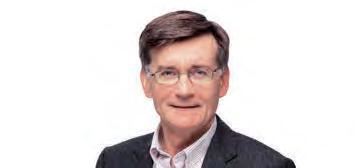
“ e best people may leave in the meantime because it’s not clear
e bill responds to the team’s insistence that its plan to convert the shuttered Arlington Park horse-racing track into a $5 billion stadium-retail-residentialentertainment complex just won’t work unless taxpayers pay for infrastructure improvements on the non-stadium portion of the project.
Hogwash. e Bears are coming to Arlington Heights, and they don’t need a dime of taxpayer money to do it. Acquiring Arlington Park is a massive real estate play that will generate rich returns for team owners. ey can a ord to cover all the costs themselves, as the Ricketts family did when they renovated Wrigley Field and turned the surrounding area into an entertainment district.
NO ALTERNATIVE
Arlington Heights leaders should follow the example of former Chicago Mayor Rahm Emanuel, who refused to give the Ricketts any city money for Wrigley Field. Taxpayer funding for the Bears project would be both unnecessary and wrongheaded.
Unnecessary because the Bears are fully committed to Arlington Heights, notwithstanding their statements to the contrary, apparently intended to preserve some negotiating leverage with public o cials. After plunking down $197 million for Arlington Park in February — and revving up the bulldozers to demolish the horse-racing grandstand at a cost of $4 million — the Bears aren’t going anywhere else.
Finding another available site in the Chicago area with similar advantages would require a time-consuming search that might come up empty. e 326acre Arlington Park parcel is in a prime spot, with its own Metra commuter rail station and easy access to two major expressways. Building there would give the Bears bene ts other NFL teams take for granted but that Soldier Field doesn’t allow, including full
control of the property and multiple revenue streams, topped o with a lucrative real estate development opportunity.
ADVANTAGE
At the same time, team owners have e ectively ruled out staying put. ey rarely pass up a chance to air their gripes with Soldier Field, a Chicago Park District-owned facility that o ers nothing close to the moneymaking potential of Arlington Heights.
And the Bears need to move quickly; the longer they wait to start building, the longer the Arlington Heights property burdens their balance sheet as a dormant asset generating nothing but property tax bills. Cook County Assessor Fritz Kaegi recently broke the unwelcome news that he’s assessing the Arlington Park land at — gasp — the price the Bears paid for it.
Taken together, these factors give Arlington Heights a powerful advantage in negotiations with the team, which has no real alternative to Arlington Park. Yet the politicians are behaving as if they’re in a weaker bargaining position and appear willing to hand over taxpayer money unnecessarily.
Municipalities shouldn’t subsidize projects that will happen without public funds. And the state shouldn’t help Illinois towns poach businesses and jobs from each other. If state legislators assist Arlington Heights’ bid to swipe the Bears from Chicago, they can expect similar requests from other Illinois towns coveting their neighbors’ companies and jobs. But it’s all a zero-sum game for the state as a whole.

Lawmakers in Spring eld should focus on promoting the interests of the entire state, not picking winners in intrastate rivalries. Intervention in business moves is warranted only to help lure a company to Illinois from another state, or to keep a local business from moving out of state.
Neither applies here. e Bears are already in Illinois, and they haven’t threatened to move out of state. Any such threat would ring hollow, because there’s no place for the Bears to go. No other market as large as Chicago lacks an NFL team, and existing big-market franchises wouldn’t let the Bears move onto their turf.
e good news for taxpayers is Gov. J.B. Pritzker and the state Senate have shown little enthusiasm for helping the Bears move. Without their support, Arlington Heights may have to call the Bears’ blu .
CRAIN’S CHICAGO BUSINESS • MAY 22, 2023 3
EVAN WISE/UNSPLASH
See AMGEN on Page 57
What’s ahead for Sam Zell’s successors
BY ALBY GALLUN
After the news of Sam Zell’s death at age 81 broke last week, it didn’t take long for two of his three public real estate companies — Equity Residential and Equity LifeStyle Properties — to name his successors.

In the same May 18 press release in which it disclosed Zell’s death, Equity Residential, a real estate investment trust that owns apartments, said board member and former CEO David Neithercut, 67, would succeed Zell as the company’s chairman. Following a similar playbook, Equity LifeStyle, a mobile-home park REIT, revealed a couple of hours later that its former CEO and current vice chairman, omas Heneghan, 58, would succeed chairman Zell.
e announcements signaled stability and continuity at two companies founded by Zell and led by him since they went public in the 1990s. Neithercut and Heneghan are respected leaders in the REIT universe with suc-
cessful track records.
“It’s business as usual,” said Michael Torres, former Equity LifeStyle board member and CEO of Adelante Capital Management, a California-based money manager that invests in REIT stock.
“Sam has built the organizations to survive him.”
But the loss of their charismatic chairman, considered by many to be the founding father of the modern REIT era, may remove some of the halo e ect the companies enjoyed. e Zell brand was an important selling point for many shareholders who invested in the REITs, along with his reputation for embracing shareholder-friendly governance policies.
“Ensure management’s interests are aligned with shareholders,” was one of Zell’s maxims.
DISRUPTED SECTOR
Zell’s three Chicago REITs, including Equity Commonwealth, will have to navigate an uncertain real estate sector disrupted by higher interest rates and volatile,
though improving, nancial markets. Property values have fallen across all property types, and securing nancing is a lot tougher than it was a year or two ago.
But rents and occupancies remain solid at mobile-home parks and apartment buildings.
“Apartment demand is holding up reasonably well heading into peak leasing season, and perhaps better than many industry participants feared,” analysts at Green Street Advisors wrote in a report last month.
You can’t say that about the o ce market, Equity Commonwealth’s historical turf. But the company has sold o so many ofce buildings over the past several years that it’s not really feeling the pain.
After the sales, Equity Commonwealth now owns just four properties and is sitting on about $2.1 billion in cash. e REIT has morphed into a quasi-blank check company — a well-capitalized investment vehicle on the hunt for a big deal.
Google, IBM validate U of C’s quantum ambitions UChicago emerges as one of the national leaders in computing’s next frontier
BY JOHN PLETZ
e University of Chicago will get a major boost in funding and credibility as one of the leaders in the next frontier of computing, known as quantum, after attracting $150 million from IBM and Google for a research partnership with the University of Tokyo.
IBM plans to invest $100 million over 10 years to develop the world’s rst quantum supercomputer with the universities. Separately, Google will commit up to $50 million to support quantum computing research and to help train the workforce required. e partnerships with the two universities were expected to be nalized over the weekend during the G7 Summit in Hiroshima, Japan.
Companies and universities are just beginning to make major commitments to develop quantum technology, which involves a radical rethinking of the fundamentals of computing. Because
of the outsize role that technology plays in global economics and politics, it’s also become a national security issue.
U of C has become one of the national leaders in quantum computing, attracting hundreds of millions in federal research funding from the U.S. Department of Energy, as well as spearheading the Chicago Quantum Exchange, a collection of corporate and academic partners.
‘A HUGE BOOST’
“ is is a huge boost to the e ort at UChicago and adds validation to the already highly visible and productive work going on at the Chicago Quantum Exchange,” Mark Sa man, director of the Wisconsin Quantum Institute at the University of Wisconsin at Madison, said in an email. “ e real impact will depend on details of the agreement, but at face value this will be a signi cant boost to UChicago in the worldwide race to develop useful
quantum computers.”
U of C researchers have been tackling some of the fundamental science behind quantum computing, which involves harnessing the properties of quantum mechanics for computing.
In traditional computing, pulses of electricity or light are either on or o . Quantum particles can be in multiple positions at once and be linked, or “entangled,” with each other even though they aren’t physically connected. In theory, that makes it possible to process exponentially more data, which has implications for tackling problems such as modeling diseases or chemical reactions. Quantum also holds the promise for far greater security of computing.
U of C researchers announced a breakthrough last year in which they achieved a record time of memory, or “coherence” between quantum bits or “qubits” used to store information.
IBM and Google are among the
I EXAMINING OUR CITY’S GOVERNMENT
“One City, 50 Wards: Does the City at Works Actually Work?” is an ongoing joint series from Crain’s Chicago Business and the University of Chicago Center for E ective Government that explores the connections between how Chicago’s city government is designed, how it functions and how it performs. Check in at ChicagoBusiness.com/OneCity50Wards over
dential and Equity LifeStyle, Equity Commonwealth did not disclose Zell’s successor as chairman of its board. Helfand did not respond to requests for comment.
SMALL STAKES
e current dislocation in the nancial markets may deliver an opportunity, but company executives have yet to nd one they like. ey’ve been looking for a long time.
“We continue to evaluate a wide range of investments across asset classes,” Equity Commonwealth President and CEO David Helfand told analysts in a recent conference call, according to a transcript. “We remain hopeful that the challenges in the real estate credit markets might be a catalyst for a compelling transaction.”
But they will no longer be able to bounce their ideas o Zell, one of the most celebrated dealmakers in the business. Unlike Equity Resi-
ough the three REITs are closely identi ed with Zell, he did not own especially large stakes in any of them. Zell and a liates owned 3.5% of the shares of Equity LifeStyle, 1.3% of the shares of Equity Residential and less than 1% of Equity Commonwealth’s shares, according to the companies’ most recent proxy statements.
Zell mostly stayed in the background at his REITs, letting his executives do the talking at investor events and on quarterly conference calls with analysts. But he was a strong voice in the investment community, especially as an advocate for the listed REIT industry.
Equity Residential shares were essentially at on the day Zell’s death was announced, edging down 23 cents, or 0.4%, to $61.34, while shares in Equity LifeStyle fell $1.37, or 2.1%, to $64.74. Equity Commonwealth shares inched up 21 cents, or 1%, to $21.15.
the coming weeks to see the full project, including in-depth reporting, Q&As with experts and related opinion pieces.
You’ll also nd a new Crain’s Daily Gist podcast, in which Crain’s contributor Steve Hendershot talks with host Amy Guth about how the City Council can lead the response to Chicago’s most urgent challenges.
large tech companies that have made major investments to develop quantum computers.
“Quantum information science and technology (are) at a crossroad, where foundational discovery and technical innovation will combine to create real breakthroughs,” Paul Alivisatos, president of the University of Chicago, said in a statement.

Former Chicago Mayor Rahm Emanuel, now U.S. ambassador to Japan, is trying to create more higher-education partnerships between the two countries.
U of C began a major push into quantum computing under former university President Robert
Zimmer, investing a half-billion dollars to become a national leader in attracting students and faculty to the Pritzker School of Molecular Engineering.
e university formed the Chicago Quantum Exchange, a consortium that involves a half-dozen research institutions and 30 companies.
One of the key attractions for companies is talent. U of C is one of the few universities o ering quantum-speci c degrees. Quantum computing is a major economic-development focus for Illinois Gov. J.B. Pritzker, who committed $200 million toward advancing the technology.
4 MAY 22, 2023 • CRAIN’S CHICAGO BUSINESS
BLOOMBERG
Two of Zell’s REITs may be poised for business as usual after the dealmaker’s death. But the loss of their charismatic chairman may lessen the halo e ect the rms enjoyed.
Sam Zell BLOOMBERG


Business solutions so powerful, you’ll make ever y move matter. You must be enrolled in Business Advantage 360, our small business online banking, or Mobile Banking to use Cash Flow Monitor and Connected Apps, and have an eligible Bank of America® small business deposit account. Mobile Banking requires that you download the Mobile Banking app and is only available for select mobile devices. Message and data rates may apply. Screen images simulated. Sequences shortened. ©2023 Bank of America Corporation. All rights reserved. | MAP5423867 What would you like the power to do?® Learn more at bankofameric a.com/ bankingfor business Realizing he’s afraid of heights. Booking time with a banker a er going over the books. Tracking same-day payments while stocking the shelves. Reviewing the forecasting insights before ordering more inventory.
McDonald’s risks long legal battle with Byron Allen

The fast-food chain says it’s prepared to ght the media entrepreneur’s allegations of discrimination
BY ALLY MAROTTI
As the legal battle between McDonald’s and media entrepreneur Byron Allen continues, branding experts say the longer it lasts, the riskier it gets for the fast-food giant.
McDonald’s, for its part, say it’s prepared to ght Allen’s allegations to the end.
Allen, who owns properties such as e Weather Channel and Justice Central, led a lawsuit against McDonald’s two years ago alleging the Chicago-based chain discriminated against his company through racial stereotyping and refusals to contract.
ough the two parties have met for mediation, a settlement has not been reached, according to court documents. at suit is set for trial in September. Meanwhile, Allen continues to lob allegations against McDonald’s, in a full-page Chicago Tribune ad last month and a separate lawsuit this month.
McDonald’s has disputed the allegations and pledged to ght them. Branding experts say litigation is risky, and can bring to light embarrassing information. Additionally, a prolonged court battle means there’s a higher chance customers could start associating McDonald’s with discrimination allegations, which is not a good look regardless of the case’s outcome, said Maria Rodas, marketing professor at the University of Illinois at Urbana-Champaign’s Gies College of Business.
“It could damage the brand,” she said. “For McDonald’s, that’s their most valuable asset, so that’s where the risk comes from.”
Experts agree that a company as large and iconic as McDonald’s has likely done an in-depth risk analysis that considers its brand equity and the legal fees involved in ghting racial discrimination allegations. It also would have determined whether it had any skeletons that could fall out of its closet during litigation.
Indeed, McDonald’s said in a statement that it continues to invest in diverse initiatives — such as e orts to diversify supplier and franchisee ranks — and will “vigorously” defend against allegations that paint a contrary image. e company views a trial as a chance to set the record straight.
“We look forward to taking this case to trial to publicly expose these allegations as baseless once and for all,” John Hueston, outside counsel for McDonald’s, said in a statement. “McDonald’s is proud of its record, welcomes the opportunity to share the facts and will not be coerced or bullied into compromising its values.”
‘GETTING LEVERAGE’
Legal experts say Allen could be deploying a form of activism. e 2021 lawsuit draws people’s attention back to racial discrimination, an issue that garnered a lot of corporate promises in 2020 and 2021, in the wake of George Floyd’s death, said Teri McMurtry-Chubb, professor at the University of Illinois Chicago School of Law. Suing a more e ective tactic than, say, starting a hashtag, she said.
“ e lawsuits are a way to make that very public with a very public target,” McMurtry-Chubb said. “If
McDonald’s changes how they do business, then a lot of other corporations will likely follow.”
Skip Miller, an attorney representing Allen, disputed the idea that the lawsuit serves any other purpose than righting legal wrongs.
“It’s a dispute for damages. It’s not activism,” he said. “For him, it’s all about economic inclusion of Black-owned media. His company is the main one. He has been excluded.”
e lawsuit Allen led this month alleges that McDonald’s is not on track to meet a 2021 pledge to increase spending with Black-owned media and production companies to 5% from 2%. McDonald’s maintains that it is on track, and has brought on new media partners.
Harold Krent, a professor at Chicago-Kent College of Law, said that case will be hard to win. Allen’s attorneys would have to
prove that McDonald’s didn’t intend to keep its promise, and that Allen’s company was injured by the broken promise. Rather, the lawsuit is likely a tool to pressure McDonald’s into settling the 2021 case, which has more legs, he said.
“At times, individuals or groups le lawsuits not with the aim of winning, but with the aim of getting leverage,” Krent said. “I think this is ultimately about pressing McDonald’s to do something about the prior suit as opposed to actually winning this one.”
Miller again disputed that theory, and said the lawsuit is serious. “It’s not a pressure tactic,” he said. “We don’t do that.”
However, legal experts said that the advertisement Allen took out in the Chicago Tribune last month also could have pressured McDonald’s. In the ad, Allen solicited support from activist investor Carl Icahn in his ght against “blatant racism” at McDonald’s. Court re-
cords show that the ad ran the day before McDonald’s and Allen’s attorneys were set to meet for a mediation session for the 2021 discrimination case. It rubbed McDonald’s attorneys the wrong way.
“It is obvious to McDonald’s that neither Mr. Allen nor plainti s intended to respect the court’s expectation that the parties engage in the mediation process in good faith,” McDonald’s attorneys wrote in a court ling. “Instead, it appears plainti s’ goal remains to harass and harangue McDonald’s into an unmerited resolution, misreading McDonald’s resolve to demonstrate that Plainti s’ allegations are wholly without merit.”
At this point, it’s unlikely McDonald’s or Allen will back down, said Carlos J. Torelli, also a marketing professor at Gies.
“When things become really, really public, sometimes it’s a game of chicken a little bit,” he said. “Who’s going to blink rst?”
After shaky truce, Lifeway Foods family feud reignites
The company founder’s widow and her son try again to take the reins from the CEO via proxy battle
BY STEVEN R. STRAHLER
e widow of Lifeway Foods’ founder and her son are renewing e orts to oust their blood relative CEO and put the ke r maker up for sale, this time amid dueling lawsuits.
Ludmila and Edward Smolyansky, who own just over a quarter of Lifeway shares, nominated themselves and ve other director candidates, setting up a contest for control of the company at the June 15 annual meeting. At stake is the job security of CEO Julie Smolyansky, Ludmila’s daughter and Edward’s sister.
A similar campaign by the dissident Smolyanskys zzled last summer after they reached a truce with the company. e parties agreed that Lifeway would explore options and hire a nancial adviser and the Smolyanskys would hold o on proposing director nominees, according to a proxy statement they
led this month.
But the deal foundered. In February, the Smolyanskys noti ed the company of “potential breaches” in the agreement. Lifeway, in turn, sued them last month in Cook County Circuit Court, accusing them of breaching the agreement and certain “contractual obligations.” e Smolyanskys, in a ling this month, denied the claims and asserted counterclaims.
NEGATIVE STATEMENTS
In their proxy, the Smolyanskys again called for a review of “strategic alternatives, including a potential sale of the company.” Lifeway stock is trading at less than a third of its $21 peak in 2015. Company revenue rose during the pandemic, but net income last year fell by more than two-thirds, to less than $1 million.
“It clearly has not been working for a number of years,” Edward Smolyansky, 47, a former chief -
nancial o cer and chief operating o cer of Lifeway, said May 12 in an interview. Although “grocery-style food companies have bene ted from the shelter-in-place” pandemic conditions, the momentum has faded, he said.
Lifeway spokesman Derek Miller said in a statement that “management will not be distracted or deterred from our core mission of expanding access to Lifeway products and creating shareholder value.” He said Lifeway’s earnings have been squeezed by higher milk

and other production costs. is year, milk prices have eased.
In its own proxy led last month giving notice of the (virtual) annual meeting and disclosing its lawsuit against the Smolanskys, Lifeway accused them of “publicly making statements (that) negatively commented upon the company . . . and submitting what was purported to be an alternate slate of director nominees for consideration at this annual meeting in violation of the proxy settlement agreement.”
Richard Kessler, a McDonald
Hopkins lawyer representing Lifeway, said he doesn’t comment on pending litigation.
Ludmila Smolyansky, 73, retired as a Lifeway employee in 2010 but continued as its chair until last August, the proxy said. She and her late husband Michael founded the Morton Grove-based rm in 1986, aiming to popularize ke r — which is like a drinkable yogurt and is still Lifeway’s staple product — after they immigrated from Ukraine.
Julie Smolyansky, 48, became CEO in 2002 after her father’s death and last year received $1 million in salary and $2.8 million in total compensation, according to Lifeway’s proxy. She owns 17.4% of company shares, a slight majority of the 31.8% held by Lifeway’s eight directors. Yogurt maker Danone has a 24% stake, the proxy says.
Edward Smolyansky said he and his sister are estranged. “It’s a business thing — no personal gripes,” he said. “I wish the company great success, of course. My mother Ludmila and I make up the largest shareholder group.”
6 MAY 22, 2023 • CRAIN’S CHICAGO BUSINESS
Byron Allen
BLOOMBERG
GETTY IMAGES
|
Live Reveal of the Fastest-Growing Companies in Chicago

Programming will feature a conversation between GrubHub Co-Founder Mike Evans and Betsy Zeigler, CEO of 1871, about how to succeed in Chicago’s startup scene and lessons learned along the way.

Featured Speaker: Mike Evans Founder, Fixer.com; Co-Founder, Grubhub


Moderator: Betsy Ziegler CEO, 1871
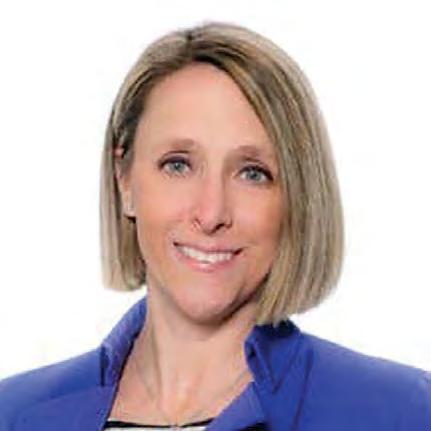
Thursday, June 15
11:30 AM–1:30
Fairmont
PRESENTING SPONSOR CORPORATE SPONSORS
PM |
Chicago
ChicagoBusiness.com/Fast50Awards
A 10-point plan for the new mayor to combat crime in Chicago

Here are concrete proposals on ghting and preventing crime,
Like many Chicagoans, I believe there are three linchpin issues facing the new mayor: crime, crime and crime. Unless aggressively addressed, there will be business and population losses and a related reduction in the tax base. And most importantly, as demonstrated downtown over a recent weekend, there will be continued violence and bloodshed.
is led me to develop a 10-point plan to combat crime for consideration by Mayor Brandon Johnson and his transition team. irty-second ads provide little detail on public policy other than commitments to increase the police presence on our streets.
What I o er below are concrete proposals on ghting and preventing crime, many of which have proven e ective in other major cities.
Several ideas follow the mayor’s lead of addressing some of the root causes of crime — for example, building trust between police, young Chicagoans and communities at large.
1) Police internships
e International Association of Chiefs of Police emphasizes that a key to reducing crime is creating positive interactions between the police and youth. To that end, the city should create a summer police internship program for at-risk youth.
e Chicago Board of Education, the Chicago Police Department, local clergy and social workers can recruit high school students prone to negative interactions with the police for a summer internship program.
Interns should be placed in their respective precinct o ces. is exposure to police in their respective neighborhoods will help to build respect and trust, as it has in other programs that enable engagement between police and youth.
2) Magnet high school for law enforcement and justice
Chicago Public Schools has a Law & Public Safety Program, but it is fragmented and dispersed through several high schools.
Alternatively, the High School for Law Enforcement & Public Safety in Queens, N.Y., enrolls 390 students, grades nine-12, and has an 80% to 84% graduation rate. Graduates enter collegiate criminal justice programs or police academies. ey then pursue careers as police o cers, emergency service workers, prosecutors and judges.
Houston has a similar school, the High School for Law & Justice, as does Miami, Law Enforcement O cers Memorial High School. e following is from the Houston school’s website: “ e High School for Law & Justice (HSLJ), a separate and unique magnet school, began in the spring of 1981 as a recruitment source
for minority police o cers.”
Unlike Houston, with a focus on minorities, Chicago should encourage a multicultural student body. Future o cers will need to work in a diverse environment. is mix also fosters understanding and tolerance.
According to WGN-TV, 1,046 o cers left the force in 2022. is exodus was o set through hiring 950 new o cers. e gap will widen with baby boomers retiring.

A law enforcement magnet school will help ll the pipeline with new ocers home-grown in Chicago. e school should also have arrangements with criminal justice colleges and universities for early admission.
To the extent that law enforcement ocials serve as faculty will further build trust between police and young Chicagoans.
3) Teach con ict resolution in the schools
e media, elected o cials and the public clamor for police o cers to go through sensitivity and de-escalation training. is should be a two-way street.
CPS should design courses or seminars on con ict resolution. Studies have shown that this can reduce school violence and violent street crime. is training should be mandatory from kindergarten through 12th grade. Topics can include relevant novels about crime and consequences, lectures from former gang leaders and role-playing. e same should hold true for jails and prisons.
is approach is so prevalent that many major universities o er undergraduate and graduate degrees in con ict resolution.
4) ‘Community policing-plus’
At present near where I live, I see police cars parked on medians with ashers on. To me, this is not community policing. Community policing is having sworn of-
have proven e ective in other major cities
ternatively, additional police o cers can lead to equity and shorter response times citywide.
5) Use urban planning to reduce crime in high-crime neighborhoods
Urban planning can make neighborhoods safer. Journalist and activist Jane Jacobs coined the phrase “eyes on the street” when writing about her successful e ort to save Greenwich Village in “ e Life and Death of Great American Cities,” meaning more people, more activity on streets make for safer neighborhoods.
Encouraging residents to move to neighborhood centers provides a critical mass of activity, making it more di cult for criminals to act because of “eyes on the street.” Neighborhood centers should be clustered around schools, transit stops and parks.
cers walking the beat. We need that in every neighborhood, with two or more ofcers on the beat.
I also have a concept I refer to as “community policing-plus”: To the extent possible, assign o cers to their own neighborhoods. I know this may risk leniency, but the trust factor between law enforcement and the community is more important now.
Second — in well-announced events so as not to cause panic — police o cers walking the beat should knock on every door and go to every business to introduce themselves. In neighborhoods with multifamily buildings, these introductions could be facilitated in community rooms.
is was done successfully in Camden, N.J. We need to break the “them versus us” attitude and just be “us” as a Chicago neighborhood. is outreach should be done on a regular basis as assigned ocers, businesses and residents will change over time.
Another factor in community policing is response time. During the campaign, there was a lot of discussion about adding police. While this may be needed, there must be an e ective and measurable approach. e key metric in policing is response time.
According to the Department of Justice, studies have shown that a response time of under ve minutes in large cities increases the probability of making an arrest by 60%; beyond ve minutes, this drops to 20%.
According to SaferWatch, a mobile appbased security system provider, the average response time for major U.S. cities ranges from 3.5 to 13 minutes. Proudly, Chicago tops the list at 3.46 minutes. at said, things look di erent from an equity standpoint. According to a Chicago Tribune article in January, response times in 2022 ranged from 95 seconds to nine minutes, with the longer response times occurring in poorer neighborhoods. So the issue here is not right-sizing the department but reallocating resources. Al-
Schools in these neighborhoods, as has been suggested and occurs in some places, need to go beyond education for children and teens. Buildings can be multipurposed to include health clinics, adult literacy training, workforce development, neighborhood gyms with extended hours, after-school and evening tutoring, and midnight basketball.
Related to the goal of improving police and community relations, sworn o cers sitting behind desks doing civilian work can instead serve as coaches, mentors and tutors — also, preferably in their own neighborhoods.
e Chicago Housing Authority, nonpro ts, a ordable housing advocates and developers should create a ordable multifamily housing to scale. In turn, outlying residents should be incentivized to move to neighborhood centers.
If a critical mass of housing is created, then, as the saying goes, retail follows residential. is will help mitigate food deserts and create nightlife.
Along the same line of thinking, the Loop is every Chicagoan’s neighborhood. E-commerce and remote work have wreaked havoc on the Loop, leading to a reduction in property values as well as in retail and restaurant sales. is reduced activity makes the Loop a prime opportunity for criminals at night. While the horse may be out of the barn, the new mayor and City Council should reconsider decisions on the location of the new casino and pending decisions on the Bears. If practicable, place those entities in or on the perimeter of the Loop, tra c and parking issues notwithstanding. is will boost activity not only for local retailers and restaurants, but will also create a plethora of witnesses to deter criminal activity.
6) Turn night into day
Criminals are opportunistic and are more likely to commit violent crime at night. Using data on carjackings, muggings and purse snatchings, areas can be targeted for high-intensity lighting.
To re-attract tourists and protect businesses, light up as bright as day the Mag Mile, the Loop, and Grant and Millennium
8 MAY 22, 2023 • CRAIN’S CHICAGO BUSINESS
many of which
YOUR VIEW
NEWSCOM
Michael Belsky was mayor of Highland Park from 2003 to 2011 and now lives in Chicago.
parks, light pollution be damned (residents having to purchase room-darkening shades is worth saving a life).
New York City uses bright lighting to deter crime. In an April 2019 study by Crime Lab New York, it was determined that there is a correlation between crime and lighting levels. In a test, bright lighting throughout the city was found to reduce crime by 36%.
7) Police substations
Each neighborhood should also have police substations. ese can be placed in the neighborhood centers discussed above. ey can be small but should be visible, with lighted signage. ese will be a deterrent to criminals, but will also be a haven for potential victims of violent crimes.
I would also suggest that Chicago consult with the University of Chicago. On and around campus are white emergency phone boxes. When witnessing a crime or being victimized, one must simply press a button to trigger a rapid response. Why can’t these be placed in other parts of the city?
8)
Combat noise pollution
Finally, overly loud motorcycles and other vehicles with blaring music have become the new gra ti. In my view, this is an attempt to create noise and disruption throughout the city. New York City and Miami Beach have created ordinances that
limit decibels for these machines.
New York and Paris have placed decibel meters on tra c lights along with cameras. In New York, if ordinance-based decibel levels are exceeded, a photograph of the license plate is taken and violators are ned $800 for the rst o ense and up to $2,600 for a third o ense.
According to a Fortune article in January, New York has ticketed over 70 vehicles under the state’s Stop Loud & Excessive Exhaust Pollution, or SLEEP, Act, which went into e ect last spring.
9) Police o cers for CTA
Given the increased crime on the CTA, there certainly needs to be a much more visible police presence. Police should not only be stationed at platforms but walking through trains as well.
I would also advise an additional approach. Like the Federal Aviation Administration placing U.S. Marshals on airplanes, the CTA should include plainclothes o cers on trains. is policy should be broadly advertised to the criminal element so it will keep them guessing.
10) Mayoral, police and gang
engagement
As abhorrent as it may seem to bring gang members to the table with the mayor and chief of police on a regular basis, it has proven e ective as a crime reduction strategy in other cities.
In 2015, when Freddie Gray died in po-
lice custody in Baltimore, peaceful protests erupted into rioting pitting police against the Black community. e city of Baltimore wisely anticipated another wave of violence pending the verdict of the o cers on trial. A coalition of community activists, the police and gang a liates worked to calm the city in advance.
is e ort was documented in a lm aired on HBO, “Baltimore Rising.” At the table were frank and emotional discussions between the police and gang members. Events were mutually developed, such as a football game between police and gangs, as well as a citywide prayer vigil.
e Baltimore experience can be instructive for Chicago. Forging solutions to ghting crime may require a big tent to reach peace and reconciliation on the bloody streets of our city. is should also be an institutionalized and continuing effort as opposed to being reactive to a single event. Gun buybacks and alternative paths to drug sales all can be discussed and explored.
The funding dilemma
Some of these strategies will require one-time funding, such as the magnet school, sound measurement technology and police substations. All will involve ongoing operation and maintenance costs, and a ordable housing will require publicprivate partnerships.
e city shouldn’t shoulder the burden on its own. Commercial, retail, service and entertainment businesses can support
these e orts, particularly if the state enables personal service taxes. ese businesses and consumers will bene t from a safe Chicago.
Also, all of our well-endowed foundations should take a page from the book of Detroit’s bankruptcy. Some of the nation’s top foundations were convinced that, notwithstanding all their incremental good works, there is nothing more important than saving a city. ey stepped up and provided funding needed for Detroit to exit bankruptcy. Some of the one-time costs mentioned above would be excellent candidates for foundation funding.
Making investments in ghting crime should pay o . Several organizations, such as the University of Chicago’s Crime Lab, have provided estimates on what it would cost to reduce crime rates in line with peer cities such as New York and Los Angeles. ese range from $500 million to $1 billion per year. ose gures may not include what I propose above, but I am sure the costs of this suggested plan would be covered.
Gun violence alone costs the city approximately $3 billion a year, with estimates of up to $7 billion when including all types of crime. is includes direct costs such as police budgets and emergency care, as well as indirect costs such as business closures and population loss.
Not only is this a great nancial return, but, more importantly, it will provide a return in saving lives and property and make Chicago a better place to live, work and play.
CRAIN’S CHICAGO BUSINESS • MAY 22, 2023 9 Nominate a leader in finance who acts as a mentor or role model for other finance professionals and promotes inclusive practices in the workplace. Nominations Due June 16 ChicagoBusiness.com/NotableNoms
YOUR VIEW
More insight needed from Johnson on tax ideas
It’s likely that only the people closest to Chicago Mayor Brandon Johnson know for sure whether the $12 billion nancial proposal oated the other day by groups allied with his campaign was a trial balloon or a re ection of ideas he’d truly like to implement if he had his way.
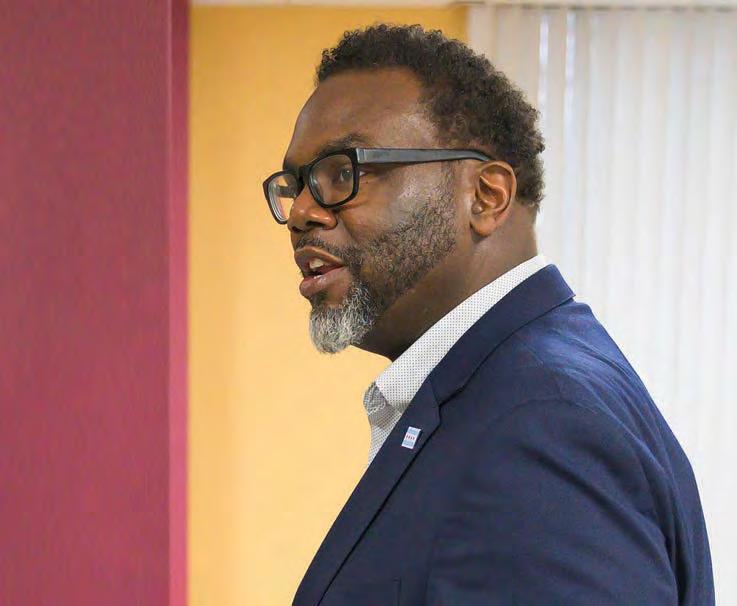
But a couple of realities are plain to see, even from a distance. For one thing, the ideas contained within the plan — entitled, tellingly enough, “First We Get e Money” — are anathema to a downtown business community that already regards the incoming administration with a fair bit of wariness. Second, there’s the precarious perch Johnson now occupies, as progressive activists underscore their expectations of the man they worked so hard to put into o ce, even as he attempts to create some space between himself and their chimerical ideas.
e proposal, authored by two grassroots organizations with ties to Johnson — Action Center on Race & e Economy and the People’s Unity Platform — calls for measures such as a city wealth tax, an income tax, deep cuts in police spending and an end to all tax-increment nancing projects. While these ideas may sound good to many of the Chicagoans who voted Johnson into o ce, it’s important to read the ne print and understand just how many middle-class Chicagoans — not just fat cats — would be hurt if many of these notions became policy.
As Crain’s Greg Hinz rst reported, a few of the proposals these groups are espousing match up with concepts Johnson himself campaigned on, most notably:
Reinstating the “head tax” of $33 per worker on companies with at least 50 workers, netting $106 million a year;

Boosting from 5 cents to 14 cents the tax per gallon on jet fuel used at Chicago’s airports, raising $96 million; and
Raising the real estate transaction fee on sales of at least $1 million by 1.9 percentage points, a move that the group estimates would generate $163 million.
Beyond that, the progressive advocates also propose:
Imposing a city income tax of 3.5% on any household with above $100,000 a year. is tax would apply to Chicago residents as well as money made by suburbanites employed in the city. Here in Chicago, at least a third of city residents would end up paying at least some city income tax under this plan;
Creating a 0.4% annual wealth tax on the richest 10% of Chicagoans;
Levying a tax on luxury-apartment vacancies that’s designed to pressure landlords into lowering rents to more a ordable levels; and
Taxing nancial transactions at Chicago’s nancial exchanges.
On the spending side of the ledger, the plan calls for eliminating all vacant positions in the Chicago Police Depart-
ment, and then cutting the police budget another 9% a year. All new TIF spending would be eliminated, with e orts to renegotiate or le lawsuits against existing TIF deals, such as the one extended to the Lincoln Yards development. And a new city bank would issue debt at lower than private-market costs, a move the proposal’s authors contend would save the city money.
Undergirding all of these ideas are two faulty premises: One, that Chicagoans aren’t taxed enough, and two, that we have plenty of police to keep the city safe. Johnson would be correct to add even more space between himself and both of these notions.
CME Group chief Terry Du y has already threatened — on the day of Johnson’s inauguration — to move the exchange out of town if the tax situation
becomes too burdensome. Major employers such as Caterpillar, Boeing, Citadel have already headed out of the city, with Guggenheim Partners apparently poised to follow on their heels.
It’s unlikely this report’s authors or the people who are aligned with them concern themselves overmuch about these departures. ese are big, bad corporations, after all. But perhaps the report’s authors should consider how these taxing ideas will a ect constituencies they care more about: Chicago workers and families.
As Crain’s Jack Grieve reported on May 1, Chicago residents need to earn an annual income of $172,600 for their purchasing power to equal that of the average American taking home $100,000. And in order to sustain households bringing in even that much of a salary, the city needs a base of employers able to create and support decent-paying jobs. Head taxes undercut job growth. And wealth taxes seem likely to hit middle-class families saving for goals like college and retirement.
When pressed for insight on the mayor’s own attitude toward these proposals, a senior adviser told Crain’s, “if we were for these ideas, we would have said it.” And yet, given many opportunities to express opposition to these measures, the adviser said only: “Everybody should have a right to put their ideas into the public square.”
at’s not exactly comforting. Nor is the pushback from some observers who have been quick to argue these are merely fringe ideas that would be dead on arrival in Spring eld, where many of these measures would have to be blessed before they could be implemented. Messaging matters — especially at a time like this, when investor and employer faith in Chicago as a great place to do business is faltering. If the mayor truly isn’t considering things like a city income tax, a wealth tax, anancial transactions tax or any of the other ideas contained in this report, he ought to say so, loudly and unequivocally.
Don’t discount Groupon’s legacy too deeply
Groupon’s 2010 decision not to sell the Chicago-based online-deal company to Google for $5.75 billion will go down as one of the biggest blown calls in the history of e-commerce, right up there with Blockbuster declining to buy Net ix for $50 million in 2000, and Mark Zuckerberg rebranding Facebook as Meta and plowing upwards of $100 billion into developing a ghost-town Metaverse where the avatars don’t even have legs.

ere’s nuance to consider, of course. One reason Groupon turned down the purchase o er was that Google couldn’t guarantee the deal would close. A lengthy antitrust review might have been fatal to a business that had no “moat” to hold o competitors —
prompting a mad dash to enter new markets and spend hundreds of millions on marketing while racking up huge losses.
As Forbes declared on its cover at the time, Groupon, which launched in late 2008, was the fastest-growing company ever. It hit $1 billion in sales quicker than any company in history, and it was the second-fastest (behind YouTube) to secure a billion-dollar valuation. But its approach wasn’t sustainable. With the company issuing a “going concern” warning to investors this month, Groupon risks nally running out of cash over the next year or so. at’s unless interim CEO Dušan Šenkypl’s turnaround plan — which relies on “refocusing on its core localmerchant deal business, improving its tech-
10 MAY 22, 2023 • CRAIN’S CHICAGO BUSINESS
EDITORIAL
GETTY YOUR VIEW Sound o : Send a column for the Opinion page to editor@chicagobusiness.com. Please include a phone number for veri cation purposes, and limit submissions to 425 words or fewer. Write us: Crain’s welcomes responses from readers. Letters should be as brief as possible and may be edited. Send letters to Crain’s Chicago Business, 130 E. Randolph St., Suite 3200, Chicago, IL 60601, or email us at letters@chicagobusiness.com. Please include your full name, the city from which you’re writing and a phone number for fact-checking purposes.
JOHN R. BOEHM
Brandon Johnson
nology” and cutting expenses via arti cial intelligence-driven automation, as Crain’s John Pletz reported — pays o or the company nally sells itself. With Groupon’s market cap now hovering around $100 million, such a sale would command pennies on the dollar compared with Google’s offer back in the day. at would make it the ultimate Groupon deal.
If this is the beginning of Groupon’s nal act, its disappearance will elicit end-of-an-era sentiments along the lines of Gen X reaction to the May 9 announcement that MTV News is shutting down. Fueled in part by Great Recession belt-tightening that left consumers hungry for retail deals, Groupon boasted more than 150 million subscribers to its daily emails by the time it went public in November 2011.
But a series of messy revenue restatements ear-
President/CEO KC Crain
Group publisher/executive editor Jim Kirk
Editor Ann Dwyer
Creative director Thomas J. Linden
Director of audience and engagement
Elizabeth Couch
Assistant managing editor/audience
engagement Aly Brumback
Assistant managing editor/columnist Joe Cahill
Assistant managing editor/digital


content creation Marcus Gilmer
Assistant managing editor/digital Ann R. Weiler
Assistant managing editor/news features
Cassandra West
Deputy digital editor Todd J. Behme
Deputy digital editor/audience
and social media Robert Garcia
Digital design editor Jason McGregor
Associate creative director Karen Freese Zane
Art director Joanna Metzger
Digital designer Christine Balch
Copy chief Scott Williams
Copy editor Tanya Meyer
Contributing editor Jan Parr
Political columnist Greg Hinz
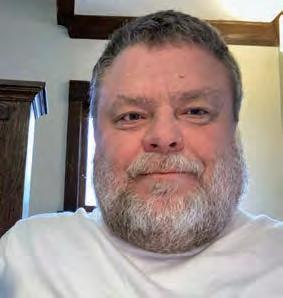
Senior reporters
Steve Daniels, Alby Gallun, Ally Marotti, John Pletz, Dennis Rodkin
Reporters
Katherine Davis, Brandon Dupré, Danny Ecker, Jack Grieve, Corli Jay, Justin Laurence, Steven R. Strahler
Contributing photographer John R. Boehm
Researcher Sophie H. Rodgers
Senior vice president of sales Susan Jacobs
Vice president, product Kevin Skaggs
Sales director Sarah Chow
Events manager/account executive Christine Rozmanich
Production manager David Adair
Events specialist Kaari Kafer
Custom content coordinators
Ashley Maahs, Allison Russotto
Account executives
Linda Gamber, Claudia Hippel, Menia Pappas, Bridget Sevcik, Laura Warren
Sales administration manager Brittany Brown
People on the Move manager Debora Stein
Keith E. Crain Chairman
Mary Kay Crain Vice chairman
KC Crain President/CEO
Chris Crain Senior executive vice president
Robert Recchia Chief nancial o cer
Veebha Mehta Chief marketing o cer
G.D. Crain Jr. Founder (1885-1973)
Mrs. G.D. Crain Jr. Chairman (1911-1996)
For subscription information and delivery concerns please email customerservice@ chicagobusiness.com or call 877-812-1590 (in the U.S. and Canada) or 313-446-0450 (all other locations).
lier in 2011 — Groupon had reported its gross billings as revenue, including the merchant’s portion of each sale, before the SEC ordered the company to knock it o — took a lot of the shine o Groupon. So did an ill-fated series of Super Bowl ads many viewers saw as insensitive to causes such as human rights in Tibet, endangered whales and the destruction of the Brazilian rainforest, which actor Elizabeth Hurley compared to Brazilian bikini waxes in one infamous spot. e company also used 86% of its last two pre-IPO investment rounds to cash out insiders to the tune of nearly $1 billion, leaving less than $140 million to fund operations and growth.
After the self-in icted wounds of 2011, Groupon never regained its luster.
What, then, is Groupon’s legacy?
For one thing, it helped make Chicago a
tech-startup hotbed in the 2010s and drew a lot of digital talent and investment to the city. For another, it rmly established the power of humble old e-mail to drive retail revenue. And it’s hard to imagine today, when people buy cars and houses via mobile app, but the 2011 launch of Groupon Getaways, which generated $9 million in revenue in its rst three weeks selling travel deals, helped prove consumers were ready to make big-ticket purchases on their phones.
Before writing o Groupon entirely, remember that its meteoric rise was fueled in part by people looking for deals during a recession. If the nation enters another prolonged downturn, it’s possible daily deals may come back into vogue long enough to keep the lights on at Groupon beyond the next year or so. But I wouldn’t give that outcome 2-1 odds.
CRAIN’S CHICAGO BUSINESS • MAY 22, 2023 11
ChicagoBusiness.com/CareerCente r Connecting Talent with Oppor tunity. Fr om to p ta lent to to p em pl oyer s, Crain’s Career Center is the next step in yo ur hiring process or job se arch . G et started to da y Frank
Biggest Deal
in 2012
St.
digital products and strategy
Crain’s city brands, Sennett
now a vice president of Out-
Marketing in Chicago. YOUR VIEW Continued
Sennett is the author of “Groupon’s
Ever,” published
by
Martin’s Press. e former director of
for
is
look
The market for vacation homes close to the Chicago area is still red hot
A super-tight inventory is combining with three years of unceasing demand. An agent says second-home markets near Chicago have seen a ‘culture shift’ because of COVID.
When her clients’ pretty cottage in Union Pier, Mich., got 18 o ers in its rst few days on the market, real estate agent Maureen Culp had one thought: “ at’s going to be 17 disappointed people.”

Culp, an agent with Re/Max Harbor Country, is getting used to it this spring, as a supertight inventory of homes for sale in Chicago’s nearest second-home areas combines with a three-year stretch of unceasing demand to create a lot of disappointed buyers. So far this spring, Culp says, she’s also had one listing bring in eight offers and another bring in five.
“There’s not much out there to buy,” Culp says. Before 2020, it was typical to see about 300 homes on the market each year in the roughly 20-mile stretch of lakefront southwest Michigan from the Indiana state line to Bridgman, she says, but “for the past year and a half, we’ve been under 100.”
NEW LIFESTYLE
Sellers, on the other hand, are making out well. Culp’s Union Pier clients put their stylishly renovated three-bedroom Lakeshore Drive house up for sale at $525,000 on Feb. 1, had it under contract four days later and completed the sale March 6 at $575,000, or 9.5% over their asking price.
Culp had a listing in Lakeside, Mich., close in May at 10% over the $579,000 asking price, and has another closing soon at plus-13%.
Three years after COVID broke the age-old tie between work and workplace, second-home markets close to Chicago “have seen a culture shift,” says David Curry of Geneva Lakefront Realty in Lake Geneva, Wis.
says, “so this becomes a lifestyle.”
Always desirable for their small-town charms and nice waterfront homes, these areas appealed even more during the shutdowns. e more recent surprise is that that appeal didn’t taper o as normal life, or a semblance of it, returned.
“In May last year, I thought this market would be cooling o soon,” Curry says. “I was wrong.”
e number of sales is down sharply. In the state line-toBridgman stretch of Michigan lakefront, which includes New Bu alo, Lakeside and other popular second-home towns.
71 homes sold in the rst four
I
BY DENNIS RODKIN
Because spending ve days a week in the o ce still isn’t required of many professional workers, “you realize if you can spend more of your week at your home,” Curry says, “that could be a home in Wisconsin,” southwest Michigan or northwest Indiana.
e change feels permanent to Dru Cash, a ReMax 100 agent. “Employers are more exible about where you’re working on Fridays and Mondays,” he
months of 2023, down 34% from the same period in 2022, according to gures provided by the Southwest Michigan Association of Realtors. at’s a function of there being little inventory.
Inventory is tight in these areas for the same set of reasons it’s tight all over: So many people traded homes in recent years that there’s little left in the pipeline, rising interest rates make homeowners want to hold onto the mortgage they have at the
low rates of past years, and rising prices make moving up to the next home costlier than some people want to take on.
More indicative of the unabated boom is the average price of homes sold in that same stretch of towns. In the rst four months of 2023 the average home price there was about $635,700, according to SWMAR. at’s an increase of 21% from the same period last year and 110% from the rst four months of 2020, before the COVID housing boom kicked in.
Comparable locally generated gures for other nearby second-home locations, including Galena, Door County and Lake Geneva, are not readily available. According to the home value index at online real estate marketplace Zillow, home prices in Walworth County, including Lake Geneva, were up 18.3% at the end of April from a year ago (36% from the same time in 2020), up 16.4% in Galena (55% from the same time in 2020), and up 9.6% in Door County (44% from the same time in 2020.)
Compare those increases to Zillow’s data on Cook County, which shows prices at in April from a year ago and up 21.5% from the same time in 2020.
One thing helping keep second-home markets aloft is that “it’s not just a purchase of shelter; people are looking to
buy a lifestyle,” says Bob Webster, a Compass agent in Lake Geneva. Unlike buyers of rst homes, who may have stopped shopping for a new address when interest rates spiked because of the Federal Reserve’s attempt to get in ation under control, these buyers stayed in the game.
“It may have been easier to buy when interest rates were 2.5%, 3% than it is now, at 6%, 6.5%,” he says, “but people adjust. ey say, ‘Well, that’s what you pay to play.’”
at is, if they’re buying with a mortgage. Webster and Culp both said most second-home buyers, even in the lower price ranges, around $500,000, are paying cash.
MORE APPEAL
In northwest Indiana, it’s not only buyers of second homes but people moving out of Chicago permanently who “are keeping us busy,” says Ali Fowler, a Seramur Properties agent who focuses on the far northern part of Indiana, both lakefront and inland.
Folwer says she has sold to several buyers departing Illinois for full-time homes in Indiana in the past couple of years. Among them were a couple from Chicago who prevailed over two other bidders for a four-bedroom house in Chesterton, Ind., 49 miles from the Loop.
e asking price on the house
was just under $1.5 million. e sale closed in mid-April at more than $1.81 million, about 21% over the asking price.
e always lovely dune towns of northwest Indiana have gained more appeal in recent years, thanks in part to a trio of upgrades. e South Shore rail line is getting more track that will speed train service to Chicago, Indiana Dunes became a national park, and a utility company plans to decommission an eight-story lakefront power-generating plant in 2028, which will open up about a mile of shoreline.
On top of those there’s “lots of excitement about two big projects that are bookends to the historical downtown area” of Michigan City, says Michael Conner, an @properties agent in that Indiana town 60 miles from the Loop.
One is a $240 million project by Chicago-based developer Farpoint that will include about 160 condos and townhouses as well as two hotels and other uses. e other is a 12-story building with 208 apartments and a new South Shore train station, a project of Orland Park-based Flaherty & Collins properties.
Both projects, still years from o ering occupancy, will “give people new kinds of options for coming over here, especially if they’re not looking to own another house,” Conner said.
12 MAY 22, 2023 • CRAIN’S CHICAGO BUSINESS
This two-bedroom cottage on Minkus Street in Lakeside, Mich., sold May 8 for $634,100, 9.5% above the sellers’ asking price. It was on the market for seven days in March and April before going under contract.
ONE THING HELPING KEEP SECOND-HOME MARKETS ALOFT IS THAT “IT’S NOT JUST A PURCHASE OF SHELTER; PEOPLE ARE LOOKING TO BUY A LIFESTYLE.”
Bob Webster, a Compass agent in Lake Geneva
RE/MAX HARBOR COUNTRY
ACCOUNTING
ORBA, Chicago
ORBA, one of Chicago’s largest public accounting rms, welcomes Michael Loesevitz as a Senior Manager and the Head of Tax Quality and Technical Matters. He will be handling complex federal and state and local tax issues involving individuals, businesses, non-pro t entities, estates and trusts, as well as conducting legal services and representing clients in federal and state tax audits.

Loesevitz Solis
Karla Solis is joining the rm as a member of ORBA’s Audit Group. They will be running company payroll cycles, drafting quarterly reports, preparing income statements and working with management to de ne and achieve nancial goals.



CONSULTING
Conlon Public Strategies, Chicago

Tweed Thornton has joined Chicago-based consulting rm Conlon Public Strategies as a senior advisor. Previously, Tweed served as the executive director of the City Club of Chicago and founded Four Star Initiatives. Tweed has over 20 years of experience strengthening nonpro ts and communities through conversations and events that engage diverse stakeholders, structures and technology that drive growth and ef ciency, and strategic partnerships that leverage resources for greater impact.
FINANCIAL SERVICES
J.P. Morgan Private Bank, Winnetka
Stuti Mahajan has joined J.P. Morgan Private Bank in Winnetka as a Vice President and Banker. Stuti partners with af uent individuals and families, business owners, doctors, and lawyers who seek trusted guidance to address the opportunities and challenges of substantial wealth. Stuti understands the level of care and guidance needed to grow and protect wealth when clients have spent a lifetime building their careers or accumulating signi cant capital. Stuti joins us from U.S. Bank.
INFO / DATA TECHNOLOGY
Wavicle Data Solutions, Oak Brook

Sue Pittacora joins Wavicle Data Solutions as Chief Strategy Of cer. Pittacora oversees Wavicle’s growth strategy, accelerating the company’s advanced analytics and AI solutions and go-tomarket approach. Her 30-year career includes roles at McDonald’s where she earned numerous awards for driving top- and bottom-line growth through data analytics strategy and innovation. She also serves on the boards of the Center for Creative Leadership and Brennan School of Business at Dominican University.

FINANCIAL SERVICES

J.P. Morgan Private Bank, Chicago
ARCHITECTURE / DESIGN
Mary Cook Associates, Chicago

Josh Kassing has been promoted to senior vice president of Mary Cook Associates (MCA), a national, award-winning commercial interior design rm. In his expanded role, Kassing will focus on leading the rm’s continued growth, developing MCA’s design practice and cultivating new and existing client relationships across national markets. Kassing joined MCA as creative director in 2017. He holds a Bachelor of Architecture and Master of Fine Arts in Interior Design from Iowa State University.
ENGINEERING / CONSTRUCTION
V3 Companies, Woodridge

Kass Miftari has been promoted to Director of Information Technology for V3, a multi-disciplined consulting rm celebrating 40 years. In this role, Kass will lead IT operations and continued technological enhancements for V3’s growing regional operations with of ces in Chicago, Indianapolis, Charlotte, Columbus, and Edmonton, CA. As V3 continues to grow, Kass’s skillset and insight will be crucial not only to overall strategic planning but also to stay ahead of industry advancements.
Hana Viswanathan has joined J.P. Morgan Private Bank in Chicago as a Vice President and Banker. Hana works closely with private company owners, entrepreneurs and multi-generational families to help transform their hard work into nancial freedom. She serves as an advocate to widen the breadth of possibilities their assets represent. Most recently, Hana joins the rm from Goldman Sachs.
LAW
Thompson Coburn, Chicago
Thompson Coburn welcomed partner Tina Bird to its growing Chicago of ce. Tina joins the business litigation and real estate practices, serving as cochair of the construction litigation team. She provides sophisticated counsel to owners, contractors, subcontractors, suppliers, architects, designers, construction managers and builders. Tina’s work includes drafting, negotiating contracts; dispute resolutions; corporate transactions; real estate litigation; claim preparation; and project analysis.
REAL ESTATE
Ryan Companies, Chicago

Eric Nordeen has been promoted to president of the Great Lakes region at Ryan Companies US, Inc. Based in Chicago, Nordeen will oversee all real estate development and construction in the six-state area that comprises the company’s Great Lakes region. He joined Ryan in 2021 and has made strides as the VP of real estate development through his strong leadership skills and relationship building. Prior to joining Ryan, Nordeen was principal of Ascendant Holdings, a company he co-founded in 2010.

ARTS / ENTERTAINMENT

Chicago Youth Symphony Orchestras, Chicago
Chicago Youth Symphony Orchestras (CYSO) names Jennie Oh Brown as Executive Director. A celebrated artist, arts administrator, educator, and visionary, Brown brings a wealth of experience and a wide-ranging skill set, including recently with Epiphany Center for the Arts, Ear Taxi Festival, and Credo Flute. Brown will build on CYSO’s mission of inspiring personal excellence through music by identifying new relationships and educational and performance opportunities for CYSO’s young musicians.


ENTERTAINMENT, MEDIA & SPORTS
Audacy, Chicago
Audacy recently announced leadership promotions for 670 The Score (WSCR-AM) in Chicago.







Mitch Rosen has been elevated to the station’s vice president and brand manager. Rosen will continue in his role as vice president of BetQL Network. Concurrently, assistant brand manager Ryan Porth has been promoted to program manager, reporting to Rosen. In this role, Porth will assume day-to-day responsibilities of the station’s programming.

Rosen Porth
INDUSTRY HEALTH CARE
MedHQ, Westchester

As President and General Manager, Erik Miller leads business segments and client delivery strategies which encompasses outsourced HR services, Accounting services, Recruitment and Staf ng services, and Advisory services. He joins MedHQ after more than 15 years in the healthcare industry, most recently serving as Interim President of Anesthesia Medicine at Ventra Health as well as serving as the company’s Chief Strategy and Business Development Of cer.
REAL ESTATE
Baum Realty Group, Chicago

Paul Fishbein joins Baum Realty as a Managing Director, with 30+ years of experience. Before joining Baum, Paul founded Merit Partners, an awardwinning rm renowned for redeveloping of ce & mixed-use properties including the 1.5 million square foot former Marshall Field campus.
Paul is an expert at positioning properties for exceptional value creation for building owners & tenants.




To order frames or plaques of profiles contact Lauren Melesio at lmelesio@crain.com or 212-210-0707
Josh Crane joins Baum Realty as a Managing Director, with 20+ years of deep of ce & medical leasing experience. Josh’s range of expertise allows him to understand the unique objectives of each of his clients & their assets. Prior to Baum, Josh was a partner at Merit Partners and had successful careers at Golub & Company, Friedman Properties, and M&J Wilkow.
TECHNOLOGY
Shure, Niles
Althea Ricketts has been promoted to Vice President of Corporate Initiatives at Shure, where she is responsible for Diversity and Inclusion programs, Corporate Sustainability, and Program Management. Ricketts joined Shure in 1992 and has held positions of increasing responsibility across four decades at the Company, including roles in Global Marketing, U.S. Sales, International Sales, Customer Service, Strategic Planning, and Global Support Services.
TECHNOLOGY
Shure, Niles
Christine Soske has been promoted to Vice President of Corporate Quality at Shure. Soske joined the Company in 2015 and is today responsible for all of its global quality activities, including Corporate and Supplier Quality, Product Conformance and Lab Services, Global Compliance, and Quality Systems. In addition, she also directs quality functions at the Company’s global manufacturing plants.


Advertising Section CRAIN’S CHICAGO BUSINESS • MAY 22, 2023 13
PEOPLE ON THE MOVE
To place your listing, visit www.chicagobusiness.com/peoplemoves or, for more information, contact Debora Stein at 917.226.5470
dstein@crain.com
/
Fishbein Crane
Food pantries see surge in demand as federal aid disappears
In the two months since the
BY BRANDON DUPRÉ
Iris Dickinson, who lives in East Gar eld Park, lost around $80 a month for food on March 1, when the federal government ended additional COVID-19 food bene ts that were meant to get families through the worst of the pandemic.
Dickinson, 25, said it has meant cutting back on less essential items like bread and milk — and depending more on her local food pantry to make up for the monthly loss.
“Food insecurity is not a joke,” she said. “Families are struggling to nd meals right now and local pantries are growing more and more crowded.”
As the federal money dried up, food pantries across Chicago have stepped up to serve the surge in demand for their services, which has resulted in longer lines and, in some cases, food rationing.
“It is a crisis right now for food pantries and the people they serve,” said Man-Yee Lee, director of communications at the Greater Chicago Food Depository, which serves over 700 pantries in the city with food and other support.

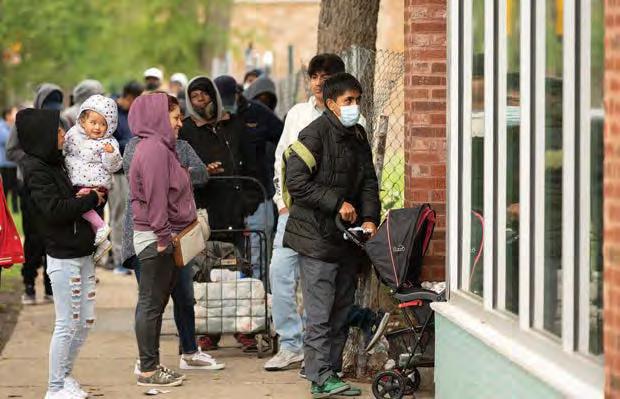
At the end of February, some 2 million families in Illinois saw their food bene ts reduced with the end of the federal Families First Coronavirus Response Act. e emergency allotment, enacted in March 2020, provided households that participate in the Supplemental Nutrition Assistance Program, or SNAP, on average an additional $90 a month for food, with some families receiving more than $300.
e extra COVID SNAP payments were a needed piece of emergency legislation during the pandemic, reducing food insuciency by approximately 9% with larger impacts for Black and Hispanic households and families with children, according to a study by Diane Whitmore Schanzenbach, a Northwestern University economist who studies SNAP.
On average, SNAP households will now see a 30% to 40% drop in their monthly bene ts, she said. Based on data from 14 states that chose to end their COVID allot-
additional bene ts ended, Chicago food pantries are reporting some of their highest demand on record. e Common Food Pantry in the North Center neighborhood served 795 households last month, a near 50% increase over the same month from a year ago.
Beyond Hunger, which operates a food pantry in Oak Park, saw a 30% increase in April from a year ago.
gle to meet the high demand. People will be getting less.”
O’Conor said that rationing will mean fewer of the higher-cost options, like meats, and making sure there is enough milk and eggs for everyone. She said that in 2022, the pantry spent 36% more in food costs than it had the year before. And O’Conor thinks this year will be even higher.
need for their nutrition because they just don’t have the money and that can lead to negative health outcomes,” she said.
Families may also live in food deserts, where there are fewer healthy food options, if any at all.
ways to get money,” she said.
Other pantries have also expressed the need for increased donor contributions to help them meet the surging demand.
ments earlier, Schanzenbach expects food insu ciency — the share of households that report they sometimes or often don’t have enough to eat over the prior week — to increase by about 10%.
In the two months since the
e Greater Chicago Food Depository’s Lee said their partners are also reporting increased demands and crowds. For food pantries serving longer lines, the demand for food has put strains on their supplies.
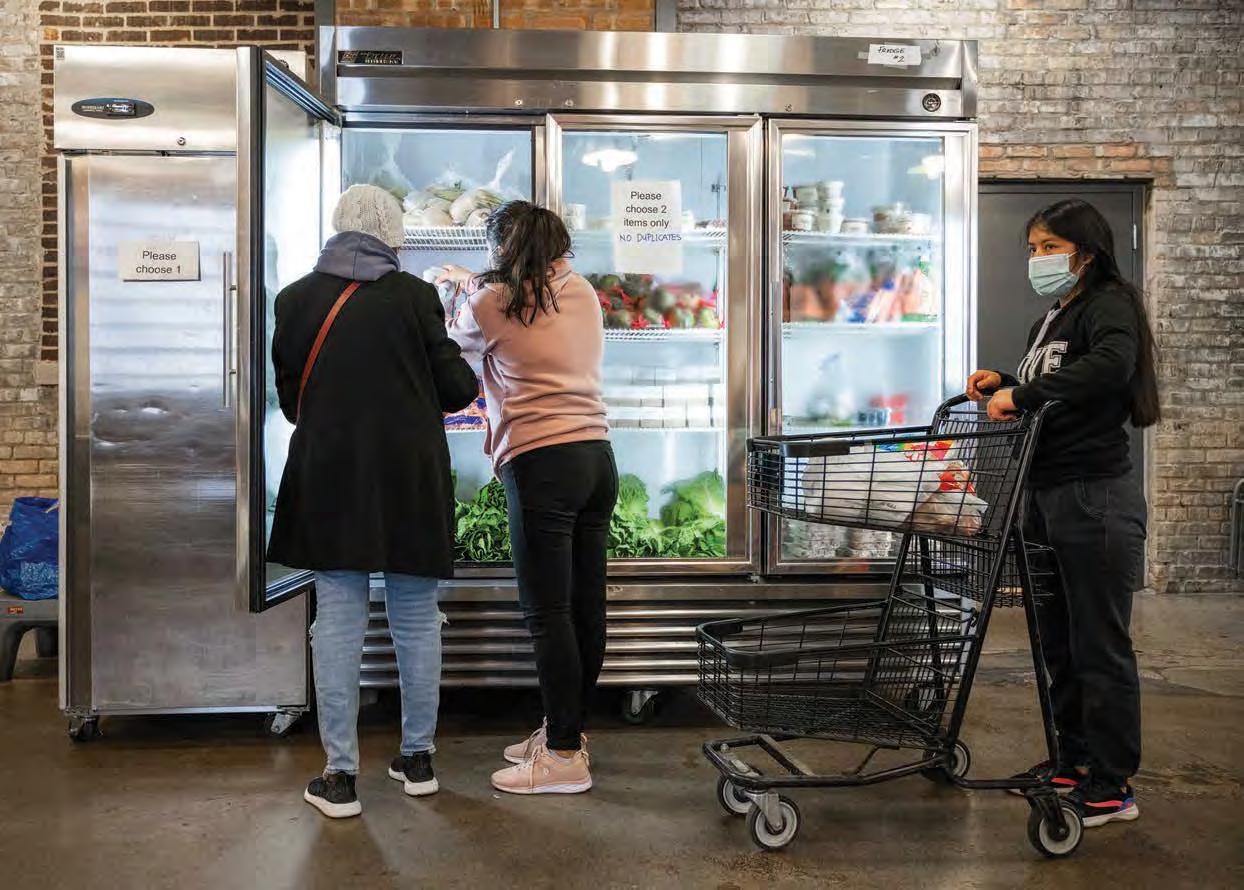
“We have to basically ration out what we can give folks so we don’t run out,” said Margaret O’Conor, executive director of Common Pantry. “ at’s where we’re going to strug-
e price for home-consumed food rose by 11.4% last year, according to the U.S. Department of Agriculture, the highest percentage change in decades, and it’s expected to continue to increase by another 6.6% in 2023.
Nina Bernacet, a program manager at Beyond Hunger, fears that the high cost of food will cause clients to begin choosing cheaper, unhealthy alternatives.
“Clients are saying they’re foregoing eating certain things that they
Nikkitta Johnson, 28, who lives in East Gar eld Park, said after four local Walmarts recently closed that food pantries are some of the only healthy food options in the area. “Prices are going up, food pantry lines are longer and things just aren’t looking good,” he said.
O’Conor said that the spike in demand has also come at a time when corporate and individual philanthropy has largely dried up, adding more strain to scrambling pantries.
“Organizational contributions are down signi cantly and that is very, very troublesome and that puts a lot of pressure on us to nd
“People donating money right now is the best way to help us ght this crisis,” said Pam Jones, a pantry coordinator at Sixth Grace Presbyterian Church pantry on the South Side. “We’re also trying to gure out how to get companies to send us things like our, sugar, salt — every little thing counts at this moment.”
Jones is concerned that the hunger crises will worsen during the summer months, when children, who may have had their meals at school, are now eating more at home.
“Parents will soon be put in tough decisions, like deciding between eating dinner or putting gas in the car to get that new job,” she said.
14 MAY 22, 2023 • CRAIN’S CHICAGO BUSINESS
additional bene ts ended, Chicago pantries are reporting some of their highest demand on record
“PEOPLE DONATING MONEY RIGHT NOW IS THE BEST WAY TO HELP US FIGHT THIS CRISIS.”
Pam Jones, pantry coordinator, Sixth Grace Presbyterian Church pantry
Breakthrough Urban Ministries’ Fresh Market in Gar eld Park.
GUIDE TO STRATEGIC GIVING
GUIDE TO STRATEGIC GIVING






PARTICIPANTS
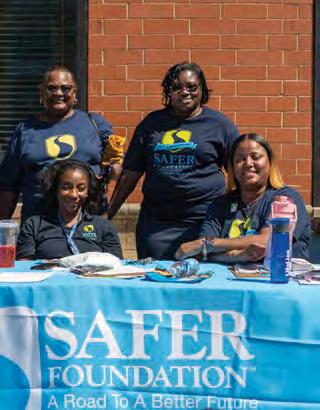
16-17 Catholic Charities of Archdiocese of Chicago 18-19 Chicago Community Trust 20-21 Cradles to Crayons 22-23 Greater Chicago Food Depository 24-25 Honor Flight Chicago 26-27 Mercy Home for Boys & Girls 28-29 The Night Ministry 30-31 Special Olympics Illinois 32-33 United Way of Metro Chicago 34 Alzheimer’s Association Illinois Chapter 35 Ann & Robert H. Lurie Children’s Hospital of Chicago 36 Daniel Murphy Scholarship Fund 37 Episcopal Charities 38 Facing History 39 Fatherhood Educational Institute 40 Genesys Works 41 Haymarket Center 42 Holy Family Ministries 43 Les Turner ALS Foundation 44 Maryville Academy 45 North Shore Exchange 46 Perspectives Charter Schools 47 Prairie State College Foundation 48 Safer Foundation 49 The Salvation Army North and Central Division Illinois 50 Special Gifts Theatre 51 Start Early 52 Thresholds 53 Women’s Business Development Center
2023
SPONSORED CONTENT 15 For information about the sponsored content in this section,
of
- schow@crain.com.
29 Chicagoland nonpro ts highlight their missions and share how you can get involved.
contact Sarah Chow, Director
Sales
WHAT WE DO
As the region’s largest human services provider, Catholic Charities partners with mission-driven people and organizations across Cook and Lake counties to improve lives, nourish spirits, and strengthen and empower people, families, and communities.
We are called to accompany anyone in need, regardless of their faith, gender, race, or ethnicity. Our 1,200 employees o er 60 programs at 150 locations, providing vital resources in the region’s most under-served neighborhoods.
In 2022, we served nearly 375,000 individuals through our programs, including:
•Welcoming asylum seekers for 4,000 people from Central and South America, connecting 700 with loved ones in other states, and providing housing case management for 770 families
•Refugee resettlement for 150 people from Afghanistan, Ukraine, and other nations placing them on a path toward becoming self-reliant, securing housing for every family, and enrolling every child in school
•Senior supportive services culminating in 81,000 case manager visits, linking seniors to care and ensuring safety
•Food pantries accessed by 40,000 people in our 11pantries and warm and nutritious meals delivered to over 11,000 seniors
•A ordable housing for 11,000 seniors in 71 buildings, helping them to spend later years in a place of their own
•WIC Grocery Centers visited by 52,000 mothers and their children, with access to hard-to- nd baby formula
•Doula support, home visits, and case management for 2,200 new and expectant parents and their children
•Domestic violence shelter and support for 75 mothers and their children, with 300 survivors receiving ongoing support
•Youth mentoring for 600 youth, led by positive role models who build youth self-con dence
•Counseling for 3,600 adults and children, many of whom received services in under-resourced communities
EVENTS & FUNDRAISING
HOW YOU CAN HELP
EXPLORE: We host numerous annual events to bene t our programs. With new committees, events, and learning opportunities being developed each year, everyone is welcome to get involved. Check out our upcoming events for details on how you can connect with Catholic Charities. Visit catholiccharities.net/events
HELP OTHERS: Our employees partner with dedicated volunteers to serve anyone in need in neighborhoods across the region. Volunteering opportunities for groups, companies, and congregations are available to address leading concerns in their community. Visit ccofchicagovolunteer.com.
DONATE: Your gi supports mothers and their children seeking food and counseling; youth in need of mentoring; seniors requiring housing and support; women escaping domestic abuse; and so much more. To make a donation, visit catholiccharities.net/donate.
ADDRESS 721 N. LaSalle St. Chicago, IL 60654
PHONE 312-655-7525
WEBSITE catholiccharities.net
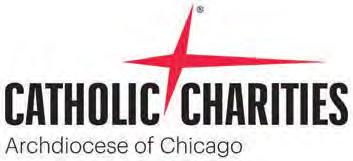
1,244 EMPLOYEES
2022 REVENUE $184,657,847
FOUNDED IN 1917
LEADERSHIP
EXECUTIVE COMMITTEE OF THE BOARD OF DIRECTORS
Sally Blount President and CEO
Kevin W. Cleary
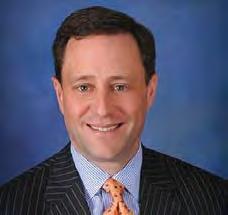
M.Therese Krieger Vice Chair
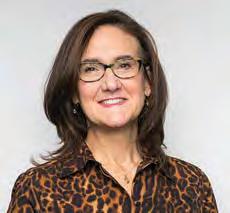
Michael Monticello Chair
Charles W. Mulaney, Jr.
STAFF
Elida Hernandez Chief Finance and Administration Of cer, and Treasurer
Maria Simon Chief Compliance and Legal Of cer, and Secretary
Ami Novoryta Chief Program Of cer
FUNDING SOURCES
7%
Service Fees
21%
Private Contributions
Charities Golf Classic – July 17, 2023. Hosted at both Shoreacres and Knollwood Club, this Lake County community favorite includes golf, lunch, and dinner, along with a paddle raise and auction. There is still time to join us this year!
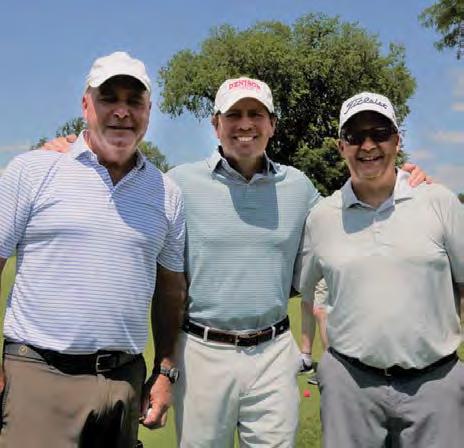
Spirit of St. Nicholas Ball – December 1, 2023. For more than 30 years, generations of families have attended this black-tie dinner dance as part of their Christmas tradition. Make your plan to join us for this inspiring event at the Chicago Hilton.
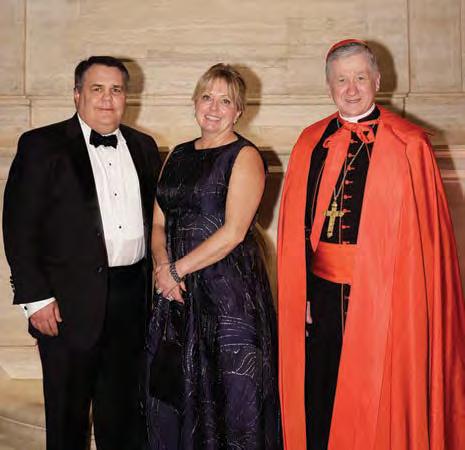
72%
Government Grants
16 SPONSORED CONTENT
2023 CRAIN’S GIVING GUIDE
MICHAEL MONTICELLO Chair of the Board of Directors
SALLY BLOUNT, PH.D. President and CEO
Support families in need all year long

As the region’s largest human servicesprovider, Catholic Charities brings joy and hope to thousands of mothers, children, and families, manyliving in poverty.

Make a gift today at catholiccharities.net
WHAT WE DO
As our region’s community foundation, e Chicago Community Trust is a platform for change that connects philanthropy to impact. We bring together generous donors, committed organizations, and caring residents to e ect lasting change that moves our entire region forward.
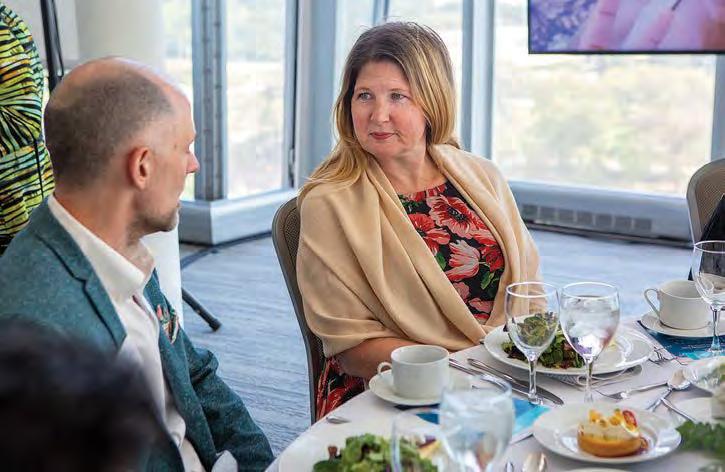
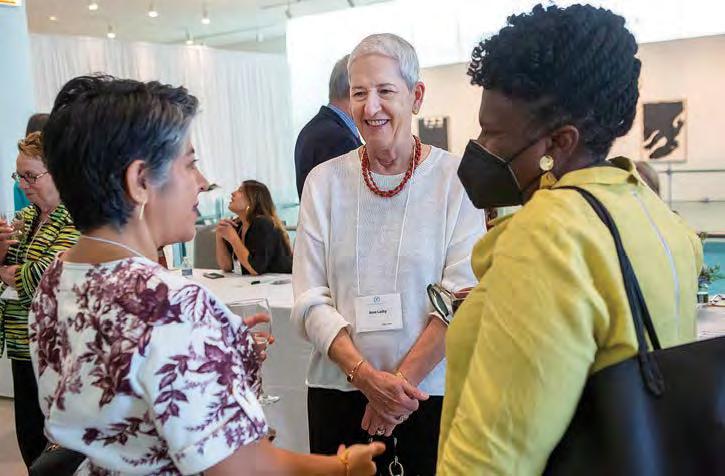
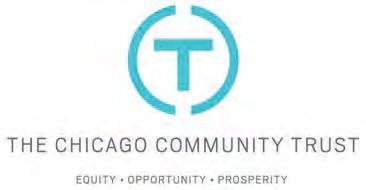
For over 100 years, individuals and families have entrusted their philanthropic resources and visions to the Trust’s stewardship. Our expertise goes to work helping donors translate their funds and passions into innovative and impactful giving strategies.
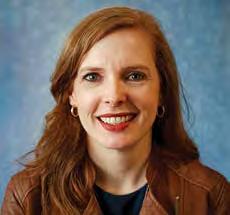
Guided by our deep community knowledge, we make grants, lead, convene, and collaborate in pursuit of a Chicago region where equity is central, and opportunity and prosperity are within reach for all.
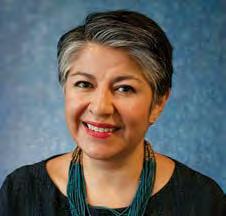
In addition to our commitment to respond to our most vulnerable residents’ critical needs, in 2019 we embarked on a 10-year strategy focused on closing the racial and ethnic wealth gap for the Chicago region.
HOW YOU CAN HELP
EXPLORE: Visit www.cct.org to learn how e Chicago Community Trust unites generous donors, committed nonpro ts, and caring residents to e ect lasting change that moves our entire region forward.
JOIN: e Trust o ers many opportunities to explore the most pressing issues facing our communities, partner with like-minded donors, and support Trust initiatives that bene t the Chicago region and all who call it home.
HELP OTHERS: In FY2022, the Trust and our donors made $354+ million in grants to nonpro ts serving the Chicago region, including $77 million to support economic growth in disinvested communities.
DONATE: e Chicago Community Trust works with individuals, families, businesses, foundations, and trusted nancial advisors to build charitable giving plans and transform your generosity into powerful, meaningful impact.
ADDRESS 33 S. State St., Suite 750 Chicago, IL 60603
PHONE 312-616-8000
WEBSITE cct.org
116 EMPLOYEES
2022 ASSETS $4,269,072,031
FOUNDED IN 1915
EVENTS & FUNDRAISING
LEADERSHIP
18 SPONSORED CONTENT 2023 CRAIN’S GIVING GUIDE
In October 2023, the Trust will convene community and philanthropic leaders in conversation with WTTW News’ Brandis Friedman on the work being done across our communities to advance opportunity and prosperity, and the solutions that can be achieved through partnerships. Email: Adele Nandan at anandan@cct.org if interested in learning more.
JESSICA STRAUSBAUGH Chief Financial Of cer
ANDREA SÁENZ President and CEO
Clothilde Ewing Vice President of Strategic Communications Lisa Jericho Vice President of Innovation & Technology Amy J. Peña General Counsel Kristin Carlson Vogen Interim Vice President of Philanthropic Services Wendell Williams Senior Director for Talent & Administration
What if every Chicagoan had the opportunity to reach their full potential?

Asking “what if” sparks hope and inspires action. At The Chicago Community Trust, we start with the question and, through partnerships, seek answers and solutions that lead to lasting change.
With your support, we can transform “what ifs” into what’s possible. Join us.
Optimize your giving today by contacting Kristin Carlson Vogen at kvogen@cct.org.
www.cct.org/give

33 SOUTH STATE STREET, SUITE 750, CHICAGO, ILLINOIS 60603
WHAT WE DO
1 in 2 children in Chicago is at risk of experiencing Clothing Insecurity—the lack of access to a ordable, adequate, and appropriate clothing. And no government programs are dedicated to ensuring that children have the basics they need—such as clothing, diapers, or hygiene products. Since 2016, Cradles to Crayons® (C2C®) has stepped up to ll this need in Chicago. Cradles to Crayons believes that all children deserve the essentials they need to feel safe, warm, ready to learn, and valued. Founded in 2002, Cradles to Crayons provides children from birth through age 12, living in homeless or low-income situations, with the essential items they need to thrive—at home, at school, and at play—for free. Cradles to Crayons collects and distributes new and high-quality used children’s goods by engaging and connecting communities—and supplies essential resources free of charge through a network of more than 60 local Service Partners. C2C sets a gold standard of individual, family, and corporate volunteer engagement, and through its “Giving Factories®” provides unique, hands-on opportunities to directly help local families. Headquartered in Boston, MA, C2C opened in Philadelphia in 2007, Chicago in 2016, and New York City via an innovative online platform, Giving Factory Direct (GFD), in 2020. For more information, please visit www.cradlestocrayons.org.
HOW YOU CAN HELP
EXPLORE: Learn more about the ways Cradles to Crayons Chicago is making a di erence for children in need in our community by visiting https://www.cradlestocrayons.org/ chicago/.
JOIN: Get involved as a volunteer at the Giving Factory. Volunteers sort and inspect donated items and package them for delivery to the children who need them. Volunteers are critical to Cradles to Crayons Chicago’s work. https://www. cradlestocrayons.org/chicago/take-action/volunteer/


HELP OTHERS: Donate new or gently used clothing in sizes newborn to adult medium at one of Cradles to Crayons Chicago’s 43 drop-o locations in Chicagoland. A list of drop-o locations can be found at https://www. cradlestocrayons.org/chicago/take-action/donate-goods/ nd-local-drop-o /.
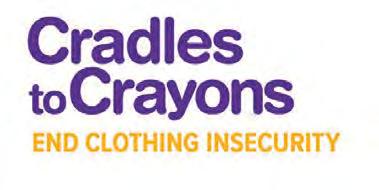
DONATE: Invest in our mission to End Clothing Insecurity through our corporate sponsorship opportunities. As an Annual Corporate Partner, you have the opportunity to customize a plan that maximizes the e ect of your philanthropy — while providing meaningful volunteer and engagement opportunities for your employees. Corporate Partnerships - Cradles to Crayons - Chicago
SHARE: Find Cradles to Crayons on Twitter, Facebook, LinkedIn, and Instagram to share the mission and impact of the organization.

ADDRESS
2500 W. Bradley Place Chicago, IL 60618
PHONE 312-767-1008
WEBSITE
cradlestocrayons.org/chicago
24 EMPLOYEES
2022 REVENUE $4,600,000
FOUNDED IN 2002
EVENTS & FUNDRAISING
Gear Up for Winter Un-Gala ® Cradles to Crayons Chicago’s signature Un-Gala® event brings families together to have fun and give back. Each winter, volunteers – of all ages – gather to sort and pack everyday essentials – like hats, gloves, scarves, and more – that bring warmth to thousands of Chicagoland children in need. Un-Gala takes place on November 11, 2023.
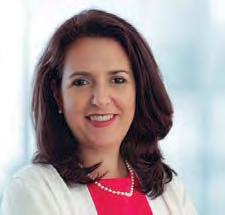
FUNDING SOURCES
20 SPONSORED CONTENT
2023 CRAIN’S GIVING
Backpack-A-Thon® Unlike their peers, kids from lowincome or homeless families may lack basic school supplies. Cradles to Crayons signature Ready for Learning event, Backpack-A-Thon® brings together 700+ volunteers to stuff 90,000 backpacks and to enable kids to arrive at school ready and excited to learn. Backpack-A-Thon® is a highenergy corporate event fueled by great spirit and friendly competition and takes place on August 2, 2023.
GUIDE
DAWN MELCHIORRE Executive Director, Cradles to Crayons Chicago
LEADERSHIP Corporate 52% Individual 30% Foundation 16% Events 1% Other 1%
LYNN MARGHERIO Founder and CEO Cradles to Crayons
Cradles to Crayons® – Chicago is on a mission to #EndClothingInsecurity for all children in Chicagoland and beyond. Clothing Insecurity is the lack of access to affordable, adequate, and appropriate clothing. Currently, 1 in 2 children across Chicagoland are at risk for experiencing this hidden crisis daily.
Take action now to join our movement to #EndClothingInsecurity!

WHAT WE DO
e Greater Chicago Food Depository, Chicago’s food bank, believes a healthy community starts with food. Our mission is to end hunger. We are at the center of a network of more than 800 partner organizations and programs working to bring food and hope to our neighbors across Chicago and Cook County. e Food Depository also addresses the root causes of hunger -poverty, systemic inequity, and structural racismthrough paid job training, bene ts outreach, advocacy and other innovative solutions. We are a proud member of Feeding America—the national network of food banks. By working to help those most in need go from hungry to hopeful, we truly become a Greater Chicago.
Since 1979, the Food Depository has been at the forefront of Chicago and Cook County’s response to feeding our neighbors at risk of hunger, including during times of heightened need. Over the last three years, families have struggled to put food on the table, rst due to the pandemic and then now when critical public bene ts such as SNAP (Supplemental Nutrition Assistance Program) have returned to pre-pandemic levels – all while food prices remain stubbornly elevated.
is prolonged period of challenges has pushed many of our neighbors to the brink of food insecurity, with many turning to pantries for the rst time. Recovery for many families will take months if not years. Households, especially those with children, and those in communities of color will continue to experience higher rates of food insecurity.
Learn more at chicagosfoodbank.org.
HOW YOU CAN HELP
DONATE: Financial donations enable us to distribute healthy food to people in need and invest in programs to address the root causes of hunger. During these challenging times, nancial support gives us the greatest exibility to respond—and adjust—to rising food costs. Every dollar donated can help us provide the equivalent of three meals for our neighbors in need. Donate at chicagosfoodbank.org/ donate.

VOLUNTEER: Volunteers play a critical role in ending hunger. In-person opportunities for individuals and groups are available to repack food in our warehouse, deliver summer meals to children, support mobile food distributions and more. Become a part of this important work. Sign up at chicagosfoodbank.org/volunteer.
HELP OTHERS: Start a virtual food drive with your family, friends or coworkers to help us purchase our most needed foods. Get started today at chicagosfoodbank.org/fooddrive.

CONNECT: Help engage others. Share our stories on Facebook, Twitter, LinkedIn and Instagram and nd ways to take action. Find us @fooddepository.

LEADERSHIP
Sheila Creghin VP - Operations
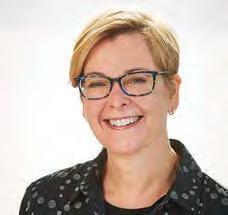
Joni Duncan VP - People & Culture
Amy Laboy VP - Programs & Community Partnerships
Sophie Milam VP - Policy, Advocacy & Engagement
Mary Pelican VP - Finance
ADDRESS
4100 W. Ann Lurie Place Chicago, IL 60632 WEBSITE chicagosfoodbank.org and bancodealimentoschicago.org
PHONE 773-247-3663
260 EMPLOYEES
2022 REVENUE $161.5M FOUNDED IN 1979
Jill Rahman Chief Operating Of cer
Joe Rodriguez VP - Transportation, Warehousing and Facilities Management
Andy Seikel Head of Technology & Transformation
Jill Zimmerman Chief Philanthropy Of cer
FUNDING SOURCES
(WITHOUT INVESTMENTS)
Events
12%
Corporate Foundations
25%
4% Other 1% 58% Individual Donors Government grants and fees
22 SPONSORED CONTENT
As pandemic-era relief programs end amid rising food prices, many families are turning to pantries for the rst time. The Food Depository and our community partners are prepared to meet an elevated need. See how you can make a difference at chicagosfoodbank.org/get-involved.
2023 CRAIN’S GIVING GUIDE
Volunteers are essential to our work to end hunger. They help repack food to distribute to our community partners and programs throughout Cook County. Join the movement to create a hunger-free community. Sign up to volunteer at chicagosfoodbank.org/volunteer.
KATE R. MAEHR Executive Director & CEO
VOLUNTEERING
Special
1 IN 4 CHILDREN IS FACING HUNGER.
Please

Let’s rise to the challenge, Chicago.
Only a hunger-free community can really be healthy. When we help feed our neighbors, we truly become a greater Chicago. chicagosfoodbank.org/rise give now.
WHAT WE DO
Honor Flight Chicago’s mission is to Honor, ank, and Inspire by building awareness and appreciation of the debt of gratitude America owes its veterans. e centerpiece of our programming is the life-changing Day of Honor in Washington, D.C., visiting the memorials built in tribute to the service of our veterans from WWII, the Korean War, and the Vietnam War.
Honor Flight Chicago was founded in 2008 to bring WWII veterans to their newly constructed memorial in Washington, D.C., which was not completed until 60 years a er the war’s conclusion. A er witnessing the impact the experience had on these senior heroes, Honor Flight Chicago expanded its mission to include Korean War veterans in 2016 and Vietnam War veterans in 2019. Now all three generations of heroes travel together.
is trip is provided at no cost to the veterans and is intended as a heartfelt thank you for their service and sacri ce from a grateful nation. Honor Flight Chicago encourages community and student participation in all of our programs and uses lessons derived from the Day of Honor trip in its Operation Education program, inspiring students to learn about the importance of service.
With the welcomed support of generous donors and a caring public, Honor Flight Chicago intends to continue its mission to include veterans of wars – past, present, and future – as we recognize the bravery, determination, and patriotism of our veterans.


EVENTS & FUNDRAISING
HOW YOU CAN HELP
EXPLORE: Visit our YouTube channel at honor ightchicago.org/youtube to experience our Day of Honor and to meet many of the over 10,000 senior war heroes we have brought to the memorials in Washington, D.C.
JOIN: We take pride when we hear people say they have never seen an organization with the type of devoted volunteers that we have. Join our volunteer family that’s nearly 1,000 members strong! Honor ightchicago.org/ volunteer
HELP OTHERS: When our senior veterans returned home from service, they did not receive the thanks and respect their sacri ce earned. By volunteering, donating and recruiting veterans to y, you help provide a Welcome Home more than 50 years is overdue.


DONATE: It costs approximately $1,250 per veteran to provide the full life-changing Day of Honor in our nation’s capital that they deserve. With over 2,500 veterans still waiting, your donation is important in ensuring every veteran receives the thanks and respect they have earned.
SHARE: e trip we provide is one day, but the experience is life-changing. Make sure the senior veterans in your life sign up for their Day of Honor today. Our application is available at honor ightchicago.org
LEADERSHIP
ADDRESS
PHONE
773-227-8387
9701 W. Higgins Rd., Suite 310 Rosemont IL 60018 WEBSITE honor ightchicago.org
3 EMPLOYEES
2022 REVENUE $1.66M

FOUNDED IN 2008
FUNDING SOURCES
4.8%
41.6%
Programs
52.8%
Contributions
24 SPONSORED CONTENT
Operation Education 5K. Each fall members of our Operation Education committee host a 5K on the southwest side to promote our mission in schools.
Photo by Honor Flight Chicago
(WITHOUT INVESTMENTS)
Annual Law Enforcement Hockey Classic. Each spring teams from the Chicago Police and Chicago FBI battle on the ice in Bensenville to raise money to honor our senior veterans.
2023 CRAIN’S GIVING GUIDE
Photo by Honor Flight Chicago
Events
Retail
.08%
MARY
PETTINATO Co-Founder and Treasurer JOHN PTAK President Doug Mef ey Co-Director Edna Ho Co-Director Paul Meincke Vice-President Cyndi Greenglass Secretary Mark Meskimen Board Member Alan Gar eld Board Member Bonni Pear Board Member Peter Richey Board Member
HONOR FLIGHT CHICAGO

Honor Flight Chicago recognizes the bravery, determination, and patriotism of our nation’s senior war veterans with a one-of-a-kind journey to Washington, D.C. The trip is only one day, but the experience is life-changing. Visit honorflightchicago.org to learn more about volunteering, signing up a veteran, or corporate sponsorship opportunities.
10,000+ VETERANS

Since our founding in 2008, Honor Flight Chicago has provided a life-changing Day of Honor, Thanks, and Inspiration to more than 10,000 senior war veterans at the memorials built in tribute to their service in Washington, D.C.

500+ CELEBRATIONS
Mission Never Forget volunteers send letters and cards to our most-senior veteran alumni to help celebrate milestone birthdays or provide encouragement during times of hardship. These volunteers honored over 500 veterans with this program in 2022.
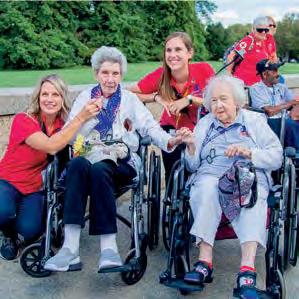
The Honor Flight experience was one of healing. Healing of wounds carried from too long ago about how I and other veterans were treated after our return from Vietnam. I am a hero. The Honor Flight Chicago team made me feel like one. Thank you.
200+ SCHOOLS










Operation Education's mission is to connect senior veterans with local schools to inspire gratitude and service among our youngest generation. We have connected over 200 local schools to our veterans and our programming since founding this initiative.




HFC DOCUMENTARY




50 EPISODES




















The "Honor. Thank. Inspire." podcast captures stories from first-person witnesses to history. Host Paul Meincke sits down with senior war heroes to hear their experiences in service to our nation. Available wherever you get your podcasts.
I was in tears most of the day, but they were tears of joy. The Honor Flight Chicago trip was more than I could have imagined. In my Welcome Home celebration, someone said ‘Welcome Home, Harold.’ This really touched my heart.

HonorFlightChicago.org
“
”
“ ”
WHAT WE DO
Since 1887, Chicago’s Mercy Home for Boys & Girls has transformed the lives of abused and at-risk young people by giving them a safe place to live, healing from emotional trauma, life skills, education, career exploration and encouragement from dedicated youthcare professionals.
rough its support of children and families, Mercy Home helps hundreds of people annually.

Young people come to Mercy Home from environments marked by challenges that include abuse, neglect, abandonment, housing instability, poverty, community violence and more. With the help of donors throughout the United States, the organization gives these children a loving home and round-the-clock care. Mercy Home’s expert sta provides kids with therapeutic, academic and vocational resources so that they may heal from the wounds of their pasts and build success for their futures.
e Home continues to nurture these young people’s growth and success—even a er they leave its full-time care—through its Community Care program, which o ers a lifelong connection to an extended Mercy Home family and coordinates any continued support services needed.
Additionally, Mercy Home’s Friends First mentoring program brings together adult volunteers who act as role models for at-risk youth living in the community beyond the Home. Mercy Home is 100 percent privately funded and operates at two locations: a home for boys in the West Loop and a home for girls in the Beverly/Morgan Park community.
EVENTS & FUNDRAISING
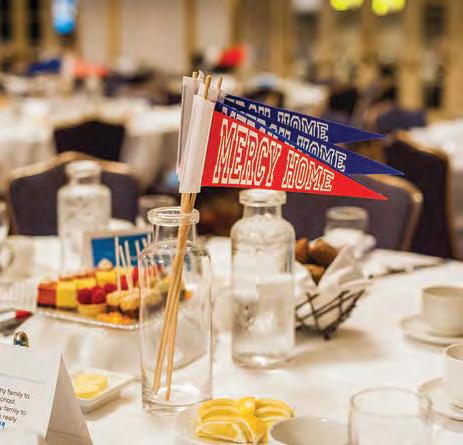

HOW YOU CAN HELP
EXPLORE: Learn more about our work with kids in crisis on our website, mercyhome.org. By visiting our site, you’ll also read stories about our young people’s triumphs and nd information and resources about topics like trauma, abuse, mental health and more.
JOIN: Our programs are supported by several volunteer boards who bring their business and professional experiences to the work of advancing our mission to help kids. Learn more at mercyhome.org/leadership.
HELP OTHERS: We o er a variety of opportunities for involvement, whether as volunteers, mentors, tutors or as businesses that provide support or experience to help our young people learn, grow and succeed.
DONATE: Mercy Home is 100 percent privately funded and relies on the generosity of individuals and organizations to give kids full-time care, healing and opportunity. To donate, please visit mercyhome.org/givingguide.
SHARE: Help us get the word out to others who can get involved. Visit us on Facebook at facebook.com/mercyhome, on Twitter @mercyhome and on Instagram @mercyhome.

LEADERSHIP
Murphy CFO, VP Finance, Human Resources & Facilities
 Joe Wronka COO/VP – Advancement
& CEO
Joe Wronka COO/VP – Advancement
& CEO
Tom
Gilardi VP – Community Care
Steve
Snyder CIO, VP – Information Technology
PHONE 877-637-2955
337 EMPLOYEES
2022 REVENUE $48,865,250
FOUNDED IN 1887
Emily Neal VP – Organizational Development & Clinical Operations
Liz
Kuhn Tomka VP – Education & Career Resources
Alban
Fisher VP – Youth Programs
ADDRESS 1140 W. Jackson Blvd. Chicago, IL 60607 WEBSITE mercyhome.org/givingguide FUNDING
(WITHOUT INVESTMENTS)
5% Other 1%
Grants
6% Programs
5%
Events
83% Contributions
26 SPONSORED CONTENT Join Mercy Home for the inaugural Lux Gala, November 18. This upscale, black-tie event will feature immersive and electrifying experiences that will thrill your senses as you journey through the exquisitely restored art deco interior of Chicago’s Old Post Of ce. Learn more at MercyHome.org/LuxGala
2023 CRAIN’S GIVING GUIDE
Mercy Homes’ Leader Council, a group of preeminent women in the business and civic arenas, celebrates the academic achievements of Mercy Home’s graduates at the annual Graduates’ Luncheon. Visit MercyHome.org/ GradLunch for details about this year’s event, which will be held on June 6.
REV. L. SCOTT DONAHUE President
Cheryl
SOURCES
Tamika loves design and wants to be an architect. But her mom's drug abuse kept her family homeless and hungry. Tamika had no time for dreams - she had to focus on survival. Then Tamika came to Mercy Home, where she found the stability and encouragement she needed to pursue her personal blueprint for success. Today, she's a college student, working toward an architecture degree. Help more kids like Tamika build a brighter future.

www.MercyHome.org/GivingGuide
WHAT WE DO
e Night Ministry is a Chicago-based nonpro t whose mission is to provide human connection, housing support, and health care to those who are unhoused or experiencing poverty. With an open heart, we compassionately accept each individual as they are and work alongside them to advocate for their immediate physical, emotional, and social needs while a rming our shared humanity.
For many unhoused and precariously housed young people, e Night Ministry provides a vital rst step toward safety and improved circumstances. We o er supportive living environments and services that help young people stabilize and build the foundations for independent futures. Our youth housing programs range from overnight shelter to long-term transitional living and include a program exclusively for pregnant and parenting young mothers and their children. e Night Ministry also supports young people who have experienced homelessness who are now living in their own apartments through a partnership with other local nonpro ts.
e Night Ministry’s health outreach program brings accessible, compassionate health care, resources such as food and clothing, and supportive services directly to Chicago residents who are unhoused and experiencing poverty. Our health outreach bus, featuring a specially designed nurse’s o ce, visits Chicago neighborhoods with high concentrations of poverty and homelessness. Our street medicine team supports individuals living in encampments, addressing their immediate health and survival needs while linking them to resources such as housing. e Night Ministry also assists members of Chicago’s unsheltered population who ride public transit for shelter by bringing our services to select CTA stations.
EVENTS & FUNDRAISING
HOW YOU CAN HELP
DONATE: Your donation helps provide supportive shelter to unhoused young people, free basic health care to individuals unable to access it elsewhere, and compassionate, nonjudgmental relationships that bring hope and help change lives. e Night Ministry has received Charity Navigator’s highest rating ve years in a row and is a Better Business Bureau-accredited charity, so you can donate knowing that your contribution will make an impact in the community. Visit thenightministry.org/donate to make a gi .
VOLUNTEER: Volunteering with e Night Ministry is a rewarding, hands-on way to help our community address homelessness and poverty. Assist us in providing critical services to individuals and families or lend your support in our administrative o ce. Visit thenightministry.org/ volunteer to learn more.
PROVIDE MEALS: Help alleviate hunger among unhoused community members by preparing and serving meals alongside e Night Ministry. Opportunities are available throughout the week in locations around Chicago. Visit thenightministry.org/meals to get started.
DONATE RESOURCES: Your donation of new clothing, gi cards, personal hygiene products, and other resources help unhoused members of the community meet their basic needs. Visit thenightministry.org/wish-list to learn what items are most needed at this time.
LEADERSHIP
Jim King Vice Chair
Lindsay Claytor Treasurer
ADDRESS
1735 N. Ashland Ave, Suite 2000 Chicago, IL 60622
PHONE
773-784-9000
WEBSITE thenightministry.org

125 EMPLOYEES
2022 REVENUE $10.4M
FOUNDED IN 1976
Bennett Applegate, Jr. Secretary
W. Gordon Addington
Dan Alter
Barbara Baran
Dave Berger
Michael V. Borromeo
Rev. Shawna Bowman
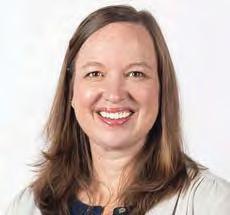

Bradley Caldwell
Erica Hubbard
Norman Jeddeloh
Laura Mandel
Don J. Mizerk
Dana S. Ringer
Kristen Rothenberg
Sonesh Shah
Ted Tomaras
Mark Warren
Jarrod Welch
Max Barab
Kellogg Board Fellow
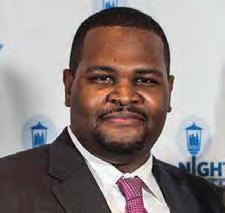
FUNDING SOURCES

28 SPONSORED CONTENT
Night Lights. Save the date for Night Lights, the Annual Gala of The Night Ministry’s Associate Board! Join the young professionals of the Associate Board on October 5 in support of our mission.
2023 CRAIN’S GIVING GUIDE
Lighting Up the Night. An Evening to Bene t The Night Ministry. Join us in support of our mission on June 7. Visit bidpal.net/lutn2023 for tickets and more information.
KIANTAE A. BOWLES Board Chair
ERIN RYAN Interim President & CEO
Individuals Foundations Corporations Government In-Kind Gifts 23% 8% 28% 6% Bequests 5% Congregations 2% Special Events
26%
2%
CONNECTION
OUR IMPACT
LAST YEAR:
• More than 5,600 individuals ser ved
• 535 young people and 101 of their children provided with housing and supportive services
THE NIGHT MINISTRY helps members of the community who are unhoused or experiencing poverty meet their basic needs and nd greater stability by providing housing support, health care, and other resources.
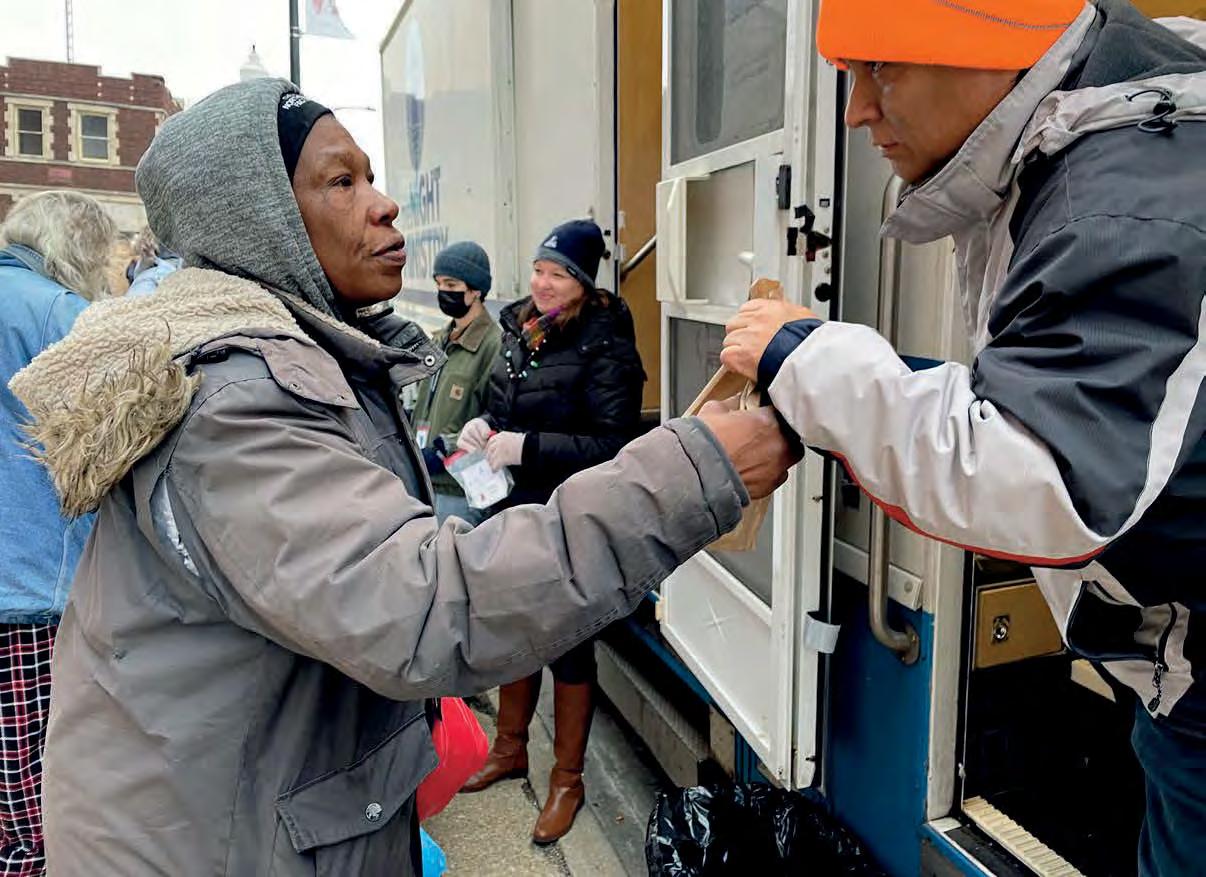
HUMAN CONNECTION—relationships rooted in dignity, acceptance, and compassion— is the foundation of our mission.
CONNECT WITH US at www.thenightministry.org.
• 2,057 free health assessments provided and 383 visits to the emergency room prevented
• 60,390 meals served to individuals who would have otherwise gone hungry
HUMAN CONNECTION HOUSING HEALTH CARE WE’RE ALL
ABOUT THE
WHAT WE DO
Special Olympics is a global organization that unleashes the human spirit through the transformative power and joy of sport, every day around the world. Special Olympics Illinois is a not-for-pro t organization o ering year-round training and competition in 18 sports to a community of more than 55,000 traditional athletes, Young Athletes, Uni ed partners, coaches, volunteers, and more.
Special Olympics transforms the lives of people with intellectual disabilities, allowing them to realize their full potential in sports and in life. Special Olympics programs enhance physical tness, motor skills, self-con dence, and social skills and encourage family and community support. is global organization unleashes the human spirit through the transformative power and joy of sport, every day around the world.
Special Olympics began in Illinois with the rst games at Soldier Field in July 1968 thanks to the e orts of Eunice Kennedy Shriver and her peers. ere are now more than 6 million athletes and Uni ed partners in 170 countries. Special Olympics is nancially sound with diverse revenue streams, a thorough annual budget process and increasing organizational revenue streams. Special Olympics Illinois does not charge athletes or their families to participate in the program.
HOW YOU CAN HELP
EXPLORE: Learn more about what we o er by visiting our website.
JOIN: Attend an event and see rsthand the impact of our programming.
HELP OTHERS: Make a direct impact in your community by signing up to volunteer.
DONATE: Donate to our cause and help transform the lives of our athletes.
SHARE: Follow us @specialolympicsillinois on social media to see the joy come to life. en, share our mission with your family and friends.
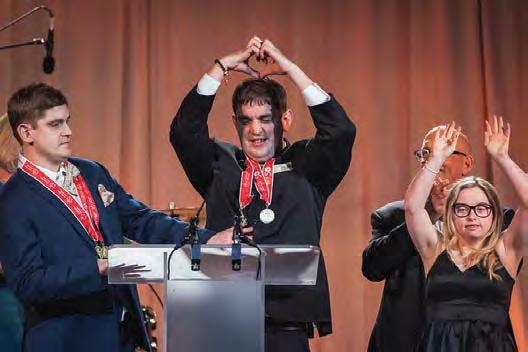
ADDRESS
820 W. Jackson Blvd., Suite 330 Chicago, IL 60607
PHONE 800-394-0562
WEBSITE soill.org
95 EMPLOYEES
2022 REVENUE $19,174,068.88
FOUNDED IN 1968
LEADERSHIP
Kristin Achterhof
Special Olympics Illinois
Board of Directors and Partner & National Co-Chair – Intellectual Property Litigation Practice Katten Muchin Rosenman LLP
Wheeler Coleman Special Olympics Illinois Board of Directors and CEO and Executive Partner, Executive Consultants United LLC

Rob Johnson Special Olympics Illinois Board of Directors and Journalist, Rob Johnson Communications
EVENTS & FUNDRAISING
Michelle Mayer
Senior Director, Marketing & Communications, Special Olympics Illinois

Valerie Michalik
Chief Development Of cer, Special Olympics Illinois
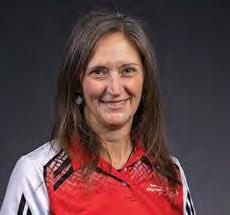
Kim Riddering
Chief Operations Of cer, Special Olympics Illinois
Robert G. Reiter, Jr. Special Olympics Illinois Board of Directors and President, Chicago Federation of Labor
Cindy Villafuerte
Chief Financial and Diversity Of cer, Special Olympics Illinois
FUNDING SOURCES
Other 6% Programs
3% Retail 1%
27%
Contributions
Chicago Ducky Derby. Adopt a duck and watch it splash down into the Chicago River and race to the nish. Winning ducks can receive awesome prizes all while supporting our athletes with intellectual disabilities.

Champions Ball.
bid
enjoy world-class entertainment, celebrate accomplishments from the year, and honor our athletes’ competitive spirit at this
28%
Events
35% Grants
30 SPONSORED CONTENT
2023 CRAIN’S GIVING GUIDE
Attendees
on auction items,
black tie and sneakers gala.
BROOK KLAWITTER Chair, Special Olympics Illinois Board of Directors and Director – Finance Shared Services, USG Corporation
DAVE BREEN President & CEO Special Olympics Illinois











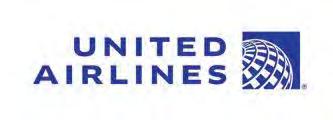








Join the corporations and professionals across the state of Illinois working to bring opportunities to Special Olympics Illinois athletes, through the power and joy of sport. 2023 State Sponsors BE A PART OF THE INCLUSION REVOLUTION Special Olympics Illinois is the only entity in Illinois accredited by Special Olympics, Inc. and authorized by license to use the Special Olympics™ trademark and logo. Any other entity that identifies itself as a “Special Olympics” organization in Illinois is not accredited by Special Olympics, Inc.
WHAT WE DO
At United Way of Metro Chicago, our goal is not to create pathways out of our neighborhoods, but to support and fund collective e orts—neighborhood-led coalitions—that galvanize resources, ideas, and energy so neighborhoods and our region become stronger and more equitable. We do this work through a dualapproach strategy: meeting basic needs and transforming neighborhoods from the inside out.
United Way impact grants support local nonpro ts that deliver high-quality programs addressing the basic needs of our neighbors, such as food, shelter, and access to healthcare. And with the launch of 211 Metro Chicago, all Cook County residents now have a 24/7/365 resource to get the health and social service support they need, when they need it.
rough the Neighborhood Network Initiative, United Way works with hundreds of agency and community partners in 18 neighborhoods across the region who live, work, and intimately know their communities’ biggest challenges and greatest opportunities. We bring together the people, ideas, and resources to build thriving neighborhoods through community-based and residentled programs.
United Way brings together businesses, government, philanthropic, individual, and community leaders to deliver funding and resources to and amplify the expertise of nonpro t organizations across greater Chicago. And we connect donors and organizations that want to invest in the Chicago region with opportunities to make an impact.
EVENTS & FUNDRAISING
HOW YOU CAN HELP
GIVE: Now is the time to think big and drive change. Join United Way and invest in continued progress as we LIVE UNITED to build a stronger, more equitable Chicago region where every person’s basic needs are met, neighborhoods can thrive, and our region prospers. Give today at LIVEUNITEDchicago.org/donate.
ADVOCATE: Learn more about our work and how you can help by subscribing to our newsletter. Visit LIVEUNITEDchicago.org to sign up.
VOLUNTEER: United Way of Metro Chicago o ers a variety of ways to volunteer and give back. Get connected with meaningful volunteer opportunities for individuals and organizations that create an impact across the Chicago region. Visit LIVEUNITEDchicago.org/volunteers to learn more.
SHARE: Connect with us on Facebook @unitedwaychicago, Twitter and Instagram @unitedwaychi, and LinkedIn @United Way of Metro Chicago.
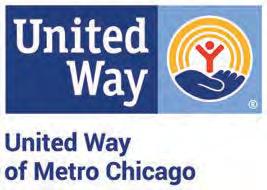
READ OUR STORIES: Read about the true impact being made in the lives of individuals and families in neighborhoods across the region. Check out our blog at LIVEUNITEDchicago.org/stories.
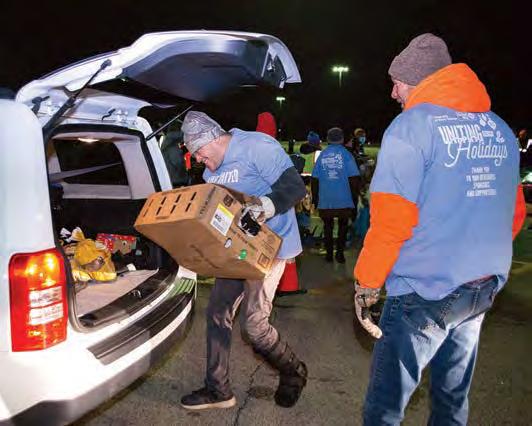
LEADERSHIP
SEAN GARRETT President & CEO CHERYL A. FRANCIS Board of Directors Chairperson
Chris Preston Chief Development Of cer
Ronald DeNard Chief Financial Of cer
Kimberlee Guenther, Ph.D. Chief Impact Of cer
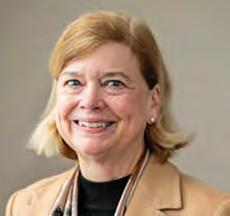
Tamiya Aurel Chief People & Equity Of cer
Jackie Grimes VP – Marketing & Communications
Anna Lee
VP – Initiatives & Public Programming
Jeffrey Gawel Chief Information & Technology Of cer
Andrew Vail General Counsel
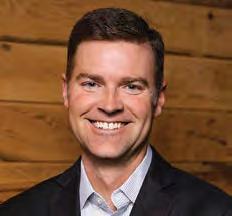
Linda T. Coberly Board of Directors, Vice Chairperson
Manuel Flores Board of Directors, Treasurer
Wendell Dallas Campaign Chair
Edward W. McGrogan North-Northwest Suburban Regional Board Chair
Johanns Williams South-Southwest Suburban Regional Board Chair
Mark Skerjan West Suburban Regional Board Chair
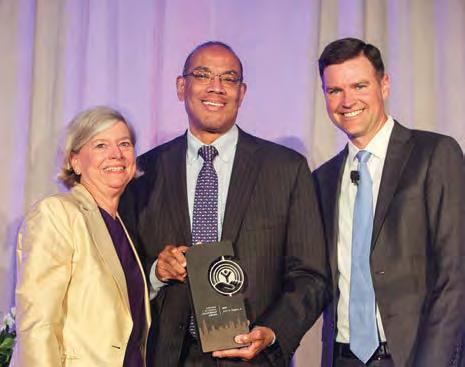
32 SPONSORED CONTENT
Volunteers load holiday meal boxes into community member vehicles at one of eight Uniting for the Holidays distribution locations.
Photo Credit: Tate Samata
Uniting for the Holidays. Uniting for the Holidays provides holiday meals and gifts for families in our suburban communities, brightening the holiday season for thousands of neighbors experiencing food insecurity. LIVEUNITEDchicago.org/Uniting-Holidays.
The 2022 Andrew J. McKenna Leadership Award recipient, John W. Rogers, Jr (center), with United Way Board of Directors Chairperson, Cheryl A. Francis (left) and United Way of Metro Chicago President and CEO, Sean Garrett (right). Photo Credit: Ana Miyares
2023 CRAIN’S GIVING
Stronger Neighborhoods Awards Luncheon. United Way of Metro Chicago’s Stronger Neighborhoods Awards Luncheon celebrates local business, civic, nonpro t, and community leaders who exemplify what it means to LIVE UNITED. LIVEUNITEDchicago.org/Stronger-Neighborhoods.
GUIDE
PHONE
ADDRESS
WEBSITE
2% Other Revenue 1% FUNDING SOURCES Workplace Giving 50% Corporate Gifts 21% Grants 18% Individual Giving 8% In-Kind Donations
56 EMPLOYEES FOUNDED IN 1932
312-906-2350
222 Merchandise Mart Plaza, STE 633 Chicago, IL 60654
LIVEUNITEDchicago.org
The diversity of the people and neighborhoods are the heartbeat of the Chicago region. United Way works to ensure every person has equitable access to opportunities and neighborhoods can thrive. With your support, we can invest in continued progress and create a Chicago region where every child has better access to quality education, communities are safer, our neighbors are healthier, incomes increase, and our region prospers.
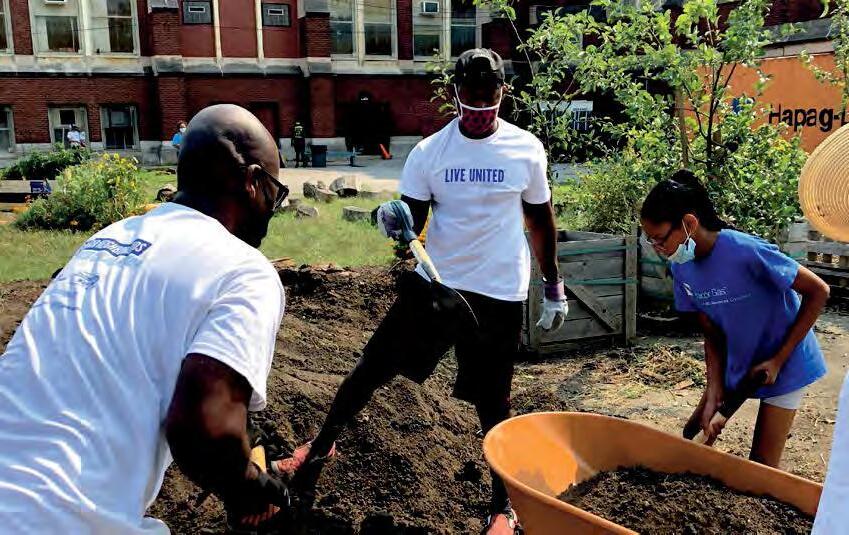
Now is the time to LIVE UNITED and build a stronger, more equitable Chicago region. Join us at LIVEUNITEDchicago.org















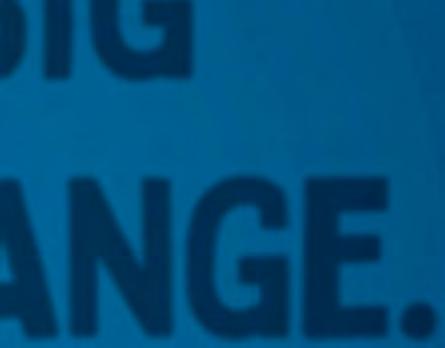
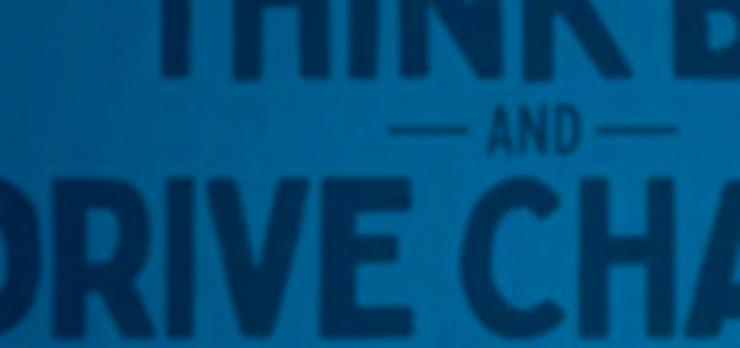

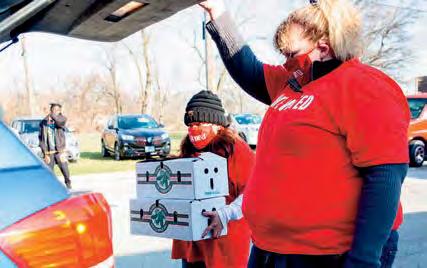











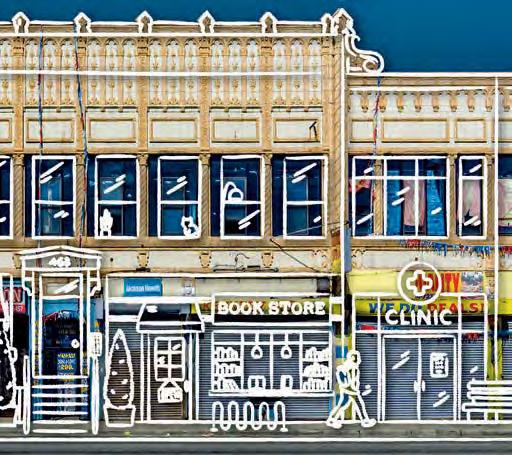




























































WHAT WE DO

e Alzheimer’s Association is the leading voluntary health organization in Alzheimer’s care, support and research.
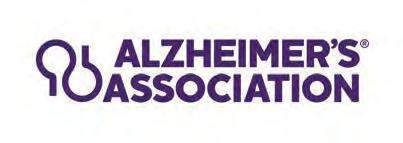
Our Vision: A world without Alzheimer’s and all other dementia®.


Our Mission: e Alzheimer’s Association leads the way to end Alzheimer’s and all other dementia — by accelerating global research, driving risk reduction and early detection, and maximizing quality care and support.
We work on a national and local level to provide care and support for all those a ected by Alzheimer’s and other dementias. As the largest nonpro t funder of Alzheimer’s research, the Association is committed to advancing vital research toward methods of treatment, prevention, and ultimately, a cure. e Association is the leading voice for Alzheimer’s disease advocacy, ghting for critical Alzheimer’s research and care initiatives at the state and federal levels.
HOW YOU CAN HELP
EXPLORE: Everyone can help in the ght to end Alzheimer’s. Join the cause by staying informed, making a donation, or becoming an advocate for those with Alzheimer’s disease and their families.

JOIN: Join us in the ght to end Alzheimer’s. Our signature events take place in communities across the nation. We also o er a variety of in-person and virtual events, including support groups, education programs, conferences, galas and more.

HELP OTHERS: When you volunteer with the Alzheimer’s Association, you join a network of passionate people who are working to ght this devastating disease, honor loved ones, and bring care and support to those who need it.
SHARE: Alzheimer’s disease is one of the most critical public health issues in America. We are unrelentingly advocating for public policies that increase critical research funding and support all those a ected. Make Alzheimer’s a national priority by advocating.
Delia Jervier
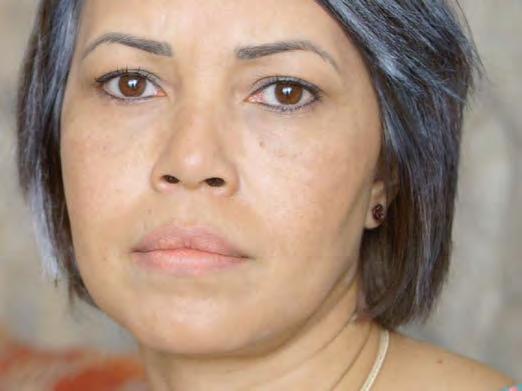 Executive Director
Executive Director
Aimee Nolan
Chair, Board of Directors
Sandeep Prabhakar Co-Chair
EXECUTIVE COMMITTEE
Michelle Carlson
Marta Cerda
Jill Felkins
Reagan Hogerty
Brad Moore
Victoria Raymont

James Sherwood

Nancy Tyrrell
Ray Willis
34 SPONSORED CONTENT 2023 CRAIN’S GIVING GUIDE
EVENTS & FUNDRAISING
Retail 1% FUNDING SOURCES Contributions 62% Events 26% Grants 6% Other 4% Programs 1% THE FIRST SURVIVOR OF ALZHEIMER’S DISEASE IS OUT THERE. 18826335 But we won’t get there without you. Visit alz.org to join the fight.
Walk to End Alzheimer’s. Held annually in more than 600 communities nationwide, the Alzheimer’s Association Walk to End Alzheimer’s® is the world’s largest fundraiser for Alzheimer’s care, support and research. www.alz.org/walk
50 EMPLOYEES 2022 REVENUE FOUNDED IN 1980 PHONE 800-272-3900 ADDRESS 2200 Cabot Drive, Suite 460 Lisle, IL 60532 WEBSITE alz.org/illinois LEADERSHIP
WHAT WE DO
Ann & Robert H. Lurie Children’s Hospital of Chicago provides superior pediatric care in a setting that o ers the latest bene ts and innovations in medical technology, research and family-friendly design.






Lurie Children’s was founded in 1882 with a simple vision: to care for sick children irrespective of race, creed and ability to pay. is is the foundation of our current mission, which includes ensuring every single child has access to groundbreaking research and leading-edge care and serving as relentless advocates for our kids and communities.
Lurie Children’s is the top local children’s hospital, providing exceptional care for every child in Chicago and beyond. But we don’t do it alone. As a nonpro t medical center, we depend on donations from our generous supporters to deliver exceptional, kid-friendly care to every child who needs it and to build safer spaces across Chicago where children can grow and thrive.
HOW YOU CAN HELP
EXPLORE: We depend on your generosity to deliver the very best care to patients and their families. Explore all the ways to get involved—including volunteering or hosting a fundraiser—at luriechildrens.org/getinvolved.
JOIN: Lurie Children’s hosts extraordinary events in Chicago and our suburbs! From charity fundraising walks to stair climbs to family-friendly activities, we o er events for all ages, interests and abilities. Join us at luriechildrens.org/events.

HELP OTHERS: You can leave a lasting legacy for others and shape the future of pediatric health care by making a planned gi . Contact Lisa Bakker at lbakker@ luriechildrens.org to discuss including Lurie Children’s in your estate plans.

DONATE: ere are many ways to donate to Lurie Children’s. You can make a one-time nancial gi , become a monthly giver, make gi s of stock or donate toys for patients. Learn more at luriechildrens.org/ getinvolved.
SHARE: Share your experience or share in the magic of Lurie Children’s by connecting with us on social media. You can nd us on Facebook, Instagram, LinkedIn, Twitter and TikTok at @LurieChildrens.
LEADERSHIP
Thomas Shanley, M.D. President & CEO
Roxanne Martino Chair, Medical Center, Lurie Children’s Board of Directors
Eric S. Smith Chair, Lurie Children’s Foundation Board of Directors

EVENTS & FUNDRAISING

ADDRESS 225 E. Chicago Ave. Chicago, IL 60611
PHONE


312-227-4000


WEBSITE luriechildrens.org
6,200 EMPLOYEES
2022 REVENUE
$88.6M
FOUNDED IN 1882

Matthew M. Davis M.D., MAPP Chair, Department of Pediatrics
Thomas H. Inge M.D., Ph.D. Surgeon-in-Chief
Patrick C. Seed M.D., Ph.D., FIDSA President and Chief Research Of cer, Stanley Manne Children’s Research Institute




Grant Stirling Ph.D. President & Chief Development Of cer, Lurie Children’s Foundation
John Walkup M.D. Chair, Pritzker Department of Psychiatry and Behavioral Health

SPONSORED CONTENT 35 2023 CRAIN’S GIVING GUIDE
Individuals 51% Corporate 30% Private foundations and estates 19%
FUNDING SOURCES
Lurie Children’s Corporate Cup. Teams representing local companies face off in a variety of eld day events while raising funds for Lurie Children’s. Join us on September 28, 2023, at Lincoln Park South Fields.
WHAT WE DO
e Daniel Murphy Scholarship Fund (DMSF) was founded in 1989 by two brothers, alongside their family and friends, to provide high school scholarship assistance and programmatic support to high-achieving Chicagoland area students with nancial needs. DMSF seeks to make a life-altering di erence in the lives of its Scholars by providing them with the best opportunity to succeed in high school, college and beyond.

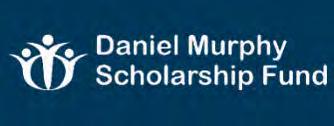
DMSF initially partnered with two Chicago area private high schools and o ered four high school scholarships. 34 years later, DMSF currently serves 500 Scholars in grades 9-12 and partners with over 65 college preparatory schools in Chicago and boarding schools across the country.
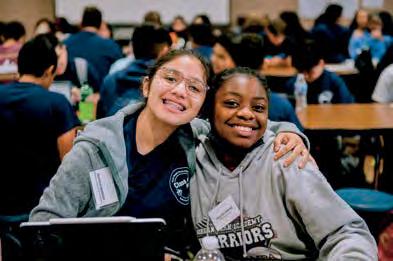
In addition to four-year high school scholarships, DMSF o ers a number of valuable programs that help Scholars persist toward high school graduation, gain college acceptance, and ultimately earn a degree. Our responsive programming begins before Scholars enter high school and continues a er graduation. It consists of Mentoring and A nity Groups, Professional Tutoring, College Counseling, a Caddie Program, Summer Opportunities, and Alumni A airs.
HOW YOU CAN HELP
VISIT: Visit our website at www.dmsf.org to learn more about DMSF’s mission, our programs and how to get involved.
JOIN: Serve as an ambassador for DMSF and Murphy Scholars and join the DMSF Associate Board. Contact Alina Gonzalez at alina@dmsf.org for more information.
HELP OTHERS: DMSF regularly relies on the assistance of volunteers at events, as well as for mentoring, application reading and interviewing of scholarship applicants, and serving on our boards and committees. To learn more, contact info@dmsf.org.
SHARE: To keep up with DMSF news and Scholar stories, follow us at @MurphyScholars on Facebook, Instagram and Twitter. You can also nd us on LinkedIn.
DONATE: A gi to DMSF helps to provide access to high-quality college preparatory education, important leadership training and valuable academic support to Murphy Scholars. To donate today visit www.dmsf.org/ donate
LEADERSHIP
Cindy Hallums Executive Director
OFFICERS
Mark Ferguson Chair of the Board
Mary Jo DeMaio Vice Chair of the Board
Rocky Lopez Treasurer
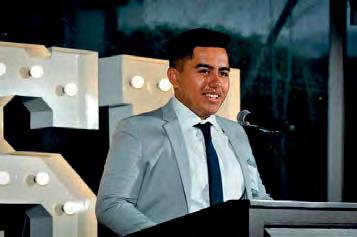
Molly Carroll Secretary
IgnitingPotential.EnrichingLives.
DMSFprovidesaccesstohigh-quality educationthroughfour-yearhighschool scholarshipsandprogrammingsupportto motivatedChicagoareastudents.Withthe helpofDMSF,MurphyScholarsgainlifechangingeducationalresourcesguiding themonthepathtosuccess.

CLASSOF2022MURPHYSCHOLAR’S
demonstratedimpressiveachievements:
3.4 CumulativeGPA $4M+ intotalgrantsandscholarships
awardedtoattendcollege
17 MurphyScholarCaddiesawardedtheWGA ChickEvansScholarship 100% ofScholarswhoappliedwereaccepted intofouryearcolleges
www.dmsf.org
PHONE 312-455-7800
ADDRESS 309 W. Washington St. Suite 700 Chicago, IL 60606 WEBSITE dmsf.org
14 EMPLOYEES
FY 2022 REVENUE $4.5M
FOUNDED IN 1989
EXECUTIVE COMMITTEE
Olivia Carberry

Molly Carroll
Wheeler Coleman
Kevin Conway
Mary Jo DeMaio
Mark Ferguson
Tony Goodman
Michael King
Yan Krasov
Rocky Lopez
Wendy Manning
Mary O’Leary
John Ormsby
Brad Schotanus
Will Torres
EVENTS & FUNDRAISING
FUNDING SOURCES
11%
Grants
35%
54% Events
Contributions
The 33rd Annual Golf Classic hosted 600+ golfers across eight private Chicago area golf courses and raised $2.5 million for Murphy Scholars. Photographed above, Bob Cooney, DMSF Board Member and Golf Classic Committee Member, and Murphy Scholar Caddie at the 33rd Annual Golf Classic. The 34th Annual Golf Classic is scheduled for Monday, June 5, 2023! To learn more, visit www.dmsf.org/golf.
36 SPONSORED CONTENT 2023 CRAIN’S GIVING GUIDE
WHAT WE DO
As the social outreach arm of the Episcopal Diocese of Chicago, Episcopal Charities provides nancial grants to 17 community-based non-pro ts around Northern Illinois. rough the Non-Pro t Partner Grants Program, Episcopal Charities impacts the lives of the most vulnerable with food, shelter, education, mental health care, support for adoptive children and families, hospital chaplaincy, rehabilitation for formerly incarcerated persons, and more with the healing love of God.
In 2021, we began partnering with Episcopal parishes to meet speci c needs in their local communities, especially those experiencing hardship as a result of the health and economic crises of 2020 and 2021. With the addition of this new Parish Partner Grants Program, Episcopal Charities now impacts more lives in places like Joliet, Woodstock, Flossmoor, and many more.
In 2022, Episcopal Charities launched a third funding stream called the Strategic Partner Grants Program to add our voice of faith to those voices already calling for an end to racism. In 2022, Episcopal Charities awarded grants to two organizations to support faith-based antiracist work in Northern Illinois.
To deepen the impact of our grant-making, Episcopal Charities o ers a program of emotional and spiritual development to our non-pro t and parish partner leaders through our Inner Capacity Building Program Twice a year, we gather all our partner organizations’ leaders for a full-day retreat. In addition, we convene a lunchtime gathering of our non-pro t CEOs where they re ect on their growth as leaders and build relationships of mutual support.
EVENTS & FUNDRAISING

HOW YOU CAN HELP
YOUR GENEROSITY MAKES OUR WORK POSSIBLE Episcopal Charities’ life-changing work relies on voluntary charitable contributions from individuals, congregations, businesses, and foundations who share our vision for bringing a message of transforming hope to thousands of people across the Diocese of Chicago who, until now, thought abundant life perhaps was not meant for them.
100% of every gi to Episcopal Charities is used to support the work of ministry partners as well as EC’s own programs and initiatives (e.g. Capacity Building and training). Investment income, in addition to helping fund the development and implementation of EC programs, is used to pay for modest administrative and fundraising costs.

Connected to the Episcopal Diocese of Chicago, Episcopal Charities is a long-standing feature of the non-pro t sector of Chicago and Northern Illinois. With a trusted name, tested track record, and faithful Board of Trustees, we invite interested persons who may not yet have a philanthropic outlet to consider Episcopal Charities as you plan your charitable giving in 2023 and beyond. In particular, Episcopal Charities is a reliable and trustworthy place to locate resources for those who don’t have the time to research worthwhile organizational investments themselves. Our partners and future investments are thoroughly vetted in order to ensure that the gi s we receive from our friends and supporters are well-used for maximum social good.
DONATE: episcopalcharities.org/give
LEADERSHIP
Matthew Berryman Executive Director
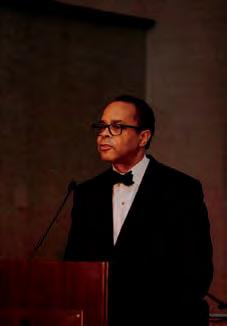
FUNDING SOURCES
EPISCOPAL CHARITIES IS THE SOCIAL OUTREACH ARM OF THE DIOCESE OF CHICA GO
ADDRESS 65 E. Huron St Chicago, IL 60611

PHONE
312-751-6721
WEBSITE episcopalcharities.org

3 EMPLOYEES
2022 REVENUE
$1.3 Million
FOUNDED IN 1960
David Ortiz President of the Board of Trustees
WE PROVIDE:
THREE YEAR GRANTS TO 17 SOCIAL SERVICE ORGANIZATIONS.
ONE YEAR GRANTS TO EPISCOPAL PARISHES TO FUND PROJECTS MEETING SPECIFIC NEEDS IN THEIR COMMUNITIES.
GRANTS TO ORGANIZATIONS WHO SUPPORT FAITH-BASED WORK IN ANTI-RACISM AND RACIAL EQUITY.
INNER CAPACITY SUPPORT FOR THE LEADERS OF THE ORGANIZATIONS WE FUND EPISCOPALCHARITIES.ORG

SPONSORED CONTENT 37 2023 CRAIN’S GIVING GUIDE
Episcopal Charities Gala. For over 60 years, Episcopal Charities has held an annual gala fundraiser to support its grant-making and leadership support.
Other (Draw on investment) 66% Events 19% Contributions 15%
WHAT WE DO
Facing History & Ourselves uses lessons of history to challenge teachers and their students to stand up to bigotry and hate.We believe that increasing incidents of racism, antisemitism, and anti-lgbtq+ hate are the legacies of brutal injustices of the past. We help teachers and students face our collective histories and understand how they inform attitudes and behaviors in today’s world. Facing History students examine pivotal moments in history and learn how the choices made in the past have shaped our present. Our students come to understand that history is not inevitable: people make choices and choices make history.
Facing History and Ourselves partners with middle and high school educators to provide the tools they need to grow professionally and create inclusive, brave classrooms for their students. We work closely with academics and educators to design teaching resources that are relevant to the challenges that schools and students face each day. Facing History serves over 400,000 educators in the United States and around the world, reaching millions of students as a result. In the Chicago area, we support over 15,000 educators and are continuing to expand our reach into suburbs, the collar counties, and downstate.
HOW YOU CAN HELP
EXPLORE: Explore our website, www.facinghistory. org, to nd resources on watershed moments in history, current events, and teaching tools that can help all of us stand up to racism, antisemitism, anti-lgbtq+ hate and all forms of bigotry.
JOIN: e power of Facing History is undeniable. Experience it rst hand by attending an upcoming event and sign up for our for a newsletter, www.facinghistory. org/get-involved/connect.
HELP OTHERS: Facing History Chicago is looking for Advisory Board members who can use their time and resources to help us expand our reach to support even more educators and students. Please reach out to maureen_loughnane@facinghistory.org to learn more.



DONATE: Donate on our website to support the thousands of educators and students who have chosen to stand up against bigotry and hate.
SHARE: Face history with us in your news feed. Follow us @facinghistory on Twitter, Facebook, and Instagram and get a regular stream of timely resources, thoughtful articles, and other engaging content curated speci cally for you, our learning community.
LEADERSHIP
Facing History & Ourselves isn’t only our name, it is our core belief and our guiding mandate. To build a more just and equitable future, we are each called to face our history in all its complexity and to face ourselves. Learn how Facing History works at www.facinghistory.org


ADDRESS 515 N. State Street Chicago, IL, 60654
PHONE 312-345-3221
WEBSITE facinghistory.org
186 EMPLOYEES
2022 REVENUE $30,060,501
FOUNDED IN 1976
38 SPONSORED CONTENT 2023 CRAIN’S GIVING GUIDE
Dr. Desmond K. Blackburn President & CEO
Jill Garling Chair, Board of Directors
Kristyn Friske Chair, Chicago Advisory Board
Maureen Loughnane Executive Director, Chicago
Check out our calendar for the latest information on community events happening online and in person! www. facinghistory.org/learning-events
EVENTS & FUNDRAISING
SOURCES Contributions 75% Grants 15% Programs 4% Events 2% Other 2%
FUNDING
WHAT WE DO
e Fatherhood Educational Institute’s mission is to promote positive father involvement and improve the lives of children in disadvantaged communities. e organization was created in 1999 to support low-income fathers, incarcerated fathers, and at-risk fathers and children who would be unable to nd help otherwise. e organization’s work is focused on increasing fatherhood involvement in poverty-stricken communities and reducing the incidence of father absence.
FEI addresses the lack of resources for fathers, speci cally indigent and incarcerated fathers. For example, a father named Maurice, who’s featured in a video on the FEI website, was incarcerated. Without virtual visitation, Maurice missed out on many of the crucial years that connect a father and daughter. His teenage daughter confesses to the hardships of growing up without her father’s presence and how virtual visitation would have helped prevent them. FEI advocated for virtual visitation, which has now been implemented in Illinois prisons.
Our volunteers visit men who are locked up, because we want them to come out of prison prepared to lead healthy, productive lives and to create previously unimaginable bonds with their children.
Father absence can have a horri c e ect on children, as shown by the statistics on pages 46-47 of founder Je ery Leving’s book, Fathers’ Rights. Children with absent fathers consistently score lower than the norm on reading and math tests. In addition, they have higher rates of asthma, headaches, speech defects and psychological problems. Seventy percent of kids in juvenile detention grew up in a fatherless environment.
HOW YOU CAN HELP
VISIT: Learn more about what FEI does, has done and hopes to do at our website, fatherhood-edu. org.

JOIN: If you’d like to help, please visit fatherhood-edu.org/index.php/volunteer-inchicago.
DONATE: We welcome donations at fatherhoodedu.org/index.php/donate-to-fatherhood.
SHARE: Please visit our social media pages on Facebook, Twitter and Instagram, and share them.
EVENTS & FUNDRAISING
ADDRESS
19 S. LaSalle St., Suite 1500 Chicago, IL 60603
PHONE 312-795-9060
WEBSITE fatherhood-edu.org
FOUNDED IN 1999
LEADERSHIP
Maureen A. Gorman President
Jeffery M. Leving Founder & Board Member
BOARD MEMBERS
Jeffery M. Leving
James M. Hagler
Arthur S. Kallow
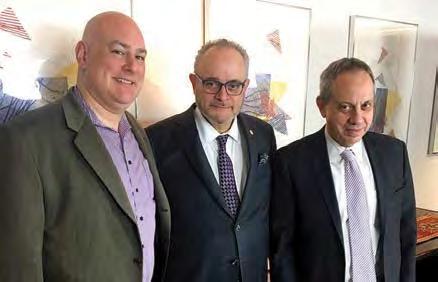
Wayne E. Halick
Jennifer Whiteside
Jeffery M. Leving, founder and board member, is photographed with FEI board members Wayne Halick (left) and James M. Hagler (right) after they delivered informative presentations at the 2020 Illinois Council on Responsible Fatherhood symposium.
C M Y CM MY CY CMY K KIDS NEED DADS AD.pdf 1 5/12/22 6:45 PM SPONSORED CONTENT 39 2023 CRAIN’S GIVING GUIDE
WHAT WE DO
Genesys Works Chicago provides pathways to career success for rising high school seniors on the south and west sides of Chicago through skills training, meaningful work experiences and impactful relationships.
Students start their journeys by completing eight weeks of paid, rigorous training in the summer before their senior year, gaining market-ready technical skills in business technology or nance/accounting, as well as professional skills.
Once students successfully complete their skills training course, they are matched to paid, 10-month-long internships at partner companies. Our “earn and learn” approach o ers 20-hour workweeks while in school, further developing student skills while providing highly valued services to their host companies. During their year with us, our Young Professionals earn $13-15,000.
While students are working at their internships, they also receive more than 60 hours of guidance, counseling and planning, relative to their future career path. We support students through college selection and applications, certi cation training and placement, and nancial aid assistance.
Genesys Works Chicago participants continue to receive guidance and support for up to ve years a er their high school graduation as they navigate their future career paths, helping students manage academic, social and nancial obstacles that too o en serve as a barrier to sustained career success. is is a proven model that has a profound e ect on students, their families, and communities – by age 25, Alumni earn a median annual income of $50-55,000.
HOW YOU CAN HELP
EXPLORE: Check out genesysworks.org/chicago to see how we create career pathways and opportunities for youth from Chicago’s south and west side communities, while simultaneously helping employers ll critical talent gaps within their companies.
JOIN: Our annual charity golf outing takes place on August 28, 2023 at Olympia Fields Country Club. Visit rebrand.ly/GWCgolf2023 for more information.

HELP OTHERS: Our ability to impact student lives is limited only by the number of meaningful work opportunities provided by partner companies. Visit our website or contact Ominara Caldwell at ocaldwell@ genesysworks.org to discuss hiring an intern.
DONATE: A gi to Genesys Works enables us to train and place more rising high school seniors into meaningful corporate internships. A er participating in our program, students’ lives are forever changed. Contact Sue Enright at senright@genesysworks.org to contribute.
SHARE: Connect with us on Facebook (@ GenesysWorksChicago), LinkedIn (https://linkedin.com/ company/genesys-works-chicago/), and Instagram (@ gwchicago) to learn how our approach can drive business success and provide equitable access to meaningful and impactful careers for high school students.
LEADERSHIP
Kenneth Shogren Board Secretary, Finance Committee Chair
GenesysWorksforour CorporatePartners
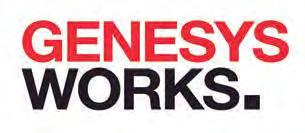
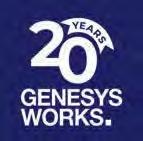































ADDRESS 180 N. Wabash, Suite 600 Chicago, IL 60601




PHONE 312-525-9995
WEBSITE genesysworks.org/chicago
17 EMPLOYEES
2022 REVENUE $4,127,714
FOUNDED IN 2010














EVENTS & FUNDRAISING
FUNDING SOURCES
40 SPONSORED CONTENT 2023 CRAIN’S GIVING GUIDE
Kim Nicholas Executive Director Darryl Henry Board Chair
Josh Davidson External Affairs Committee Chair
Philip Jacob Jobs Committee Chair
Paul Maranville Governance & Nominating Chair
Genesys Works Chicago Annual Golf Tournament. Play Golf. Make a Difference. August 28th at Olympia Fields Country Club just one week after the BMW Championship.
Earned Income 77% Corporate, Individual, Foundation 16% Other 1% Events 6%
WHAT WE DO
Haymarket Center is the greater Chicago area’s most comprehensive non-pro t provider of substance use and mental health disorder treatment. Co-founded by Monsignor Ignatius McDermott and Dr. James West in 1975, Haymarket Center o ers services that integrate substance use treatment, mental health care, and primary health care. We provide every level of substance-use care to adults age 18 and over, including withdrawal management (detoxi cation); residential and outpatient treatment; and recovery homes—and a vast array of supportive services.
We help more than 12,000 patients annually access quality treatment. No one is denied services due to inability to pay and a sliding fee schedule is available. Our doors are always open and access is possible 24/7/365 with no wait for assessment.
HOW YOU CAN HELP
EXPLORE: Learn more about our services, impact and ways to give by visiting our website at haymarketcenter.org.
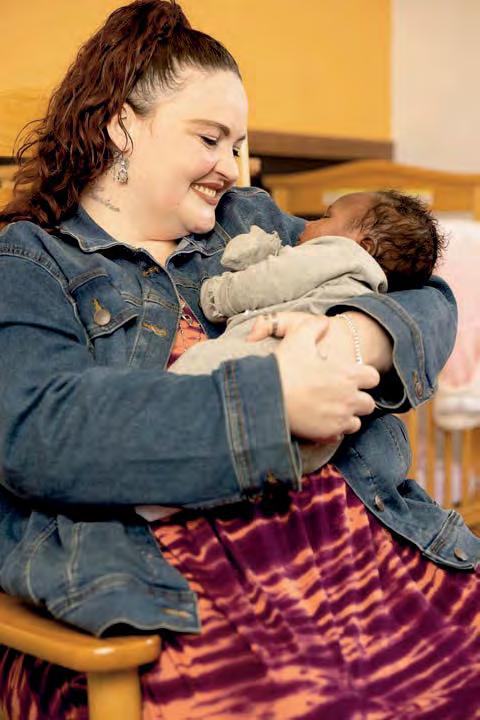

JOIN: Sign up for our mailing list to receive news, updates and invitations to events.
HELP OTHERS: Support our mission by attending one of our annual fundraising events, joining a committee or lending your time as a volunteer. Contact Sarah English, VP of development, at 312-226-7984 ext. 485.
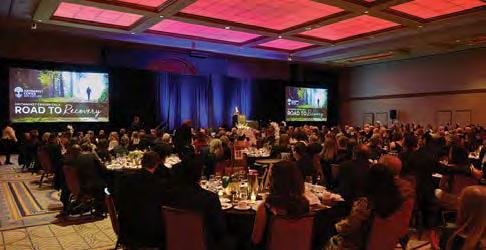
DONATE: Contributions can be made online at haymarketcenter.org/donate or by mail. Donations support access to treatment and support services for Chicago’s most vulnerable.
SHARE: Amplify our message by sharing our impact on social media. Look for us on Facebook, Twitter, Instagram and LinkedIn.
LEADERSHIP
Dan Lustig, PsyD, CAADC, COPD II President & CEO
The Honorable Lee A. Daniels Board Chair
Robert Edstrom CFO
EVENTS & FUNDRAISING
Kenyatta Cathey Chief Clinical Of cer
Jeffrey Collord VP - Operations
Sarah English VP - Development
ADDRESS 932 W. Washington Blvd. Chicago, IL 60607
PHONE 312-758-8320
WEBSITE haymarketcenter.org
316 EMPLOYEES
2022 REVENUE $28,159,840
FOUNDED IN 1975
FUNDING SOURCES
Contributions 3% Events 1.2% Other .03%
36.8%
Grants 58.7% Programs
Linda Maranda VP – Strategic Partnerships
Jesse Taylor VP - Facility & Business Services
Michael Baldinger M.D. Medical Director
For those battling with substance use disorder, hope starts here.
Haymarket Center is the largest not-for-profit community-based adult withdrawal management, residential, and outpatient substance use treatment provider in Chicago.
We need your support more than ever. Your donation will help the more than 12,000 patients who come to change their lives, reunite with their families and make our communities stronger and safer.
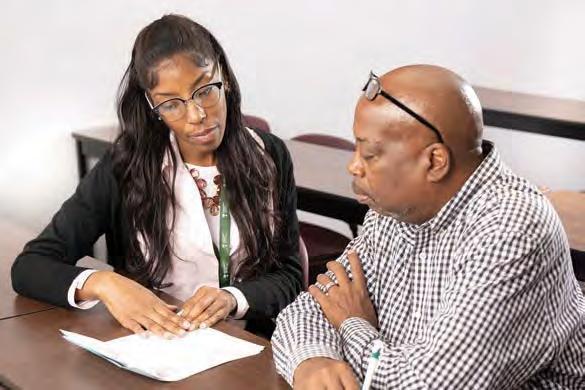
Make a gift today at hcenter.org/donate SPONSORED CONTENT 41 2023 CRAIN’S GIVING GUIDE
Haymarket Gala. Haymarket Center’s 2023 Gala was held April 22 at the Sheraton Grand Chicago Riverwalk and featured Elizabeth Vargas, celebrity keynote speaker. The special evening shined a light on the success of our innovative services and our vision for the future, while honoring those who have partnered with us on our mission.
WHAT WE DO
Holy Family is a unique community that provides educational opportunities for children, youth, and families in Chicago’s under-resourced neighborhoods to excel academically, grow spiritually, expand life experiences, and become exceptional leaders through a faith-based approach. For nearly forty years, Holy Family has provided hope and purpose, rooted in faith, through the transforming power of education.
At Holy Family, Excellence in Education goes beyond just the classroom, ensuring every child has the chance to succeed in school and in life.
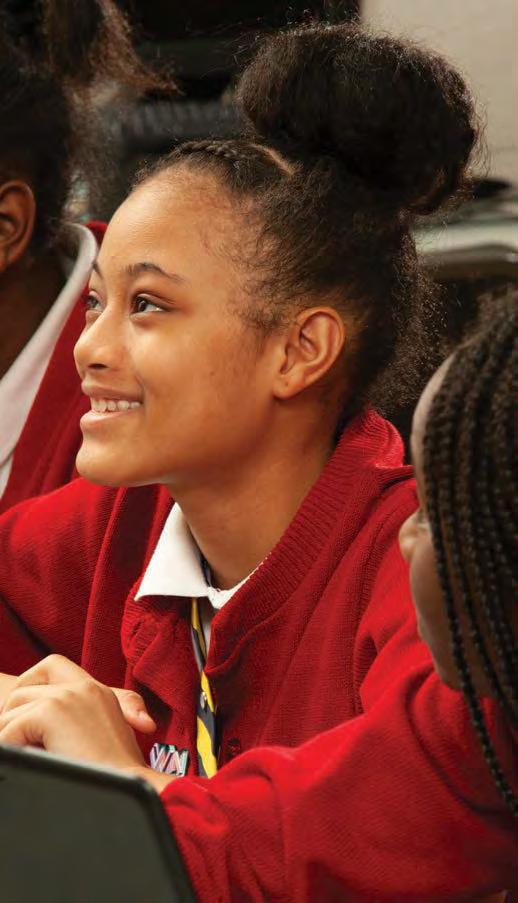
Our youngest students attend Little Learners Academy. Here children receive the best in an early learning education, providing the foundation for all future learning and behavior.
Holy Family School provides a rigorous academic curriculum for elementary-age students and strengthens their faith to build character and life skills. Each year, 100% of graduating students go on to high-performing high schools, taking a step closer to making the dream of college a reality.
Adventures in Learning enrolls Chicago children for a er-school and summer hours. Providing safety and supervision during the times of most vulnerability, the power of this program is in helping to close the achievement gap for many students.
e Peace Exchange is a youth leadership and violence prevention program that delivers a con ict resolution workshop, Speaking Peace, to thousands of CPS grade school students annually.
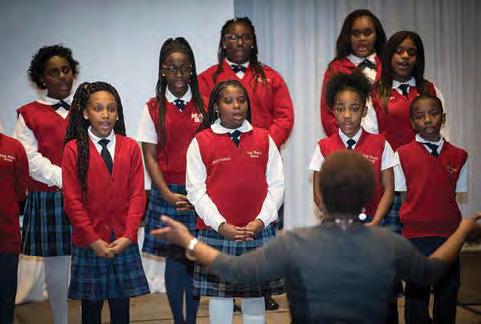
Excellence in Education goes beyond just the classroom
Holy Family ensures every child has the chance to succeed in school and in life by providing a rigorous academic curriculum for elementary-age students and strengthening their faith to build character and life skills.
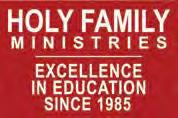
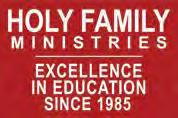
Each year, 100% of graduating students go on to highperforming high schools, taking a step closer to making the dream of college a reality.
Invest today to make a difference tomorrow: hfm.org/donate
HOW YOU CAN HELP
EXPLORE: Visit Holy Family at hfm.org or follow us on our social media channels (Facebook, Instagram, LinkedIn, TikTok).
HELP OTHERS: Support academic opportunities, tutoring, summer camp, athletics, high school placement and college awareness programs with your gi . Visit hfm.org/donate to give the gi of education
DONATE: Visit hfm.org/donate or contact our Chief Development O cer Cynthia Schmidt, CFRE at cschmidt@hfm.org
SHARE: e gi of your time and talents can make a di erence in the life of a child. For general inquiries please contact: info@hfm.org
CREDIBILITY: Holy Family holds Charity Navigators coveted four start rating, indicating Holy Family outperforms most US charities. Holy Family also has been awarded the Platinum Seal of Transparency from Candid (formerly GuideStar), the highest level of recognition.
BOARD OF DIRECTORS
Cheryl Collins CEO
Dan Badovinac Board Chair
Eric Draut Vice-Chair
Jerry Hufton Treasurer
La Shawn Stanton Secretary
Roxane Busey
Fanisha Davis
Carl Fisher
David Fisher
Brian Frank
Rev. John Freidheim
Marilyn Hawkins
ADDRESS 3415 W. Arthington Street Chicago, IL 60624
PHONE 773-273-6013
WEBSITE hfm.org
73 EMPLOYEES
2022 REVENUE $8,296,569
FOUNDED IN 1985
Matt Kerr
Jennie Kramer
Jon Leverenz
Rev. Jihan Murray-Smith
James Neaylon
Dave Olson
John Palmer
Mark Pals
Frank Stanton
FUNDING SOURCES
Retail 2%
11%
Programs
Other 12%
17%
Events
40% Grants
Contributions
18%
Annual Bene t. Holy Family student choir performing at our annual Bene t to raise scholarship funds.
EVENTS & FUNDRAISING
42 SPONSORED CONTENT 2023 CRAIN’S GIVING GUIDE
WHAT WE DO
Amyotrophic lateral sclerosis (ALS) is a disease that weakens the muscles we use to move, swallow and breathe. It can, in some cases, also cause changes in behavior and thinking. e e ects of ALS grow more severe over time and eventually become fatal, with an average survival of two to ve years. ere is no cure yet.
It’s o en called a rare disease, but the e ects of ALS aren’t rare at all. If you haven’t lost someone you love to ALS, then you know someone who has. It ripples through the lives of everyone who cares for that person, and their friends and families will feel that loss for decades to come.

Founded in 1977, the Les Turner ALS Foundation is Chicago’s leader in comprehensive ALS care. We support people living with ALS, caregivers and families every step of the way through personalized support visits and care coordination meetings, support groups, grant programs and equipment loans, educational resources, access to clinical trials and more. Our Les Turner ALS Center at Northwestern Medicine is led by the most renowned researchers and clinicians in their elds, advancing vital care and research into causes, treatments and cures for the disease.

Because nobody ghts ALS alone. Not in our community.
EVENTS & FUNDRAISING
HOW YOU CAN HELP
EXPLORE: Our ALS information guides and monthly ALS Learning Series webinars provide answers and encouragement, and My ALS Decision Tool™ modules on breathing, nutrition and genetic testing empower people to make informed decisions about their care.
JOIN: Events like the ALS Walk for Life welcome volunteers, and we support people hosting their own fundraisers like golf outings. Our Young ProfessionALS Group is a great way to meet people with a shared interest.

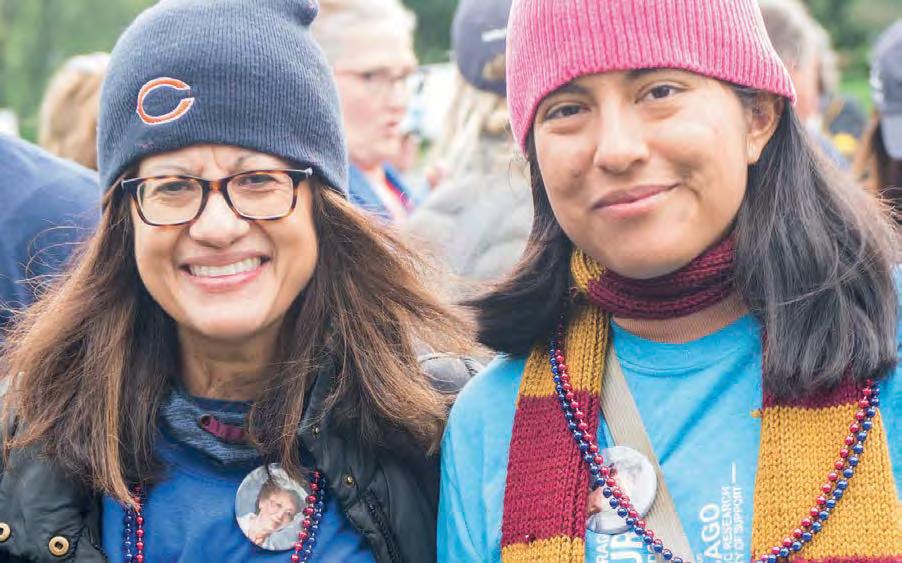

HELP OTHERS: e progression of ALS can mean tomorrow is o en worse than today. Our Lois Insolia ALS Clinic at Northwestern Medicine provides access to clinical trials and comprehensive multidisciplinary care that improves quality of life.
DONATE: Your donations help provide the most comprehensive care and support to people living with ALS and their families so they can con dently navigate the disease, and advance research for the prevention, treatment, and cure of ALS.
SHARE: Your voice is a powerful tool in spreading awareness about ALS. Find us on social media and share why you want to see a world free of ALS.
ADDRESS
5550 W. Touhy Ave, Suite 302 Skokie, IL 60077
PHONE
847-679-3311
WEBSITE lesturnerals.org
18 EMPLOYEES
2022 REVENUE $2.6 million
FOUNDED IN 1977
SPONSORED CONTENT 43 2023 CRAIN’S GIVING GUIDE
Laura Freveletti Chief Executive Of cer
Erin Reardon Cohn Board Chair
IS ALS AWARENESS MONTH. JOIN US AND DONATE AT LESTURNERALS.ORG. and
LEADERSHIP MAY
Contributions 60% Events 29%
1% FUNDING SOURCES
ALS Walk for Life. People gather in small groups and big teams to walk in honor of loved ones living with ALS and remember those we have lost. Photo credit: Jean Lachat
Grants 10% Investments
WHAT WE DO
Maryville is a childcare organization rooted in Catholic social teaching and dedicated to the preservation of the dignity of children at every age. Our mission is to protect children and strengthen families while helping them reach their fullest potential by empowering their intellectual, spiritual, moral and emotional growth.

Maryville’s growth and impact have touched thousands of lives. From its humble beginnings as St. Mary’s Training School in 1883, Maryville today serves the community in four service areas with campuses in Arlington Heights, Bartlett, Berwyn, Chicago, Des Plaines and Niles:
Family Services
• Catholic Youth Organization (CYO)
• Early Childhood
• Homes for Teen Moms
• Homes for Recovering Moms and their Children
• Maryville Golf Academy
Residential Services
• Homes for English-Speaking Youth
• Homes for Spanish-Speaking Youth
• Homes for Pashto- and Dari-Speaking Youth
• Homes for Youth in Transition from Illinois Department of Juvenile Justice
Healthcare Services
• Children’s Healthcare Center (CHC)
• Family Behavioral Health Clinic (FBHC)
Educational Services
• Jen School (soon to be the Charles H. Walsh Sr. Academy and Career Tech High School)
HOW YOU CAN HELP
EXPLORE: Maryville Academy dedicates its time to protecting and caring for children and strengthening families through its 19 programs in four service areas. Visit our website at www.maryvilleacademy.org to learn more about each program.
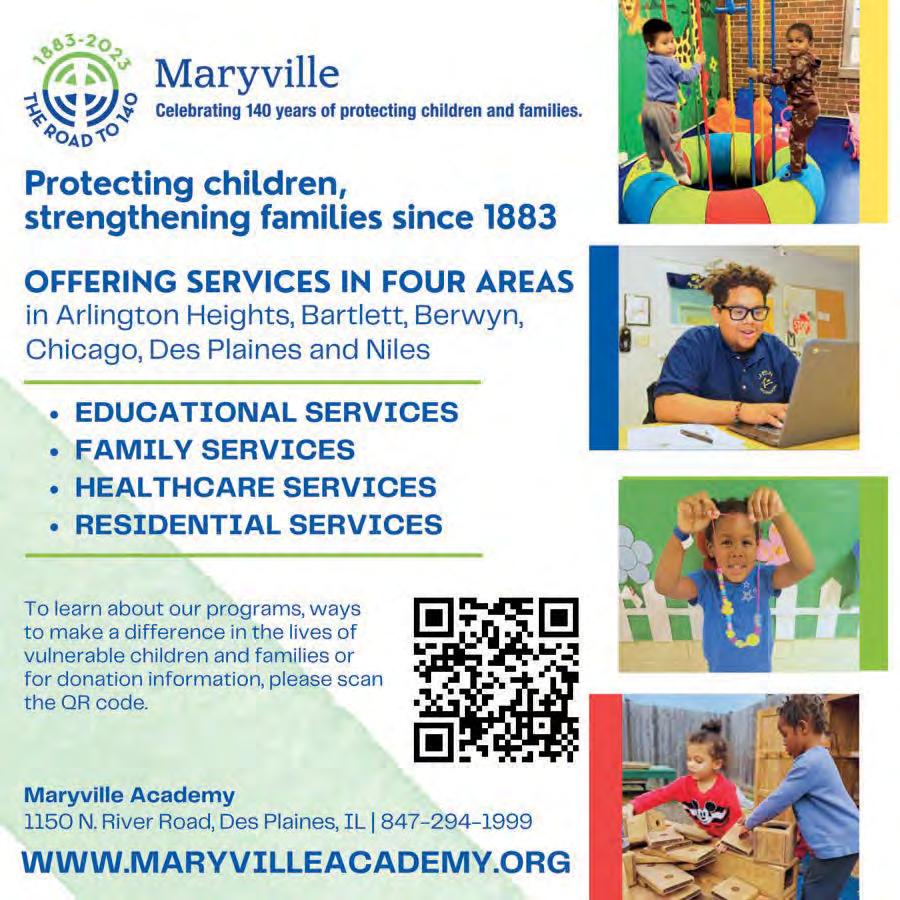
VOLUNTEER: When you donate your time to Maryville and its programs, you will be given the opportunity and gi of inspiring children and families to break through personal barriers and reach their fullest potential.
LEARN: Our Annual Report is published yearly for our friends, clients and benefactors while e Voice is published three times a year. Both publications provide program updates, success stories and other information.
DONATE: We are grateful for the support to the children and families we are serving through our programs at our di erent locations. ere are many ways you can donate at www.maryvilleacademy.org
SHARE: Connect with us on Facebook, Instagram, LinkedIn, Twitter and YouTube.
ENGAGE: We host several fundraisers each year and welcome your support. Visit us at www. maryvilleacademy.org

LEADERSHIP
Sr. Catherine M. Ryan O.S.F. Executive Director
Nina Aliprandi
Associate Executive Director
Evelyn
Smith Associate Executive Director
Teresa A. Maganzini Chief Administrative Of cer and Director of Employee Relations
Amy Kitzmiller Chief Financial Of cer
Megan
Biasco Chief Development Of cer
EVENTS & FUNDRAISING
FUNDING SOURCES
450 EMPLOYEES 2022 REVENUE NA FOUNDED IN 1883 PHONE 847-294-1999 ADDRESS 1150 N. River Road Des Plaines, IL 60016 WEBSITE maryvilleacademy.org 44 SPONSORED CONTENT 2023 CRAIN’S GIVING GUIDE
Government Funds 80% Fundraising 20%
The 2nd Annual Light Up a Child’s Life will bene t the Maryville Crisis Nursery, a program that provides free childcare services from four to 72 hours to help decrease parental stress, improve parenting skills and keep children, ages birth to 6, safe.
WHAT WE DO
North Shore Exchange is a nonpro t organization that primarily supports Chicagoland charities serving children and families living in poverty through a unique combination of luxury consignment, designer shopping, and volunteerism.
At North Shore Exchange, we believe designer consignments can also be a force for good. Since 2013, with our unique, award-winning combination of authentic luxury consignment, designer shopping, and volunteerism, we’ve been on a mission to improve the lives of our neighbors facing the trauma of poverty.


Our grants, made annually to worthy charities in the Chicagoland region, address the critical needs of abuse, hunger, homelessness, mental health, and more. We have awarded over $3,200,000 in grants awarded to date.
Our volunteers fuel our business and help our productivity and pro tability. Join us in positions as a sales associate, website photographer or on our intake teams.
North Shore Exchange is an independent, womanfounded and volunteer-led 501*(C)3 nonpro t organization.



HOW YOU CAN HELP
When you shop, consign, donate, or volunteer with us, you’re making a di erence in the lives of Chicagoland children and families in need.
Here’s our take on the Top Five Reasons to consign with us:
1. We pay competitive rates. We pay the same as our biggest competitor and for your most valuable pieces, we’ll pay you more.
2. Every Consignment gives back! You earn cash for the sale of your items and we donate 100% of our pro ts to Chicagoland Charities.
3. Your items can get the spotlight! As a small business, we have the ability to feature your best items to our customers - and get them sold faster!
4. We pay FAST. Checks with commissions above $50 are cut and mailed within 30 days of the sale of your items.
5. You’re helping our planet. Every time you consign or donate, you are extending the life cycle of reusable items and keeping them out of land lls, and reducing the industrial stress on our environment.
ank you for making the smart, kind, and sustainable choice to consign with us.

LEADERSHIP
BOARD OF DIRECTORS
Wendy Serrino Board Chair, CEO/President
Susan Sholl Vice President
Isabelle Goossen Treasurer
Martha Kirtley
Nicole Hayek
Prasad Board Secretary
Ashley
Beth Douglass
Susan MacKenzie Sherri Hlavacek
28 EMPLOYEES 2022 REVENUE $4,000,000 FOUNDED IN 2012 PHONE 847-835-0026 ADDRESS 372 Hazel Ave Glencoe, IL 60022 900 North Michigan, 4th Floor, Chicago IL 1100 Central Ave, Wilmette IL 533 Bank Lane, Highwood IL WEBSITE northshoreexchange.org JOINOURVIPLIST 100%oftheprofitsaredonated toChicagolandcharities. Celebratingour10thAnniversary! EarnCash.GiveBack. ThisTiffanyHardwareJewelry willprovidemorethan36nights ofsheltertofamiliesinneed. Over$3.2MilliontoCharities CONSIGN BOOKANAPPOINTMENT WEARYOURVALUES SHOPWITHUS SPONSORED CONTENT 45 2023 CRAIN’S GIVING GUIDE
EVENTS & FUNDRAISING All of our funds are raised through sales in our retail shops. FUNDING SOURCES Retail 95% Contributions 5%
WHAT WE DO
Perspectives Charter Schools is a network of ve public, charter schools operating on the South Side of Chicago. Our schools are tuition-free and non-selective. We are located in Bronzeville, South Loop, and Auburn-Gresham/ Chatham.
We serve over 1,800 students, grades 6-12. Perspectives’ holistic education model fosters leadership and cultivates agency, guiding students to live productive and meaningful lives. Our mission is to provide students with a rigorous and relevant education through our A Disciplined Life* education model, which is a combination of academic rigor, social-emotional learning, and experiential opportunities.
A Disciplined Life is a culture grounded in a set of 26 principles. ese principles guide our actions and build a community of trust, curiosity, and achievement that develop positive self-perception, healthy relationships, and the tools for productivity. Perspectives students receive 180 minutes of focused social-emotional learning in weekly classes, helping them successfully navigate challenges in school and at home.
Each year, Perspectives invests in wraparound services for our students. Over 92 percent of our organizational revenue is put to work in direct support of our mission. We provide eld study, career shadowing, and service opportunities for all students. Perspectives is also proud to o er enrichment activities, athletic programs, and enhanced learning opportunities for our students through our partnerships with Chicago’s business community. Our eld studies provide culturalexperiences, expose students to ne arts, and create interactive learning and team-building experiences.
HOW YOU CAN HELP
VISIT: We live A Disciplined Life! Come see our curriculum in action by touring our ve schools.
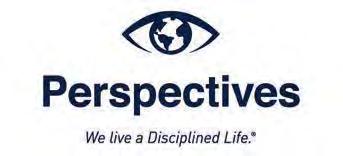
EXPLORE: Perspectives uses the city of Chicago as a classroom by providing students with eld study, career shadowing, and internship opportunities. Explore Chicago with our students by volunteering as a mentor.
JOIN: Sign up for our quarterly newsletter, Our Perspectives, to stay looped into the latest news at Perspectives.
DONATE: Perspectives relies on generous contributions from individuals, corporations, and foundations to provide our students with a high-quality education, along with responsive wraparound services and unique enrichment experiences: www.pcsedu.org
SHARE: Follow us on our social channels and share our student success stories with your networks! Visit Instagram (@pcsedu), Twitter (@pcsedu), Facebook (@ perspectivescs) and LinkedIn (@Perspectives Charter Schools) for more information.
LEADERSHIP
TyNeisha Banks, M.Ed Vice President and Principal, Perspectives/IIT Math & Science Academy
Dorienne Canada-Pendleton, M.Ed Principal, Perspectives Rodney D. Joslin Campus
Jasmine Morales, M.Ed Principal, Perspectives Middle Academy
Eron Powell, MAT Vice President and Principal, Perspectives Leadership Academy and High School of Technology
Deborah Stevens CEO, Perspectives Charter Schools
EVENTS & FUNDRAISING

FUNDING SOURCES
Philanthropy 3% Other 1%
Perspectives Charters Schools’ annual gala is a bene t event to celebrate our remarkable history serving students in the city of Chicago and the previous school year’s achievements. Events 1% Grants 95%

46 SPONSORED CONTENT 2023 CRAIN’S GIVING GUIDE 277 EMPLOYEES 2022 REVENUE $33,897,244 FOUNDED IN 1997 PHONE 312-604-2200 ADDRESS Network Of ce 1530 S. State Street, Floor 2 Chicago, IL 60605 WEBSITE pcsedu.org
WHAT WE DO
Prairie State College Foundation is the philanthropic organization for Prairie State College, the largest employer and educator in the south suburban city of Chicago Heights, Illinois. While the College helps transform through education and programs that o er associate’s degrees and certi cates, the Foundation helps support students’ lives by providing need-based scholarships during this important juncture in their lives. e students we serve primarily hail from Chicago Heights, South Chicago Heights, Beecher, Crete, Monee, Park Forest, Ford Heights, Steger, Glenwood, Richton Park, Homewood, Flossmoor, Matteson, Sauk Village, University Park and Olympia Fields.

e Prairie State College Foundation commits to bridging the gap between nancial aid and what the student can a ord to pay for college tuition and books through need-based scholarships. We fundraise through an Economic Forecast Breakfast (Spring), an annual golf outing (June 5, 2023), a gala or scholarship luncheon (Fall 2023), and from the donations of PSC employees through payroll deduction and annual giving. Contributions also come from lifelong, loyal supporters and alumni, as well as local businesses who have stepped up, especially through the pandemic, to support our students. Seventy-one percent of our scholarship applicants are the rst to ever attend college in their families and the average GPA of these high-performing individuals is 3.15. Scholarship recipients are 55% Black, 17% Hispanic, 17% White, 10% Unidenti ed, .08% Asian, and .02% Indigenous.
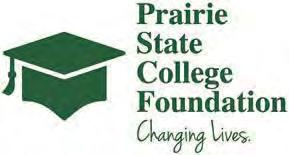
Learn more about our organization at www.prairiestate. edu/foundation.
EVENTS & FUNDRAISING
HOW YOU CAN HELP
EXPLORE: Find out more about what makes Prairie State College (PSC) unique - from its sustainability e orts, including the prairie garden, electric vehicle (EV) charging stations, and beehive, to highly sought programs such as re science, surgical technology, early childhood education, nursing, liberal arts, and the automotive technology program, where students get hands-on experience on all kinds of vehicles, including a PSC-branded Tesla.
For those interested in majoring in pharmacy, PSC o ers a program where, a er earning an associate’s degree, students can transfer directly to a doctoral program to pursue a PharmD without having to earn a bachelor’s or master’s degree. PSC has an award-winning speech team, a national championship-winning soccer team, the only dental hygiene clinic in south suburban Cook County catering to hundreds in the community, and has helped 15 STEM students get accepted into the NASA internship program. Our motto is “Start Near. Go Far.”
JOIN: Join our mailing list at pscfoundation@ prairiestate.edu.
DONATE: Help support our students by making a donation any time during the year.
LEADERSHIP
Andre’ B. Ashmore President
Rebecca A. Nagle Vice President
Marisela Zambrano Secretary
Sam Balark
Maria M. Desmond
Brent Frank
Sonia Gomez
Kathryn Humecki
Kyle Kasperek
Joyce Morgan Michael
Patrick J. Ormsby
Marilyn Kent Tapajna
PRAIRIE STATE COLLEGE
Deborah Smith Havighorst, Executive Director
Michael D. Anthony, Ph.D., President
Jay Readey, Board of Trustees
Marie Hansel, DNP, RN
Judy Mitchell, Ed.D.
Thomas Nicholas
Elighie Wilson III
Foundation Day at Welcome Week. Featuring our scholarship recipients, there’s outreach to potential donors and new students about scholarships and how to donate on Foundation Day of the College’s Welcome Week during the fall semester.
FUNDING SOURCES

SPONSORED CONTENT 47 2023 CRAIN’S GIVING GUIDE 2 EMPLOYEES 2021 REVENUE $747,000 FOUNDED IN 1973 PHONE 708-709-7918 ADDRESS 202 S. Halsted Street Chicago Heights, Illinois 60411 WEBSITE prairiestate.edu/foundation
Events 5%
Investment Income 57% Contributions 37%
WHAT WE DO
Safer Foundation paves the path to reentry with stabilizing support, employment, education, and advocacy thus empowering justice-involved individuals to achieve their true potential and bring hope to our community. Since its founding in 1972, Safer Foundation has grown to a sta of about 300 with locations throughout Illinois and eastern Iowa. Our vision is for every justice-involved person, family, and community to walk a clear path to an equitable future. rough its comprehensive and holistic work including counseling, housing, credential training, job readiness and placement, educational programming and advocacy, Safer o ers returning residents hope for a better future. Together we work to create stable and healthy communities and an equitable and productive future for our clients and their families.

MORE ABOUT US
Each year, Safer Foundation provides supportive programming at its sites to over 5,000 men, women, & youth (16-21) with a focus on helping them obtain or advance employment a er their involvement with the criminal justice system.
Safer Foundation uses evidence-based research when developing the programs that serve its clients. Innovative program and service models at Safer Foundation include: job training, job placement, job retention, transitional jobs; behavioral health, educational and advanced skills training.
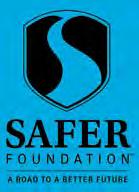

HOW YOU CAN HELP
EXPLORE: Visit our website to learn more about us or visit one of our community centers at https:// saferfoundation.org

JOIN: Subscribe to our Newsletter to stay up to date on current events and resources. Subscribe near the footer on our website at https://saferfoundation.org
HELP OTHERS: We appreciate the support from our community very much. If you would like to Volunteer or Join our team visit https://saferfoundation.org/careers
DONATE: Donate to our cause at https://secure. givelively.org/donate/safer-foundation
SHARE: saferfoundation.org/media
LEADERSHIP
Victor Dickson President and CEO
Mark Yates CFO & Senior VP Safer Social Enterprises
Harry
Alston Senior VP Strategy and Innovation
Sodiqa
Williams Senior VP Reentry Services
Henrietta
Mason VP Human Resources and Organizational Development
David
Gianfrancesco VP Strategy and Innovation
Jamelia
Hand VP Reentry Services
Ervin
Robinson VP Community Corrections
EVENTS & FUNDRAISING
FUNDING SOURCES
1%
Events
3%
Contributions
12%
Programs
75%
Grand Opening of Safer Foundation’s 5517 S. Michigan Ave. of ces. Safer does frequent outreach & recruitment events throughout several local communities. Grants
48 SPONSORED CONTENT 2023 CRAIN’S GIVING GUIDE 256 EMPLOYEES 2022 REVENUE $30,458,143 FOUNDED IN 1997 PHONE 312-922-2200 ADDRESS 571 W. Jackson Blvd. Chicago, IL 60661 WEBSITE saferfoundation.org VISITSAFERFOUNDATION.ORGTOLEARNMORE EveryoneDeserves ASecondChance JobPlacement|Training&Education ReentrySupport&Wellness|Policy&Advocacy
WHAT WE DO
e Salvation Army North and Central Illinois Division is the largest direct provider of social services across Chicagoland and is a critical safety net for those in need. We serve more than one million people annually throughout Chicago and Northern Illinois.

e Salvation Army’s mission embraces that all people should be treated with dignity and respect, and no one should be de ned by their challenges or circumstances. We are committed to loving and helping anyone who is hungry, homeless, or hurting.
e Salvation Army is made up of thousands of o cers, soldiers, sta , volunteers, donors, and partners working together to holistically meet the physical, emotional, and spiritual needs of our most vulnerable neighbors. We do this through programs designed to combat homelessness and hunger, provide safe spaces for kids a er school and on the weekends, achieve and maintain sobriety, and give hope to the hopeless.
e Salvation Army North and Central Illinois Division provides these services to people in need throughout greater Chicagoland and Northern Illinois —all with the goal of Doing the Most Good.

EVENTS & FUNDRAISING

HOW YOU CAN HELP
EXPLORE: You can visit any of our community centers to access services, make donations or volunteer. Find a list of locations throughout Northern Illinois at salarmychicago.org.
JOIN: Our advisory board, junior board and special event committees are always looking for new members. We also have openings in our program advisory committees (communications, social services, nance, etc.).
HELP OTHERS: Visit our website to learn more about volunteer opportunities and to start the registration process. We especially seek volunteers who can help with job skills mentoring, emergency disaster services, event support, and Red Kettle bell ringers.
DONATE: Financial gi s can be made on our website, with all donations staying local. To donate clothing, food, school supplies and other items, call 773-205-3502.
SHARE: Find us on Twitter, Facebook and Instagram @ salarmynci
LEADERSHIP
Lt. Colonel Lonneal Richardson Divisional Commander
Lt. Colonel Patty Richardson Of cer Development Secretary
Major Caleb Senn Chicago Area Commander
Major Stephanie Senn Divisional Secretary for Programs
Captain Jessica Martinez Divisional Secretary
Major Beverly Gates Divisional Secretary for Business
Major Joanna Rose Divisional Women’s Ministries Secretary
Captain Daniel Simmons Divisional Youth Secretary
Captain Claudia Simmons Divisional Youth Secretary
Major Paula Pyle Community Care Ministries Secretary
FUNDING SOURCES
SPONSORED CONTENT 49 2023 CRAIN’S GIVING GUIDE 750-800 CHICAGO AREA EMPLOYEES 2022 REVENUE $134,465,000 FOUNDED IN 1865 IN LONDON; EXPANDED TO CHICAGO IN 1885 PHONE 773-725-1100 ADDRESS 5040 N. Pulaski Rd. Chicago, IL 60630 WEBSITE salarmychicago.org Programs 2%
In addition to the holidays, e Salvation Army loves and serves those who are lost, hungry, and hurting— all year long. www.salarmychicago.org Retail 37% Contributions 31% Grants 15% Other 15%
Love Beyond
The annual Hope Fore Kids Golf Classic at the Glen Club in Glenview raises money for Salvation Army youth programs and shelter for families in crisis. This year’s event will occur on Sept. 5.
WHAT WE DO
Special Gi s eatre addresses the need for theatre arts activities and experiences for people with disabilities. rough the performing arts, we work collaboratively to create inclusive and transformative experiences for individuals with disabilities to fully engage in the world.
SGT programs provide student actors with disabilities enrichment experiences that foster con dence, creative self-expression, and self-advocacy. At SGT, the focus is on the student actor’s strengths and every aspect of the programming is adapted to fully engage each student and allow them to shine in the spotlight.
• We serve 300 participants in Chicagoland every year with four individualized programs:
1. Musical eatre - educational and therapeutically based program that culminates in a fully adapted musical theatre performance for youth ages 10-22.
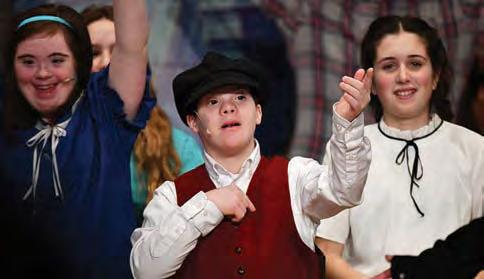
2. Creativity in Motion - therapeutic movement class for children 7 and up.
3. Creating Outside the Lines - theatre and improv for adults.
4. Peer mentor programming with disability inclusion training.
• We produce 12 live performances annually that have reached over 45,000 people since our founding in 2000.
• Our specialized sta consists of special education teachers, therapists and theatre arts professionals.
• Our peer mentors and volunteers support each student to achieve individualized success and develop the next generation of inclusive leaders.
HOW YOU CAN HELP
EXPLORE: Review our promotional content on our YouTube channel to experience SGT’s impact on each of our student actors and peer mentors. @specialgi stheatre7704. Attend an upcoming performance at one of our six programming locations in the Chicago area!
JOIN: Join us for our performance season, a special event, or contact us for ways to get involved.
HELP OTHERS: Become an advocate for inclusion and support the disability community. Consider joining our board, contributing to a committee, or connecting us with business sponsor opportunities. Your support will help us grow and reach more individuals. Our disability inclusion training program is available to our business partners.
DONATE: We rely on fundraising to cover 75% of our operating budget. A gi to Special Gi s eatre will support our commitment to scholarships and a ordable programming. At SGT no one is turned away due to nancial hardship. ank you!
SHARE: Help amplify our mission by sharing our impact on social media. Find us @specialgi stheatre.

LEADERSHIP
Elise Larsen Executive Director
Debbie Taus-Barth Program Operations Director
Elise Steffe Development Director
Randy Sylvan Board Chair
Matt Miller Vice Chair
35 EMPLOYEES
2022 REVENUE $540,000 FOUNDED
Ellen Burke Secretary Alice Archabal Treasurer
EVENTS & FUNDRAISING
Annual Inclusive Theatre Performance Season. Each year Special Gifts Theatre produces twelve live adapted musical theatre performances, shining the spotlight on our students with disabilities with individualized support of peer mentors. We seek business sponsors to help fund our performances that reach a vast audience in Chicago, the North Shore and northwest suburbs.

FUNDING SOURCES
Events 10% Other 10%
25%
25% Programs
Grants 30% Contributions
50 SPONSORED CONTENT 2023 CRAIN’S GIVING GUIDE
IN
ADDRESS
Box 2231
IL
2000 PHONE 847-564-7704
PO
Northbrook,
60065
WEBSITE specialgiftstheatre.org
WHAT WE DO
e rst ve years of a child’s life are the most important for healthy development and long-term well-being. e experiences and relationships formed during this period of rapid brain development build a foundation for future learning and success.
Yet, this critical development is in jeopardy for many children whose families lack access to quality early learning and care, especially those living in communities le under-resourced.
Celebrating 40 years of impact, Start Early is a champion for quality early learning and care and has made tremendous strides toward closing the opportunity gap for our youngest learners. From our roots directly serving families and children on Chicago’s South Side and in rural Illinois to work today impacting early childhood programs and policies nationwide, our focus is grounded in the fact that starting early to nurture attachments between children and adults is essential to a child’s present and future well-being.
Start Early was founded in 1982 as the Ounce of Prevention Fund, a nonpro t public-private partnership. Since the beginning, we have delivered best-in-class doula, home visiting and Early Head Start and Head Start programs and advocated for thoughtful policies and adequate funding at the local, state, and federal levels. Our role as on-the-ground practitioners continues to be the bedrock of our expertise and source of innovation and leadership in the eld.
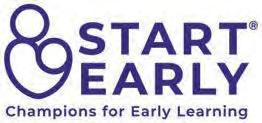
EVENTS & FUNDRAISING
HOW YOU CAN HELP
EXPLORE: Start Early relies on the generosity of individuals, foundations and corporations to deliver quality early learning and care that can transform the lives of young children and families. Make a donation today at www.StartEarly.org/Dreams
JOIN: e Start Early A liates Board brings together young professionals who are champions of early learning and committed to inspiring others to support the success of our youngest learners. Learn more about membership at www.StartEarly.org/Get-Involved/A liates-Board
TAKE ACTION: Start Early’s grassroots advocacy aims to improve the lives of young children and families by educating legislators and policymakers and urging them to prioritize early learning. Make your voice heard by visiting our Action Center at www.StartEarly.org/GetInvolved/Action-Center
INVEST: e Irving B. Harris Legacy Community at Start Early can help align your values with long-term legacy. Legacy gi s enable us to evolve in response to changing, priority needs and to invest in solutions for transformational change. Learn more by emailing Giving@StartEarly.org.

LEADERSHIP
Diana Rauner President
Diana Sands Chair, Board of Directors
Mike Hoffman Chief Operating Of cer
Kristin Bernhard Chief Policy & Research Of cer
Aisha Gayle Turner Chief Development Of cer
Donna Iwanski Chief Financial Of cer
Johanna Vetter Chief Marketing Of cer
Start Early Annual Luncheon. Since the Start Early’s Annual Luncheon’s inception in 2002, more than $15 million has been raised through sponsorships, attendance and generous donations. Each year, the event welcomes hundreds of notable business, civic and philanthropic leaders to call attention to the critical importance of early learning and care programs. Photo by Breeze Art Creatives.
FUNDING SOURCES

SPONSORED CONTENT 51 2023 CRAIN’S GIVING GUIDE 428 EMPLOYEES 2021 REVENUE $76,273,491 FOUNDED IN 1982 PHONE 312-922-3863 ADDRESS 33 W. Monroe Street, Suite 1200 Chicago, IL 60603 WEBSITE StartEarly.org
Private Gifts 34% Federal 27% State 22% Other 14% Local 3%
WHAT WE DO
Founded in 1959, resholds is one of Illinois’ largest providers of community mental health and substance use services. resholds provides innovative behavioral and primary health care that promotes empowerment, well-being and full participation in community life. rough unwavering, community-based engagement, support and advocacy, resholds provides home, health and hope to more than 7,000 youth and adults with mental health and substance use conditions every year. With locations in ve counties and 97 unique sites, the agency provides sizable coverage throughout Illinois with housing, employment, education, physical and mental health care, peer support, and a state-of-the-art research and training center.

HOW YOU CAN HELP
EXPLORE: Keep up with resholds through our social media (@thresholdschi)


JOIN: Join our team! www.thresholds.org/careers
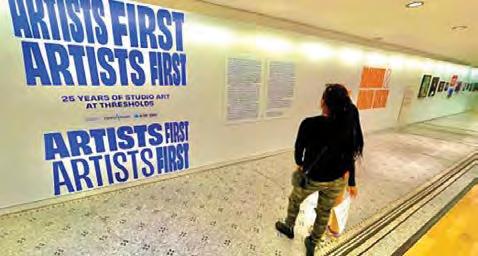
HELP OTHERS: Help keep our clients safe and healthy with donations of personal hygiene items and warm clothing, which can be dropped o at any of our Chicago-area locations.

DONATE: Make a gi to support resholds’ programs and services on our website, at www.thresholds.org/ donate.
Mark Ishaug Chief Executive Of cer
Debbie Pavick Chief Clinical Of cer
Mike Faley General Counsel
Al
 Shoreibah Chief Financial Of cer
Shoreibah Chief Financial Of cer
Mark
Furlong Chief Operating Of cer
Dayo Popoola

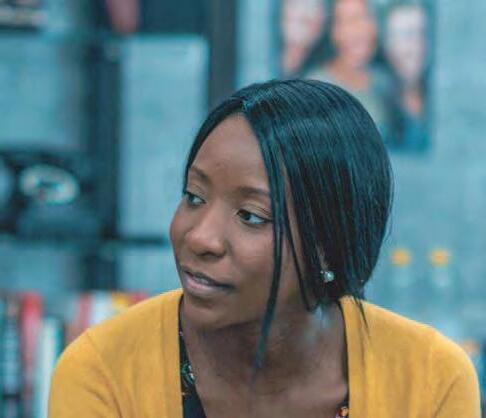 Chief Information Of cer
Chief Information Of cer
Dee
Atkins Chief Community Engagement & Equity Of cer
Heather O’Donnell Senior Vice President, Public Policy & Advocacy
Brent
Peterson Chief Development Of cer
Chris
Noone Chief Talent Of cer
Artists First: 25 Years of Studio Art at Thresholds. This exhibition at the Chicago Cultural Center celebrates the legacy of Thresholds’ creative arts therapy programs and the artwork made by our clients in recovery. 1,200 EMPLOYEES 2022 REVENUE $101M FOUNDED IN 1959 PHONE 773-572-5500 ADDRESS 4101 N. Ravenswood Ave Chicago, IL 60613 WEBSITE thresholds.org We all need a little help sometimes. Supportmentalhealth. SupportThresholds. Grants 45% Programs 32% Other 12% Contributions 10% Events 1% 52 SPONSORED CONTENT 2023 CRAIN’S GIVING GUIDE
LEADERSHIP EVENTS & FUNDRAISING
FUNDING SOURCES
WHAT WE DO
e mission of the Women’s Business Development Center (WBDC) is to support and accelerate business development and growth, targeting women and serving all diverse business owners, in order to strengthen their participation in—and impact on—the economy.

We envision a world where all business owners have an equitable opportunity to compete and succeed in the marketplace. In pursuit of that, we deliver programs and services designed to remove barriers that maintain an uneven playing eld and prevent full participation of diverse entrepreneurs in the economy.

Since 1986, our o erings have helped over 101,000 women entrepreneurs gain economic self-su ciency through business ownership and expansion and our advocacy e orts have helped change public policy nationally and locally.
HOW YOU CAN HELP
EXPLORE: Discover the many opportunities we o er to fuel business development and economic growth.
JOIN: Participate in our business cohorts, workshops, and events.

HELP OTHERS: O er your knowledge and subject matter expertise to our clients.
DONATE: Make donations to fund our programs, services, and events. You may also sponsor women business owners seeking to become Women’s Business Enterprise (WBE) certi ed by the WBDC, on behalf of the Women’s Business Enterprise National Council (WBENC).
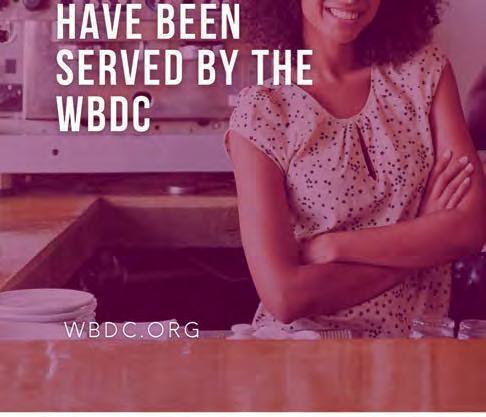


SHARE: Connect with us on social media to help spread awareness about our programs, services, and events.
LEADERSHIP EVENTS & FUNDRAISING
FUNDING SOURCES
SPONSORED CONTENT 53 2023 CRAIN’S GIVING GUIDE 43 EMPLOYEES 2022 REVENUE $10,601,543 FOUNDED IN 1986 PHONE 312-853-3477 ADDRESS 8 S. Michigan Ave, Suite 400 Chicago, Illinois 60603 WEBSITE wbdc.org Contributions (Corp & Foundation) 46% Programs and Events 30% Government Grants 23% Other <1%
Emilia DiMenco President and Chief Executive Of cer
Sandra Rand Board Chair and Retired Director of Supplier Diversity United Airlines, Inc.
WBDC’s annual regional business conference, held in Chicago, brings together hundreds of women business owners and corporate, government, and community partners for inspiration, information, connections, and business opportunities. The 2023 business conference will be held in person on September 6 at the Hyatt Regency O’Hare.
One of the biggest retail portfolios in years is for sale
A New York investor picked both a good and a bad time to sell 18 local shopping centers, including properties in Chicago, Schaumburg, Orland Park and Geneva
BY ALBY GALLUN
A New York investor has decided to unload 18 shopping centers in Chicago and its suburbs, one of the biggest local retail portfolios to hit the market in a long time.
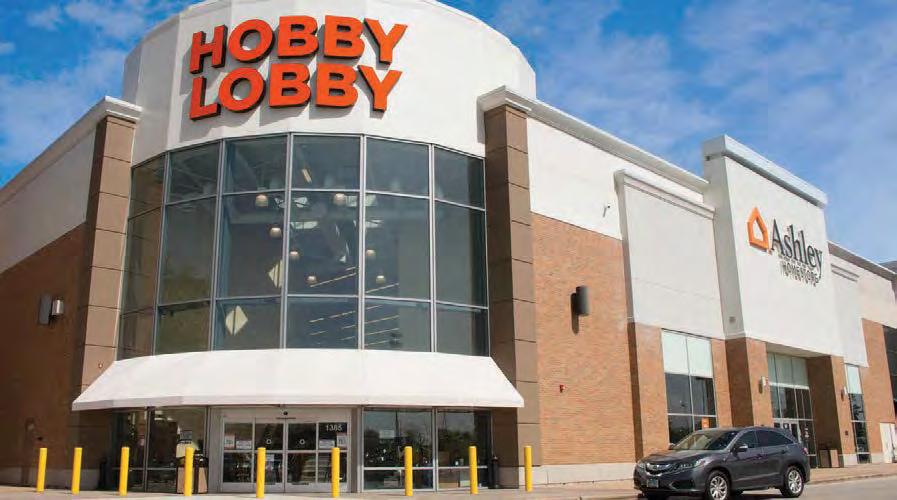
DRA Advisors has hired brokers at Mid-America Real Estate and Cushman & Wake eld to sell the shopping centers, which include properties in Orland Park, Schaumburg, Tinley Park and Geneva, con rmed Mid-America
Principal Joe Girardi. He declined to discuss the o ering, rst reported by Real Estate Alert, a trade publication.
DRA is selling the Chicagoarea portfolio as part of a larger, 3.7-million-square-foot shopping center package that includes a smattering of properties in Minnesota, Ohio and Alabama. e entire portfolio is valued at $540 million, according to Real Estate Alert.

DRA has picked both a good and a bad time to court investors for the properties. e jump in interest rates last year and increased caution among lenders has pushed down property values and made it harder for investors to secure nancing for acquisitions.
But shopping centers, particularly those anchored by grocery stores, are performing well, especially in comparison to o ce buildings and many regional
malls. e recent bankruptcy of Bed Bath & Beyond gave some landlords a scare, but demand for shopping center space remains strong, pushing up occupancies and rents.
“Retailers are staying the course, rea rming their store opening plans despite the uptick in retailer bankruptcy and clouded macro environment,” research rm Green Street wrote in a recent report.
SALES PLUNGE
Still, shopping center sales across the country have dropped amid rising interest rates over the past year. Green Street estimates that the volume of deals in the sector has plunged 65% year-over-year and that shopping center values have declined 14% from their peak in early 2022.
“ e good news is debt nancing seems available for retail properties, from high-quality grocery-anchored neighborhood centers to good quality malls,” the report says.
DRA’s o ering includes the last chunk of shopping centers the investment adviser took over in 2016 through its $2.3 billion acquisition of Oak Brook-based Inland Real Estate. DRA has been selling o its Inland portfolio over the past couple of years.
DRA executives did not respond to requests for comment.
Encompassing 2.9 million square feet, the Chicago portfolio for sale comprises properties in a wide range of sizes, from Nantucket Square, a 54,000-squarefoot shopping center in Schaumburg, to Orland Park Place, a 599,000-square-foot complex
in Orland Park. e package also includes Crystal Point, a 317,000-square-foot property in Crystal Lake; Randall Square in Geneva, totaling 226,000-square feet, and Wood eld Commons, a 208,000-square-foot property in Schaumburg.
DRA is seeking buyers for three Chicago shopping centers: Pulaski Promenade, a 123,000-squarefoot property in Archer Heights; Jo co Square, at 95,000 square feet, in the South Loop, and Point at Clark in Lakeview, with 90,000 square feet.
BMO, Northern Trust, Wintrust to pay for bank failures
The three appear set to pay a collective $429 million under a proposal by the FDIC
BY STEVE DANIELS
ree local banks will have to dig in their pockets to help pay for the Federal Deposit Insurance Corp.’s rescue of uninsured depositors in failed Silicon Valley Bank and two other regional lenders that recently went bust.
The FDIC on May 11 proposed a special assessment that will hit a little over 110 of the nation’s largest banks. The local players falling into this category are BMO Harris Bank, Northern Trust and Wintrust.
If the assessment is finalized — there’s a 60-day comment period for the industry and others to respond — the three appear to be on the hook for a collective $429 million over two years beginning in 2024.
Much of that would be shouldered by BMO, which is now
among the nation’s 15 largest banks by assets by virtue of its $16.3 billion acquisition of San Francisco-based Bank of the West in February.
Assuming BMO is responsible for the uninsured deposits on Bank of the West’s balance sheet as of Dec. 31, the bank would have to pay the FDIC $302 million over two years.
Chicago-based Northern Trust would be on the hook for more than $92 million in that time. Rosemont-based Wintrust would owe the FDIC about $35 million over that period.
“The proposal applies the special assessment to the types of banking organizations that benefited most from the protection of uninsured depositors, while ensuring equitable, transparent and consistent treatment based on amounts
of uninsured deposits,” FDIC Chairman Martin J. Gruenberg said in a press release. “The proposal also promotes maintenance of liquidity, which will allow institutions to continue to meet the credit needs of the U.S. economy.”
The FDIC is allowing affected banks to pay in quarterly installments over two years.
SPECIAL ASSESSMENT
e agency estimated that $15.8 billion of the losses from the failures of Silicon Valley Bank and Signature Bank are due to covering the uninsured exposure of depositors in those banks. e agency anticipates another $13 billion hit from the failure of San Francisco-based First Republic Bank. JPMorgan Chase is assuming most of the assets and deposits of First Republic.
The special assessment the FDIC is proposing is based on uninsured deposits at affected banks as of Dec. 31. The agency proposes a 0.125% levy on total uninsured deposits, with the first $5 billion of those excluded from the calculation.
The proposal excludes from the fee any bank below $5 billion in assets. That was met with unsurprising approval from community banks.
Effectively, the FDIC estimates that just 113 banks will be affected and that those with $50 billion or more in assets would bear more than 95% of the cost. Wintrust is just over that threshold, with $52 billion. Northern Trust had $151 billion as of March 31. Toronto-based BMO’s U.S. banking operations, which are based in Chicago, had about $287 billion when Bank of the West was folded in.
Wintrust CEO Tim Crane said the bank is digesting the pro -
posal and will have more to say later.
A Northern Trust spokesman declined to comment. A BMO spokesman didn’t respond to a request for comment.
The special charges will be material to the banks if they’re finalized in their current form. Wintrust, for example, generated net income of $510 million in 2022. The $17.5 million in a one-year assessment amounts to 3% of that.
Northern Trust’s $46 million in one-year FDIC charges comes to more than 3% of the $1.34 billion it earned in 2022. BMO’s impact is harder to determine because it hasn’t reported earnings yet with Bank of the West’s contributions included.
Unclear, too, is whether the special assessment will be tax-deductible. That would soften the impact on the banks’ bottom lines.
54 MAY 22, 2023 • CRAIN’S CHICAGO BUSINESS
Orland Park Place
PINETREE.COM
a fellow-based learning and leadership program.









CLASSIFIEDS
To place your listing, contact Suzanne Janik at (313) 446-0455 or email sjanik@crain.com .www.chicagobusiness.com/classi eds
CAREER OPPORTUNITIES
Farpoint’s Goodman emerging as a power player
former Michael Reese hospital site into the 7 million-square-foot Bronzeville Lakefront mixed-use megaproject; Farpoint recently inked a deal with the Chicago Transit Authority to build a $158 million control center complex in Gar eld Park, and the developer is forging ahead with Englewood Connect, a mixed-use project that, with public subsidies, could help revitalize the South Side corridor where Whole Foods recently moved out.
to build it up without tying up equity in owning and maintaining it. Goodman calls it a “tremendous advantage” over other megaprojects like Sterling Bay’s Lincoln Yards on the North Side and Related Midwest’s 78 project in the South Loop, where developers have carried large amounts of vacant land for years.
CAREER OPPORTUNITIES
CAREER OPPORTUNITIES
CAREER OPPORTUNITIES
CAREER OPPORTUNITIES
e common thread: publicprivate partnerships in which Farpoint locks arms with taxpayers or public agencies to take on development work that will shape key pieces of the city’s landscape. Big private developers — particularly in government-heavy Chicago — tend to avoid such projects, which involve red tape and other hurdles that slow the development process, whittle developers’ returns and attract unwanted public scrutiny. Goodman recently got a taste of the latter when he was named as a co-defendant along with the city and some public o cials in a March lawsuit alleging they conspired to block the development of privately owned property next to the Michael Reese site. Goodman and a city spokeswoman declined to comment on the allegations.
But with Mayor Brandon Johnson expected to build on existing real estate-centric programs like Invest South/West and an initiative to revive LaSalle Street, Goodman’s experience could make him an inuential voice in e orts to restore Chicago’s vitality coming out of the COVID-19 pandemic. And his ability to make those projects pro table for Farpoint will be a bellwether for other big development rms considering public-private partnership work in the future.
“I think Chicago is in a hole in some ways right now,” Goodman says. While public o cials are looking to lift up residents and private developers eye pro ts, he says, “we’re trying to marry them as best as possible in a way that lls the hole instead of (digging) it deeper.”
SLOW PROGRESS
Still, Goodman will now have to keep Farpoint’s projects moving forward by forging new relationships with members of a Johnson administration that could take a very di erent approach to real estate development and taxes than his predecessor.
“It’s never easy dealing with government, let alone dealing with government as a quasi-partner,” says developer Zeb McLaurin, a partner with Goodman on the Bronzeville and Englewood projects. “Scott is the facilitator and the one who is always able to nd consensus. We’ve been through a lot of twists and turns, and if it were not for Scott at the helm, I don’t know if we’d be this far right now.”
STANDING OUT
Goodman is just as much of a real estate deal junkie as the next developer, “always willing to jump in a car or on a plane to go look at something if he smelled an opportunity,” McLaurin says, but he stands apart from many of his peers with his knack for getting a diverse group of interests to work together.
“When Scott walks into a room, especially on the South Side, he probably looks di erent than most people there,” McLaurin says. “His ability to nd commonality almost instantaneously is something you cannot teach.”
Farpoint was designed to take on long-term deals from the start. Goodman, who famously used leftover stationery from a previous job to come up with the name Sterling Bay when he co-founded it in 1987, named his new development rm after an optical term referencing the farthest spot an object can be from the naked eye and remain in focus.
“It was a pretty good indicator of how we think about our business,” says Goodman, an Evanston native who learned property fundamentals while working for his father’s namesake plumbing business, where among other jobs he rodded sewers in the Prairie Shores apartment complex overlooking the Michael Reese site.
Goodman declines to provide details about Farpoint’s nancial backing or revenue. But he says funding has mostly come from its principals’ own equity and that of limited partners rather than from fund investors seeking a quick return on their money. at has allowed the rm to be patient with deals, though Goodman says he plans to be “more proactive” raising money now that Farpoint’s biggest projects are underway.
e rm owns 11 properties today, most of which are in the Chicago area, and has 19 full-time employees. Goodman runs the business alongside co-founder Regina Stilp, who was also one of the rst employees at Sterling Bay.
Goodman declines to comment on details of the pending lawsuit involving the property next to the Michael Reese site. “It’s peoples’ right to look out for themselves, but we know we’re doing the right thing,” he says.
Connecting Talent with Opportunity.
Progress has been slow. It took most of Goodman’s seven years with Farpoint — and almost three mayoral administrations — to start work in Bronzeville after scores of public meetings and negotiations over how the city will help nance infrastructure for the project and clean contaminated portions of the land. Negotiations took nearly as long on the CTA Gar eld Park project, which isn’t slated to break ground until next year. Construction on the $10.3 million Englewood Connect project is still yet to begin almost eight months after the city held a groundbreaking ceremony for it.
Goodman, 65, says Farpoint is “patient enough to be suited to do those deals” and that there are real bene ts when City Hall has a vested interest in a project. For example, the city agreed to sell his team the 48-acre Michael Reese property for $97 million in stages over a 14year span, allowing the developers
Picking the right business partners also has paid o for Goodman, even when they’ve joined him by happenstance. Like the time he showed up at an engagement party and reconnected with Craig Golden, a friend “from the bar and bat mitzvah circuit” on the North Shore, with whom he would soon launch Sterling Bay. Or when a young broker named Andy Gloor persuaded Goodman and Golden to buy a big South Loop property over a ber-optic cable hot spot in hopes it would lure data center tenants, only to see that investment quickly go bad with the bursting of the tech bubble. “And we punished that broker by making him a partner,” Goodman says of Gloor, who would ultimately help spearhead Sterling Bay’s meteoric rise a decade later and is now the developer’s CEO.
Not all developers can play the long game and work in partnership with the city on large-scale projects. But more will need to for the city to turn its large swaths of publicly owned land into developments like Bronzeville Lakefront, says Dana Levenson, who served as Chicago’s chief nancial o cer from 2004 to 2007 and oversaw the long-term leases of the Chicago Skyway and the garages below Grant and Millennium parks.
“ e city is not an easy partner to deal with. On the other hand, if Scott has gured out how to deal with the city and come out in a way that, from nothing comes something . . . that’s pretty good,” he says.
Farpoint also now nds itself at times competing in the same arena as Sterling Bay, which Goodman says he left because it had grown too big and had its strategy heavily dictated by institutional investment partners. “ e culture at Sterling Bay became not my culture anymore, it just wasn’t enjoyable,” he says.
Bronzeville Lakefront is hunting for life sciences tenants just as Sterling Bay is looking for them at Lincoln Yards. Goodman is also mulling what could be a 1 millionsquare-foot redevelopment of the control center CTA is leaving behind in the Fulton Market District, where Sterling Bay made its name and is trying to jump-start more projects.
Goodman remains an investor in an early Sterling Bay fund and said his relationship with the rm is amicable. “We’re very di erent companies, so there’s not a lot of reason to ever interact other than the investments we still have together,” he says. Gloor declined to comment.
Goodman admits Farpoint’s public-private partnership developments have taken longer than he expected and says he wonders if he would have taken them on if he had known that going in.
“ e point is we did do it, and there were lots of times along the way we thought, ‘ is isn’t going to happen,’” he says. “But we had persistence. It’s just a matter of personality, more than anything else. . . .I’ll let you know in 10 years if I (was) right or wrong.”
56 MAY 22, 2023 • CRAIN’S CHICAGO BUSINESS
Advertising Section
ChicagoBusiness.com
CAREER OPPORTUNITIES CAREER OPPORTUNITIES
CAREER OPPORTUNITIES CAREER OPPORTUNITIES CAREER OPPORTUNITIES CAREER OPPORTUNITIES
ChicagoBusiness.com/CareerCente r
From to p ta lent to to p em pl oyers, Crain’s Career Center is the next step in your hiring process or job search Get started to day Chicagoland’s latest business news and events.
GOODMAN from Page 1
Johnson allies’ financial proposal doubles down on controversial tax-hike ideas
Soon after the proposal’s release, a top aide to Johnson sought to distance the mayor from it, saying Johnson had no input into the recommendations.
“We came up with our own proposal for taxes and cuts,” Senior Adviser Jason Lee said, referring to the mayor’s proposal released during the campaign to impose $800 million in tax hikes, mostly on business and, as the campaign de ned them, rich individuals. “If we were for these ideas, we would have said it.”
e new proposals potentially a ect not only business but also hundreds of thousands of middleclass Chicagoans as well as suburban residents who work in the city. It came in the same week CME Group chief Terry Du y threatened to move his exchange out of town if Chicago’s tax situation turns toxic.
e report is titled, “First We Get the Money: $12 Billion to Fund a Just Chicago.” It comes from the Action Center on Race & e Economy and the People’s Unity Platform.
Both groups have strong ties to the Chicago Teachers Union, for which Johnson worked as a paid organizer until shortly before the election and which was the biggest backer of his campaign. For instance, CTU President Stacy Davis Gates serves on the ACRE board, and her chief adviser has been named as one of Johnson’s deputy mayors. Report co-author Saqib Bhatti serves on Johnson’s transition team, with a seat on the Economic Vitality & Equity Subcommittee. And the People’s Unity Platform is a joint project of CTU and another strong Johnson ally, the Grassroots Collaborative.
“Communities that invest in their people are safe communities,” the report asserts, echoing one of Johnson’s major campaign themes. “ e proposals in this report would generate $12 billion in new revenue and savings that we could invest in our people and neighborhoods.”
Some of that money would
come from ideas Johnson put on the table during the campaign. Included:
Reinstating the “head tax” at $33 per worker per year on companies with at least 50 workers, netting $106 million a year;
Boosting from 5 cents to 14 cents the tax per gallon on jet fuel used at Chicago’s airports, raising $96 million; and
Raising the real estate transaction fee on sales of at least $1 million by 1.9 percentage points, a move that the group estimates would generate $163 million.
Added to that list are several major items.
e rst is a move to impose a city income tax of 3.5% on any household with income above $100,000 a year. is tax would apply to both Chicago residents and money made by suburbanites employed in the city, and would yield an estimated $2.1 billion a year.
e group bills this tax as a levy on “high earners.” U.S. Census Bureau data indicate that the average Chicago household now has annual income of $100,347. Median income is less at $65,781 — $80,511 among households headed by someone aged 25-41 — meaning that at least a third of city residents would end up paying at least some city income tax if the groups’ proposal goes through.
‘THERE’S
A COST’
Bhatti, in a phone interview, said the tradeo is worth it. People want good services and, “if you want those, there’s a cost. You have to pay up,” he said. Beyond that, shifting to an income tax would reduce pressure on the property, tax, he said.
Another $960 million would come from a 0.4% annual “wealth tax” on the richest 10% of Chicagoans. e report’s co-author, Gabriela Noa Betancourt, said she does not have adequate background data to say how much someone would have to be worth to pay the tax, but stressed that only personal liquid assets like stock holdings would be covered, with retirement accounts and real estate exempt.
In Philadelphia, a similar proposal would apply to those with income of as little as $120,000, according to reports there. In Illinois, a similar levy proposed by state Rep. Will Guzzardi, D-Chicago, would only apply to those with assets worth at least $1 billion.
A new digital ad tax of 13% would apply to bills for online advertising. Betancourt said it would apply to companies with at least $25 million in digital ad revenue, with only nine large corporations now hitting that mark, including Google, Facebook, Amazon and Twitter.
e tax on luxury-apartment vacancies would apply to landlords who own more than 20 units with rents above the city average. If the unit involved sat empty for more than 12 months, and more than three units were vacant, the property owner would have to pay the equivalent of “rent” to the city. Bhatti said the intent is to pressure landlords into lowering rents to more a ordable levels.
And the plan includes a tax of
$1 to $2 on nancial transactions on the CME and other nancial exchanges, with the city getting at least $2 billion.
On the spending side of the ledger, the plan calls for eliminating all vacant positions in the Chicago Police Department, and then cutting the CPD budget another 9% a year. All new TIF spending would be eliminated, with e orts to renegotiate or le lawsuits against existing TIF deals, such as the one extended to the Lincoln Yards development. And a new city bank would issue debt at lower than private-market costs, a move the proposal’s authors contend would save the city money.
Johnson during the campaign made a point of saying his plan does not include a city income tax, and had promised to cut “not one penny” from CPD. His spokesman, Ronnie Reese, declined to comment on the rest of the report, noting Bhatti is just one of many transition team members.
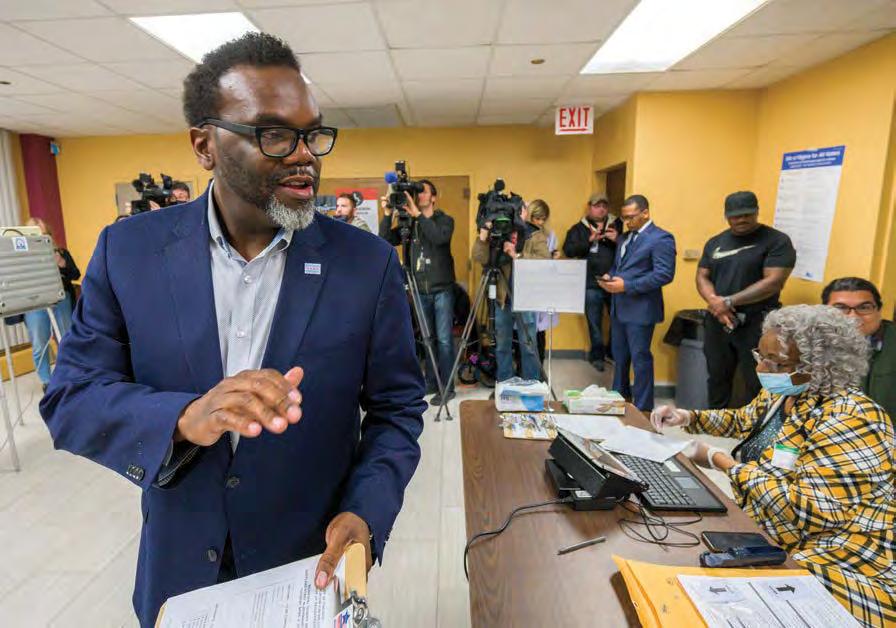
Bhatti said many of the bigger ideas contained in the propos-
al would require approval from Spring eld. Such as the transaction tax, which Gov. J.B. Pritzker already has said he opposes, arguing it would hurt the city’s economy.
Bhatti also said Johnson was not briefed in advance on the proposals, but argued that they are in line with the kinds of things the new mayor has supported as a mayoral candidate and in his public life as a Cook County commissioner and political activist. Johnson backers do not want a repeat of what happened in “prior administrations,” Bhatti said, referring to but not explicitly mentioning Lightfoot, who backed o her promise to enact a higher real estate transaction tax to raise money for a ordable housing.
“I think it’s appropriate to hold (Johnson) accountable for the promises he’s made,” Bhatti said. “Mayor Johnson ran on a platform that actually included some of these things.”
Bhatti did not indicate whether City Council members are prepared to push for such items.
Horizon Therapeutics faces few alternatives if merger with Amgen is blocked
what’s going to happen. Uncertainty is really bad for business.”
Amgen and Horizon say they intend to ght the lawsuit and aim to still close the transaction by mid-December. If the deal falls through, Amgen would be required to pay Horizon more than $974 million under their merger agreement. Additionally, Horizon CEO Tim Walbert would also lose the opportunity to reap a massive windfall of cash. Crain’s previously estimated Walbert would make about $150 million in the Amgen deal.
Failure to close the deal would leave Horizon with basically two options — nd a new buyer the FTC would approve of or nd
ways to grow as an independent company.
Horizon, which employs 2,000 people globally, including 700 in Deer eld, declined to comment on what it would do if the Amgen deal falls through.
CONCERNS
Finding a new buyer will be di cult, experts say, as Horizon would need to identify a partner that won’t trigger the FTC’s speci c concerns around market power. at would likely mean nding a smaller company to merger with, says Ezra Friedman, a professor at Northwestern University’s Pritzker School of Law.
“If it was a smaller company than Amgen, it would be easier,”
Friedman says. “ e FTC would look much more kindly on it.”
Before striking a deal with Amgen, Horizon was approached by other pharmaceutical companies, including Parisbased Sano . But Sano , with $43 billion in revenue, is even larger than Amgen, with $24.8 billion, making it a less-thanideal alternative.
“If what the FTC wrote is correct and they’re just concerned about this bundling issue, I don’t see why that’s unique to Amgen,” says Karen Andersen, a sector strategist at Morningstar.
On the other hand, if Horizon is forced to remain independent, part of its growth strategy would likely be focused on doubling down on the drugs it
already manufactures.
“A big part of it is just capitalizing on the long runway for Tepezza,” Andersen says. It would also need to spur organic growth with research and development, especially as some of their drugs, including Krystexxa, near losing exclusivity. To o set competitive losses, Horizon would either need to acquire smaller biotech rms developing new drugs or develop new medications on its own. However, Horizon notably grew to its size without licensing any of its own drugs.
“ ey’ll need to the look at the playbook for other pharmas like them, which is to nd new drugs and requires either buying them or discovering them,” says Na-
than Ray, a partner at Chicago consulting rm West Monroe. Horizon could break itself up by spinning o critical drugs into standalone companies, but Lys says there is no guarantee that would attract FTC approval either if the drugs at issue still spark anticompetitive concerns. With the lawsuit, the FTC also voted to implement a temporary restraining order and preliminary injunction, meaning the merger is on hold.
In the meantime, while Horizon and Amgen await their fate, the two companies could watch their stock prices fall. Horizon’s stock fell more than 15% on May 16 before recovering some of its losses. Meanwhile, Amgen’s stock lost about 3% that day.
CRAIN’S CHICAGO BUSINESS • MAY 22, 2023 57
3
JOHNSON from Page
AMGEN from Page 3
Johnson during the campaign made a point of saying his plan does not include a city income tax, and had promised to cut “not one penny” from CPD.
JOHN R. BOEHM
Starbucks union battle spotlights dual roles played by Ariel’s Mellody Hobson
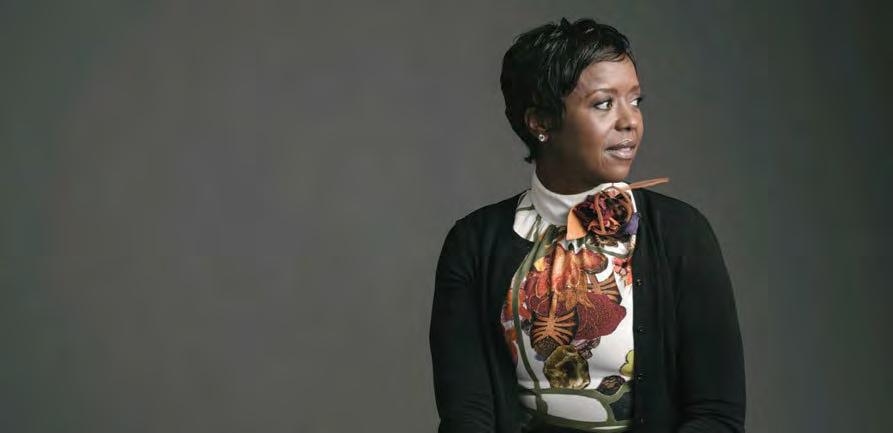
HOBSON from Page 1
President of Ariel Investments LLC and my role as Non-Executive Chairman of Starbucks. I serve both with my whole self, one that is not compartmentalized to conform to any speci c situation or expectation.”
Ariel’s clients include two of the largest public pension funds in the U.S. that cover thousands of unionized New York state teachers and state and local municipality employees. Ariel oversees $357 million from the New York State Common Retirement Fund and $298 million from the New York State Teachers’ Retirement System.
In Chicago, Ariel manages hundreds of millions of dollars for pension funds covering union workers including Chicago public school teachers, Illinois university professors, laborers and Cook County workers. Overall, union worker pension money represents a sizable chunk of Ariel’s $17.1 billion in assets under management.
Starbucks has made headlines over its handling of union e orts to organize workers at Starbucks stores across the country, landing former CEO Howard Schultz before a U.S. Senate committee to address the company’s labor practices, which, during the hear-
ing, Sen. Bernie Sanders called “the most aggressive and illegal union-busting campaign in the modern history of our country.”
In April, prosecutors at the National Labor Relations Board alleged that Starbucks refused to negotiate in good faith at more than 100 newly unionized cafes.
In response, a spokesperson for Starbucks told Bloomberg that the union has “consistently engaged in conduct that has unnecessarily delayed progress toward rst contracts.”
At a 2022 shareholder meeting, Hobson rejected a call by a group of investors for Starbucks
to “pivot towards neutrality and supporting workers’ rights to organize.” Neutrality, she said, “limits our ability to speak to our partners in certain ways, and that goes directly against the DNA of the company.”
SHAREHOLDER CONCERN
Recently, Starbucks shareholders voted in favor of a proposal to review its “worker rights commitments,” indicating their concern with the company’s ongoing tough stance with labor unions.
e high-pro le nature of Starbucks’ e orts to thwart organized
labor, and Hobson’s role as company chairman, presents a challenge for labor leaders, Bruno says.
“It actually creates a real dilemma for organized labor,” he said. “On one hand that money has to be well invested and on the other hand the labor movement also stands for a certain set of values about how workers should be treated.”
Chicago Teachers Union President Stacy Davis Gates has been a vocal supporter of Starbucks workers’ organizing e orts. In 2022 she was a featured speaker at a rally in Federal Plaza to cel-
ebrate the one-year anniversary of the rst organizing e ort at a Starbucks in Bu alo, N.Y. In a brief speech, she told the crowd of co ee workers and supporters that CTU’s “got your back.”
While CTU would not answer direct questions about Hobson’s roles at Starbucks and Ariel, Gates said in a statement that the union is “doing everything we can to ensure that Starbucks workers’ voices are heard and that they are extended the right to collectively bargain a fair contract with Starbucks management.”
A CTU spokesman added that there will likely be a resolution by the CTU’s House of Delegates speci cally addressing Hobson’s dual roles in the coming months. A resolution would then be heard by a 12-member board of trustees, who ultimately govern the pension fund.
It wouldn’t be surprising for Gates to make Hobson her next target, Bruno says, because “she’s been out there supporting the Starbucks workers.”
And if the controversy causes Ariel to lose union pension clients, “I think it would be a huge embarrassment,” Bruno says. “I’m sure she sees those union investments along with minority business investments and the new equity fund as part of their reputation and brand.”
58 MAY 22, 2023 • CRAIN’S CHICAGO BUSINESS Nominate a woman creating a measurable impact in the field of science, technology, engineering or math. Nominations Due July 14 ChicagoBusiness.com/NotableNoms
AT A 2022 SHAREHOLDER MEETING, HOBSON REJECTED A CALL BY A GROUP OF INVESTORS FOR STARBUCKS TO “PIVOT TOWARDS NEUTRALITY AND SUPPORTING WORKERS’ RIGHTS TO ORGANIZE.”
BLOOMBERG
A Lincoln Park condo designed with ‘a warm modernity’

The homeowners complemented a 70-foot expanse of glass with a sophisticated palette of tigerwood, Jerusalem limestone and lacquered cabinetry. They’re asking a little under $4.3 million for the home.



A70-foot expanse of glass that turns a corner and adds several feet more makes this Lincoln Park home “very light and bright,” says Gail Marks, who owns it with her husband, Andrew Marks.


A four-bedroom, roughly 4,500-square-footer on the third oor of a seven-unit co-op building on Grant Place, it’s coming on the market in the coming weeks. Listed with Joanne Nemerovski of Compass, it will be priced just under $4.3 million.

e couple bought the space new in 2007 and nished it to their speci cations, which Gail Marks describes as “a family home with a warm modernity.” e developer’s use of glass and openness got the modernity rolling, and the Markses warmed it up with a sophisticated palette of tigerwood panels, lacquered cabinetry and Jerusalem limestone.
e location, half a block from the Francis Parker School and another block to the Lincoln Park Zoo, worked particularly well when they were raising two children. “Having our two daughters able to walk to school starting in third grade and having that park nearby was really something for the quality of our lives,” Gail Marks says. She’s been an at-home mom, and Andrew Marks is in nance.
With the children grown, the couple is moving to Florida.
Because the building has just seven units, “it feels like home when we walk into the lobby,”
Gail Marks says, “not like some ginormous tower.”
e 70-foot expanse of glass includes a portion that is set back, creating a covered balcony that “becomes part of the living space” because of its integral spot in the oor plan, she says.
ere’s a second, longer balcony around the corner. e two balconies “give us outdoor space, as opposed to just living in a box,” she says.
e longest glass wall faces south, which makes the interior bright in gloomy Chicago winters. Finishing the space after they bought it from developer Belgravia, “we leaned toward a warmer palette,” Gail Marks says, anchoring the transparency of the windows with heavier tigerwood panels both in the living room and in the family room.

e oors are walnut and the replace wall is Jerusalem limestone, which shows up again elsewhere in the home.
e developer’s plans for the home included a spacious laundry room, but Gail Marks wasn’t having that. “My husband collects wine, and I thought it would be great to have a proper wine cellar,” she says.
ere’s room for about 2,400 bottles. “Any oenophile would go bananas for this,” she says, and be unlikely to swoon about the laundry room, which is next door and about half this size.
Atop the four-story building is a common element for all seven units, a rooftop deck with a view over treetops to the downtown skyline. “We’re on this quiet street with the park and the lake and Parker,” Gail Marks says. “It’s easy living.”
I
BY DENNIS RODKIN
CRAIN’S CHICAGO BUSINESS • MAY 22, 2023 59 EDITORIAL 312-649-5200 CUSTOMER SERVICE 877-812-1590 ADVERTISING 312-649-5492 CLASSIFIED 312-659-0076 REPRINTS 212-210-0707 editor@chicagobusiness.com Vol. 46, No. 21 – Crain’s Chicago Business (ISSN 0149-6956) is published weekly, except for the rst week of July and the last week of December, at 130 E Randolph St Suite 3200, Chicago, IL 60601 $3 50 a copy, $169 a year Outside the United States, add $50 a year for surface mail Periodicals postage paid at Chicago, Ill Postmaster: Send address changes to Crain’s Chicago Business, 1155 Gratiot Ave Detroit, MI 48207 Four weeks’ notice required for change of address. © Entire contents copyright 2023 by Crain Communications Inc. All rights reserved. HOW TO CONTACT CRAIN’S CHICAGO BUSINESS
PHOTOS PROVIDED BY COMPASS
“WE’RE ON THIS QUIET STREET WITH THE PARK AND THE LAKE AND (FRANCIS PARKER SCHOOL). IT’S EASY LIVING.”
Gail Marks, owner


 BY DANNY ECKER
BY DANNY ECKER












































































































































 Joe Wronka COO/VP – Advancement
& CEO
Joe Wronka COO/VP – Advancement
& CEO

















































































































 Executive Director
Executive Director
















































































































 Shoreibah Chief Financial Of cer
Shoreibah Chief Financial Of cer

 Chief Information Of cer
Chief Information Of cer























